inbox and environment News: Issue 543
June 19 - 25, 2022: Issue 543
Northern Beaches Clean Up Crew: Council Policy Disconnect On Balloons

Multi Layered Coastal Assessment Careel Bay: First Study Session
Sydney Metropolitan Wildlife Services: Possums In Your Roof

Pelicans Heading To The Coast Now: Winter Migrations
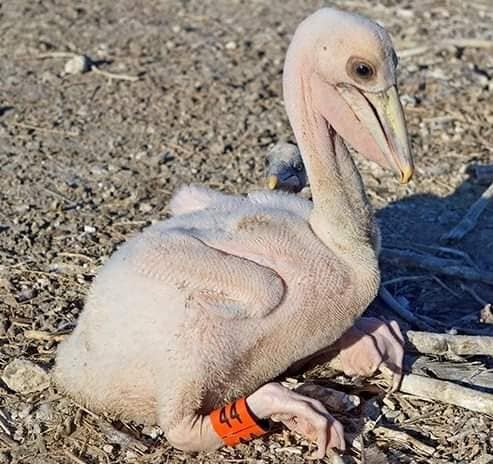
Pittwater Natural Heritage Association (PNHA) Walks
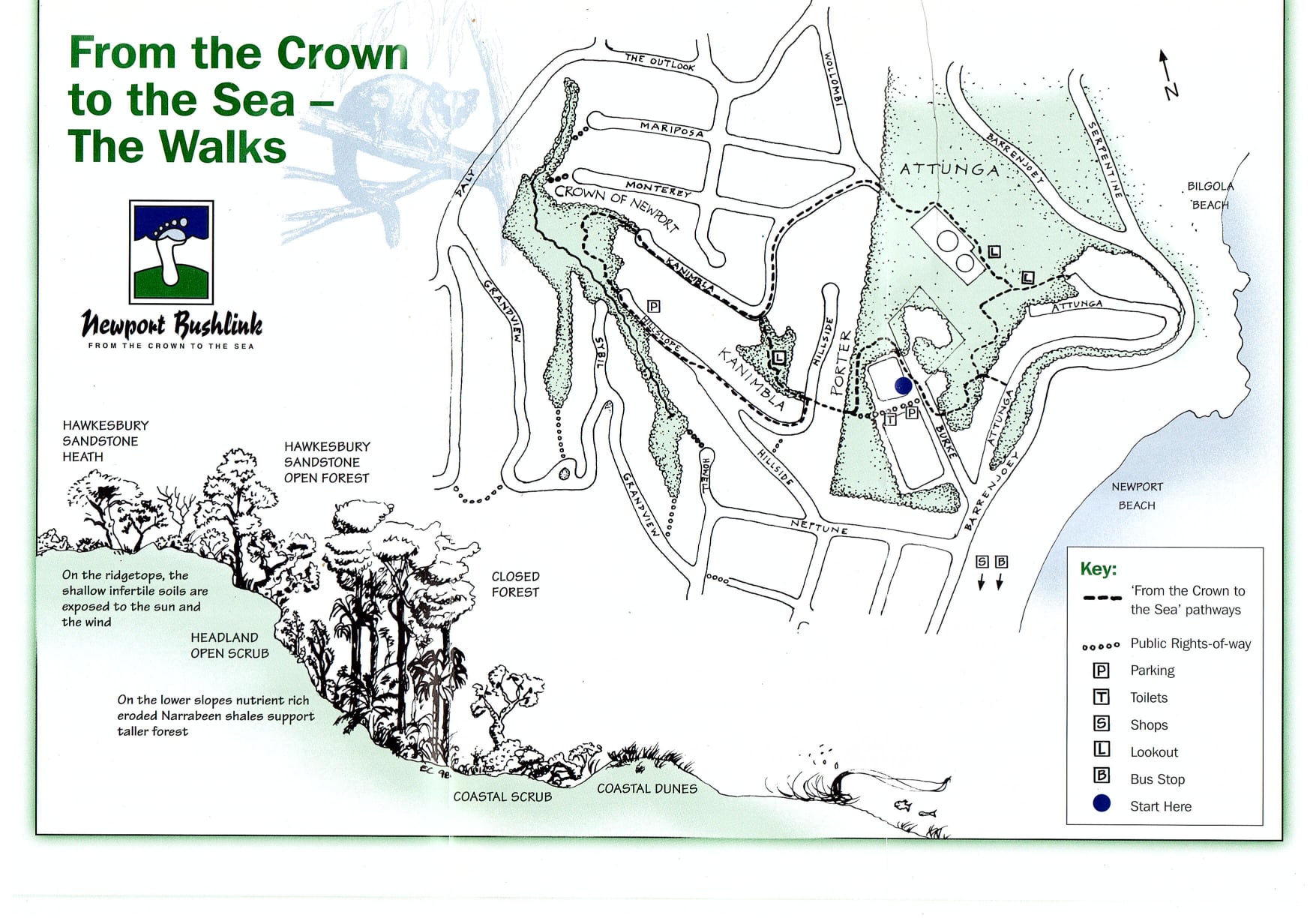
Chemical Clean Out: June 2022 At Mona Vale
Living Ocean Traditional Welcome To Country For The Southern Humpback Whale Migration: June 24
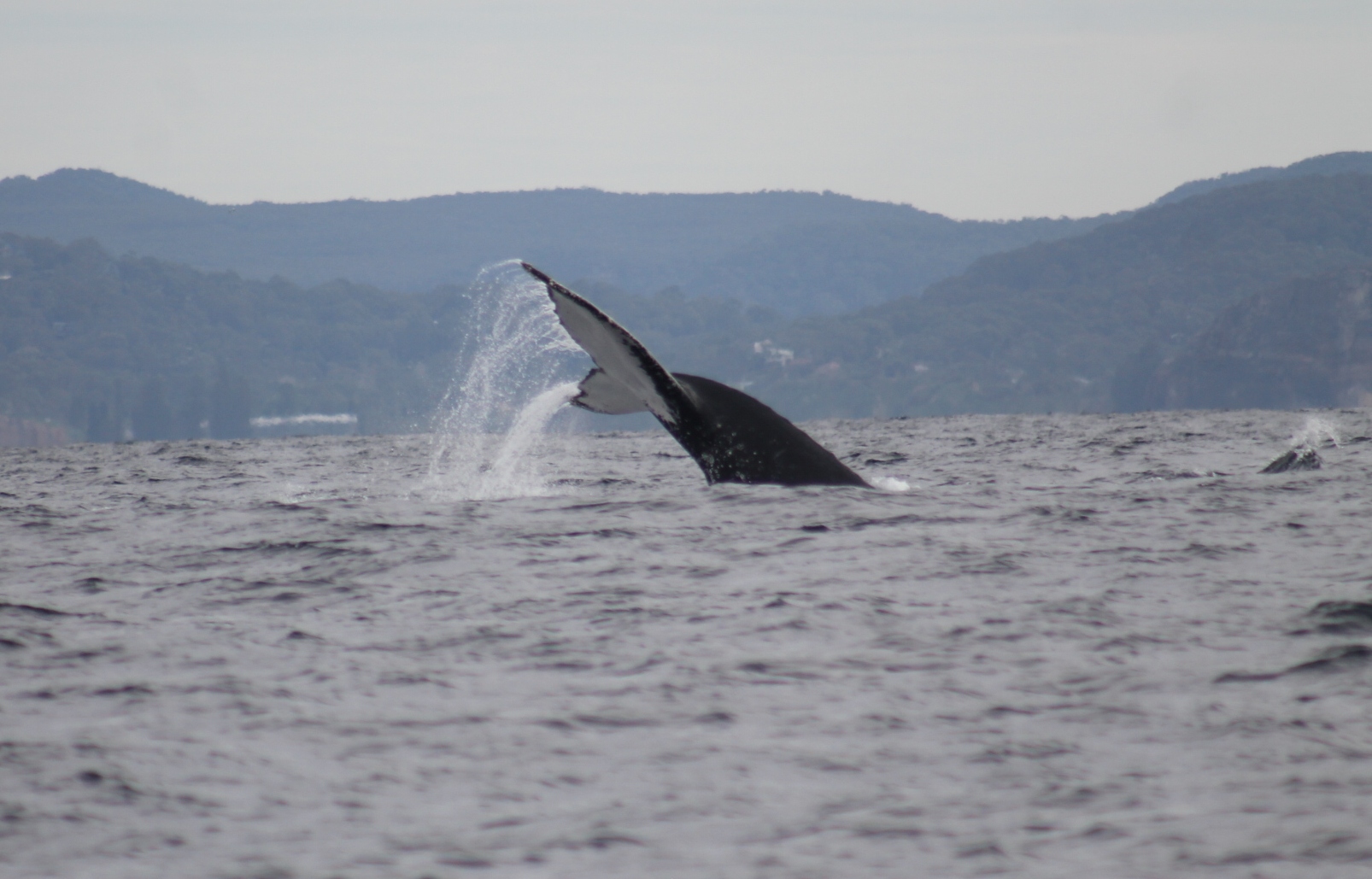

Northern Beaches Clean Up Crew: Narrabeen - June 26
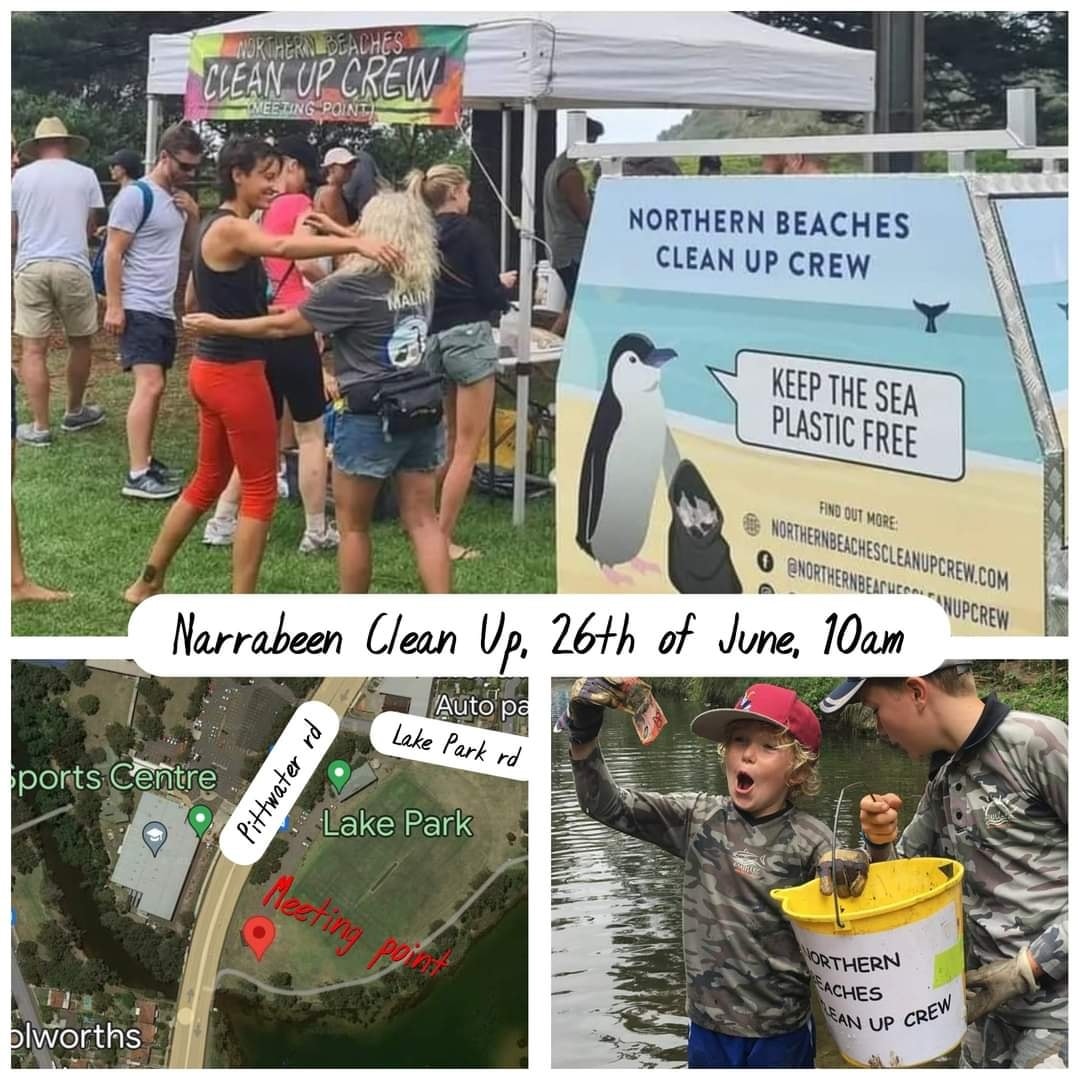
Barrenjoey Lighthouse Tours
Local Wildlife Rescuers And Carers State That Ongoing Heavy Rains Are Tough For Us But Can Be Tougher For Our Wildlife:
- Birds and possums can be washed out of trees, or the tree comes down, nests can disintegrate or hollows fill with water
- Ground dwelling animals can be flooded out of their burrows or hiding places and they need to seek higher ground
- They are at risk crossing roads as people can't see them and sudden braking causes accidents
- The food may disappear - insects, seeds and pollens are washed away, nectar is diluted and animals can be starving
- They are vulnerable in open areas to predators, including our pets
- They can't dry out and may get hypothermia or pneumonia
- Animals may seek shelter in your home or garage.
You can help by:
- Keeping your pets indoors
- Assessing for wounds or parasites
- Putting out towels or shelters like boxes to provide a place to hide
- Drive to conditions and call a rescue group if you see an animal hit (or do a pouch check or get to a vet if you can stop)
- If you are concerned take a photo and talk to a rescue group or wildlife carer
There are 2 rescue groups in the Northern Beaches:
Sydney Wildlife: 9413 4300
WIRES: 1300 094 737
Please be patient as there could be a few enquiries regarding the wildlife.
Generally Sydney Wildlife do not recommend offering food but it may help in some cases. Please ensure you know what they generally eat and any offerings will not make them sick. You can read more on feeding wildlife here
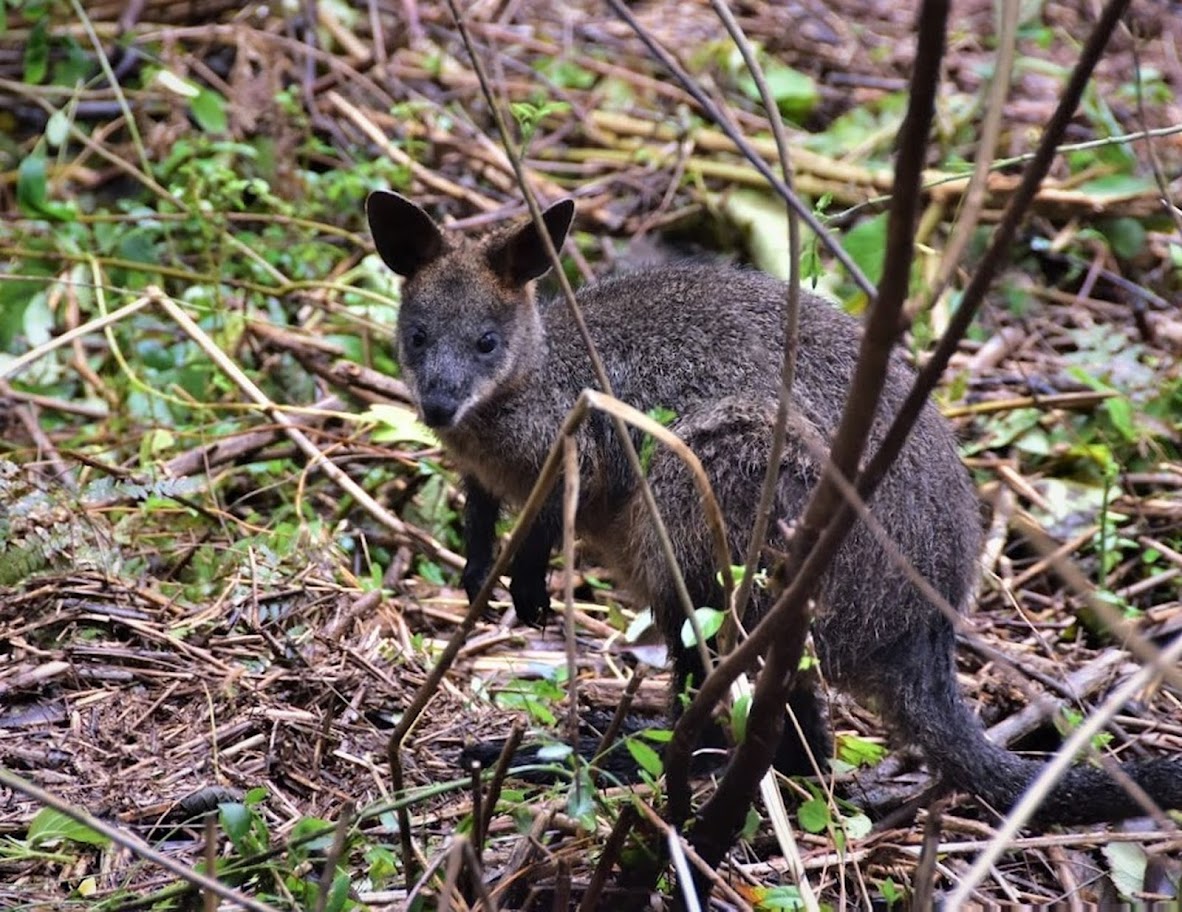
Information courtesy Ed Laginestra, Sydney Wildlife volunteer. Photo: Warriewood Wetlands Wallaby by Kevin Murray, March 2022.
Aviaries + Possum Release Sites Needed

Sydney Wildlife Rescue: Helpers Needed
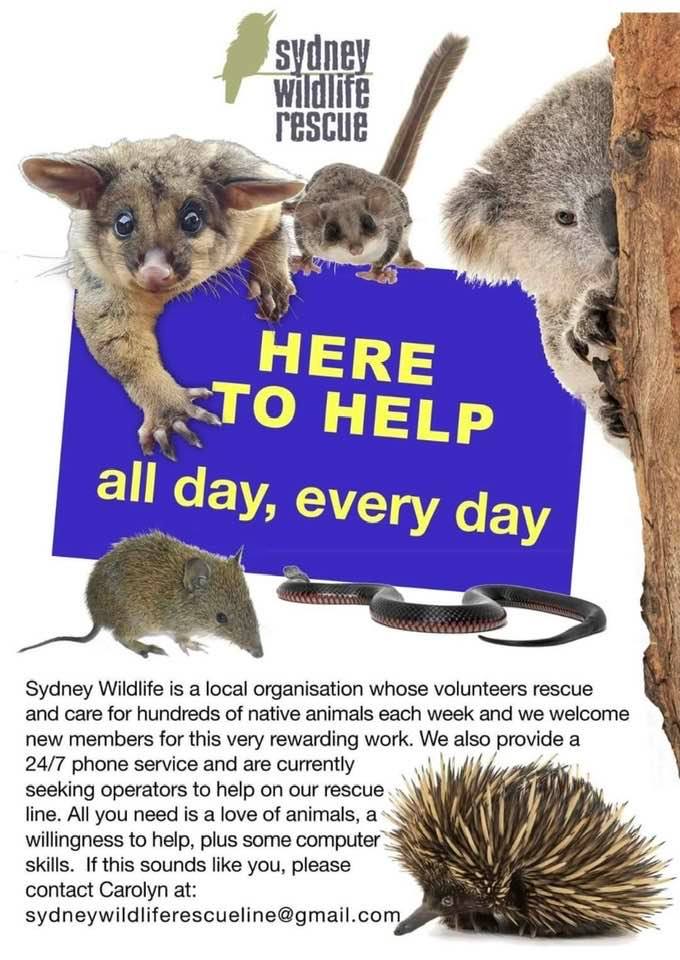
Bushcare In Pittwater
Where we work Which day What time
Avalon
Angophora Reserve 3rd Sunday 8:30 - 11:30am
Avalon Dunes 1st Sunday 8:30 - 11:30am
Avalon Golf Course 2nd Wednesday 3 - 5:30pm
Careel Creek 4th Saturday 8:30 - 11:30am
Toongari Reserve 3rd Saturday 9 - 12noon (8 - 11am in summer)
Bangalley Headland 2nd Sunday 9 to 12noon
Bayview
Winnererremy Bay 4th Sunday 9 to 12noon
Bilgola
North Bilgola Beach 3rd Monday 9 - 12noon
Algona Reserve 1st Saturday 9 - 12noon
Plateau Park 1st Friday 8:30 - 11:30am
Church Point
Browns Bay Reserve 1st Tuesday 9 - 12noon
McCarrs Creek Reserve Contact Bushcare Officer To be confirmed
Clareville
Old Wharf Reserve 3rd Saturday 8 - 11am
Elanora
Kundibah Reserve 4th Sunday 8:30 - 11:30am
 Mona Vale
Mona Vale Mona Vale Beach Basin 1st Saturday 8 - 11am
Mona Vale Dunes 2nd Saturday +3rd Thursday 8:30 - 11:30am
Newport
Bungan Beach 4th Sunday 9 - 12noon
Crescent Reserve 3rd Sunday 9 - 12noon
North Newport Beach 4th Saturday 8:30 - 11:30am
Porter Reserve 2nd Saturday 8 - 11am
North Narrabeen
Irrawong Reserve 2nd Saturday 2 - 5pm
Palm Beach
North Palm Beach Dunes 3rd Saturday 9 - 12noon
Scotland Island
Catherine Park 2nd Sunday 10 - 12:30pm
Elizabeth Park 1st Saturday 9 - 12noon
Pathilda Reserve 3rd Saturday 9 - 12noon
Warriewood
Warriewood Wetlands 1st Sunday 8:30 - 11:30am
Whale Beach
Norma Park 1st Friday 9 - 12noon
Western Foreshores
Coopers Point, Elvina Bay 2nd Sunday 10 - 1pm
Rocky Point, Elvina Bay 1st Monday 9 - 12noon
Gardens And Environment Groups And Organisations In Pittwater
Truckloads Of Flood Debris Removed From The Hawkesbury Area
Budget Boost To Keep Lord Howe Island Pest Free
- the population of Lord Howe Woodhens has more than doubled
- there are increased numbers and breeding success for birds such as the black-winged petrel, masked booby and Lord Howe currawong
- endemic ground geckos and invertebrates such as land snails are recovering
- numerous plant species including the critically endangered little mountain palm have increased seedling and seed numbers.
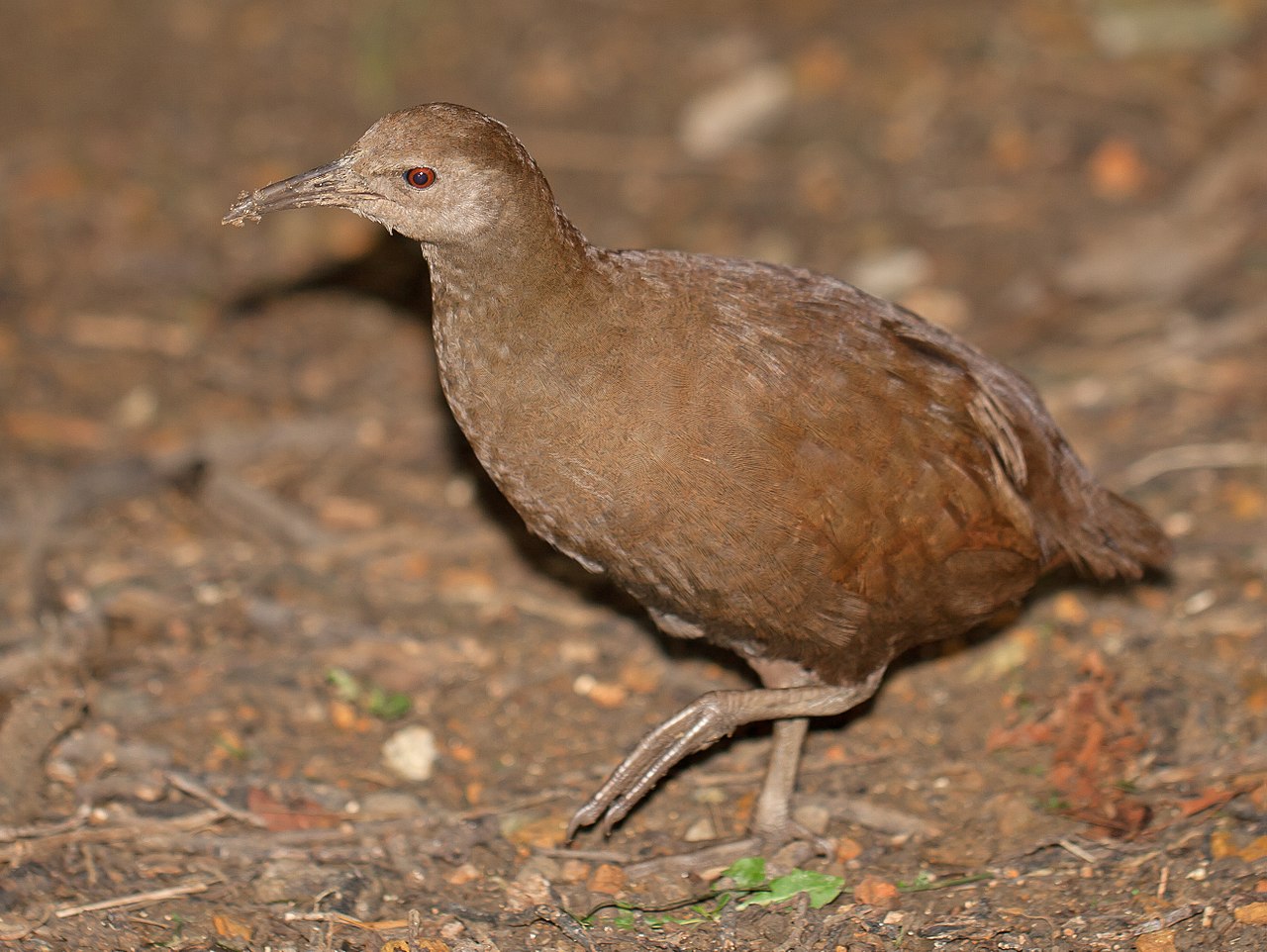
Massive Investment In Bushfire Management And Climate Change Adaptation
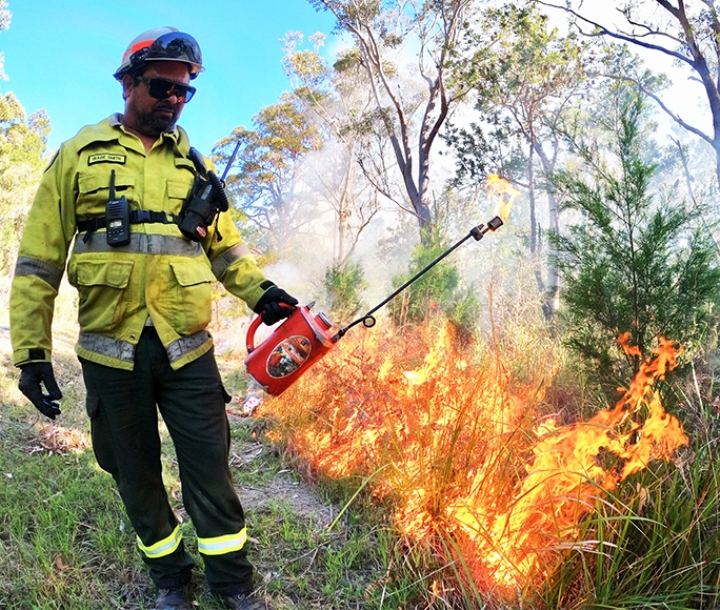 The 2022-23 NSW Budget is delivering a major boost to fire management in national parks through a $598 million investment, delivering 250 permanent jobs and critical infrastructure upgrades.
The 2022-23 NSW Budget is delivering a major boost to fire management in national parks through a $598 million investment, delivering 250 permanent jobs and critical infrastructure upgrades.- 250 permanent jobs from July 2023, including 200 firefighters and 50 roles to meet new statutory requirements for protecting Assets of Intergenerational Significance (AIS) across the national parks estate
- $27.7 million over 4 years to upgrade the radio network
- $4.5 million over 4 years for safety upgrades to the NPWS fleet
Environmental Conservation Through Biodiversity Credits
Dendrobium Mine Expansion Plan Still Poses Unacceptable Risks To Drinking Water And Climate
Developing Santos’s Narrabri Gas Field Will Accelerate Climate Change, Poison Aquifers, And Destroy Wildlife Habitat
Forestry Corporation NSW Fined For Forestry Activities In Exclusion Zones Near Coffs Harbour - Destroying Koala Habitat
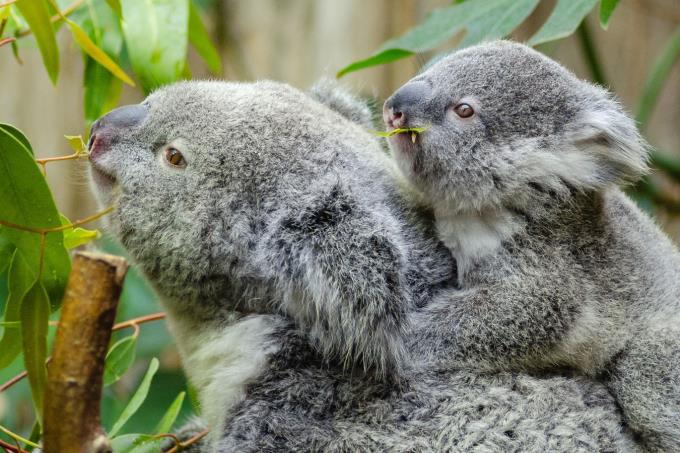 Fines and costs totalling $285,600 have been levelled against Forestry Corporation NSW (FCNSW) after the Land and Environment Court found tree felling in exclusion zones had done “actual harm” to koala habitat in Wild Cattle Creek Forest near Coffs Harbour.
Fines and costs totalling $285,600 have been levelled against Forestry Corporation NSW (FCNSW) after the Land and Environment Court found tree felling in exclusion zones had done “actual harm” to koala habitat in Wild Cattle Creek Forest near Coffs Harbour. Australian frogs are dying en masse again, and we need your help to find out why
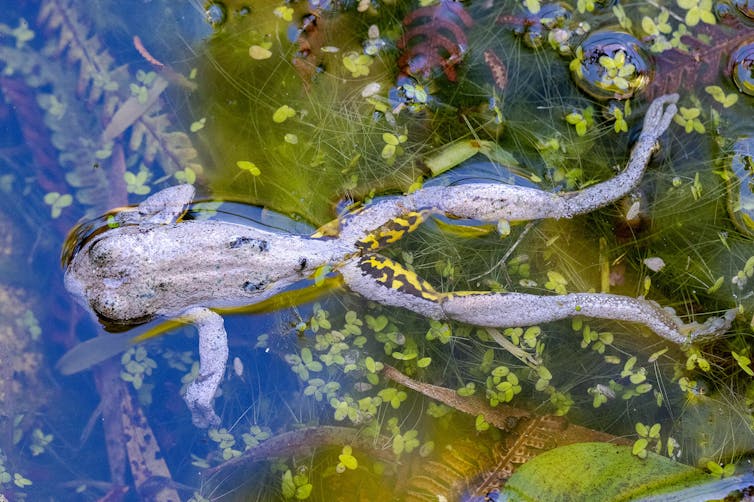
Last winter, thousands of dead and dying frogs were found across Australia. Instead of hunkering down and out of sight, frogs were spotted during the day in the open, on footpaths, highways and doorsteps – often in the blazing sun.
These frogs were often thin, slow moving, and with dark patches on their back or red bellies. They were seeking water in pet bowls or pot plants. And they usually died in a matter of hours.
A crash in frog populations could have very real consequences, particularly for already threatened frog species, and the importance of frogs in both freshwater and land systems means it can also impact entire ecosystems.
Thankfully, reports of sick or dead frogs slowed as the weather got warmer, and by the end of last year they had all but ceased. We hoped the awful spate of frog deaths was a one-off. But now, we fear it is happening again.
In the last few weeks, we’ve started getting scarily similar reports of sick and dead frogs from people across Australia.
From Warwick in southeast Queensland, we’ve received emails reporting green tree frogs (Litoria caerulea), discoloured and hunched up, sitting in the open, with the upsetting email:
We normally have these beautiful creatures hopping around our house but in the last week have only spotted two. Both were dead.
From Sydney’s North Shore, another report:
I have just found a dead Peron’s tree frog when raking up leaves in my garden.
And most recently, one of our colleagues stumbled across a big green tree frog in the middle of the day while bird-watching in western Sydney. The bright green frog was sitting in the sun on an asphalt path. In only a few hours, the frog was dead.
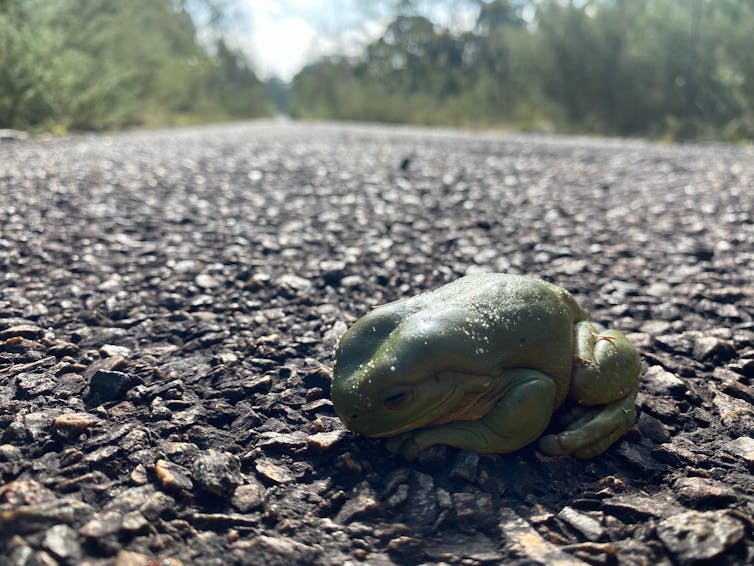
How Many Frogs Died Last Year?
Photos of sick frogs started popping up on social media feeds in May last year. This was not initially alarming, as sick, old or injured frogs are most likely to die in winter as their immune system slows down.
However, reports increased over late June and July, and we began to worry about just how many frogs were dying. Unfortunately, just as we began to worry, we were in lockdown, unable to venture out and investigate for ourselves.
So we asked the community for help. We asked for reports of sick or dead frogs, and then aligned members of the public with local veterinary clinics willing to take in these frogs for examination, care and diagnostic sample collection.
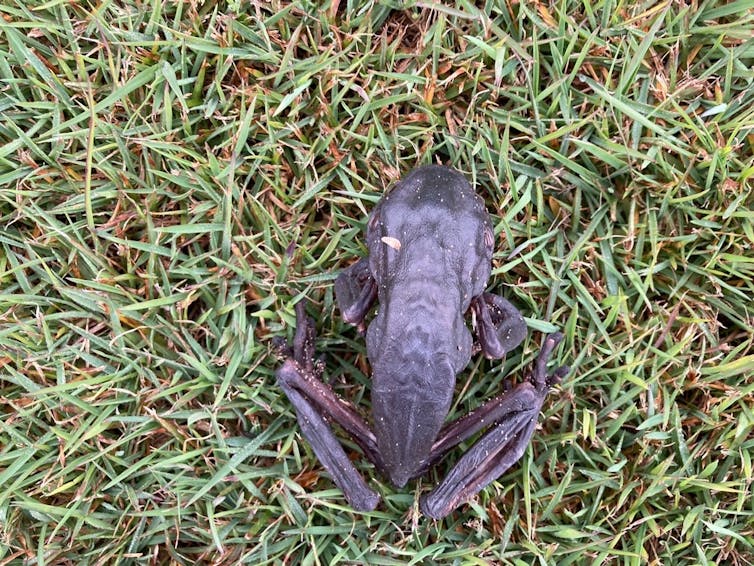
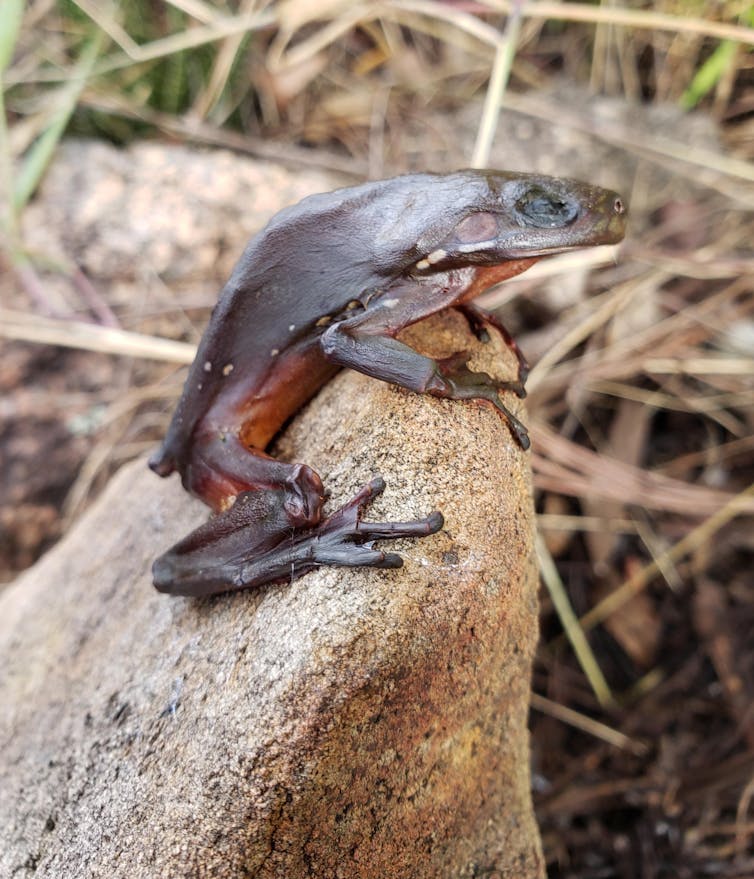
This meant the welfare of frogs could be assured, and we could begin our scientific investigation into the cause once lockdown ended.
Reports came flooding in. Across Australia, a remarkable 1,600 people reported finding sick or dead frogs. Each report often described dozens of dead frogs, making the grim tally in the thousands.
Although most sick and dead frogs reported were green tree frogs, this is likely because this species tends to hang around houses and be spotted more. Frog species less tolerant of suburbia are far less likely to be seen.
Despite this, more than 40 species were reported, including threatened species such as the green and golden bell frog (Litoria aurea) and the giant barred frog (Mixophyes iteratus).
The true death count and full list of species impacted is likely to be orders of magnitude higher.

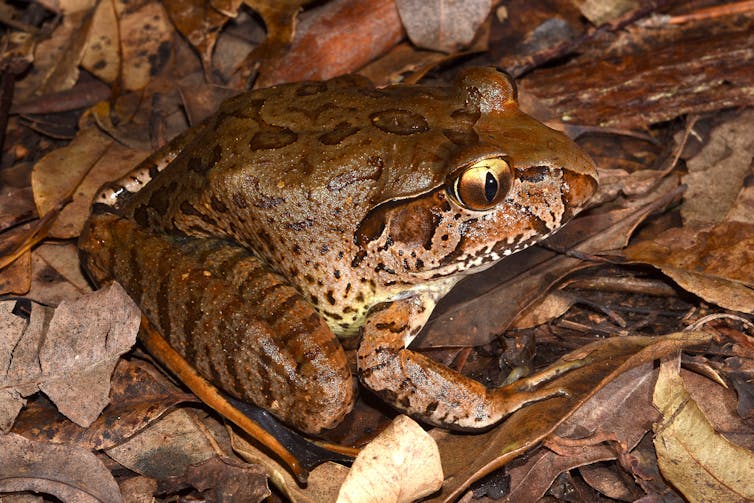
Why Are The Frogs Dying?
We’ve been working with universities, government biosecurity and environment agencies to understand just what caused frogs to die last winter.
Our investigation has only been made possible due to the efforts of people across Australia reporting sick and dead frogs, taking sick frogs to veterinary clinics and freezing dead frogs for us to pick up and test ourselves.
In New South Wales alone, more than 350 people froze dead frogs for us to collect. Without this help, we would still be at square one with our investigation.
It’s a murder mystery, and there are so many possible suspects. We’ve been testing for parasitic, bacterial, viral and fungal pathogens. These tests include looking for pathogens known to kill frogs, and also looking for possible novel pathogens, which is by far the harder task. The potential role of toxins is also being assessed.
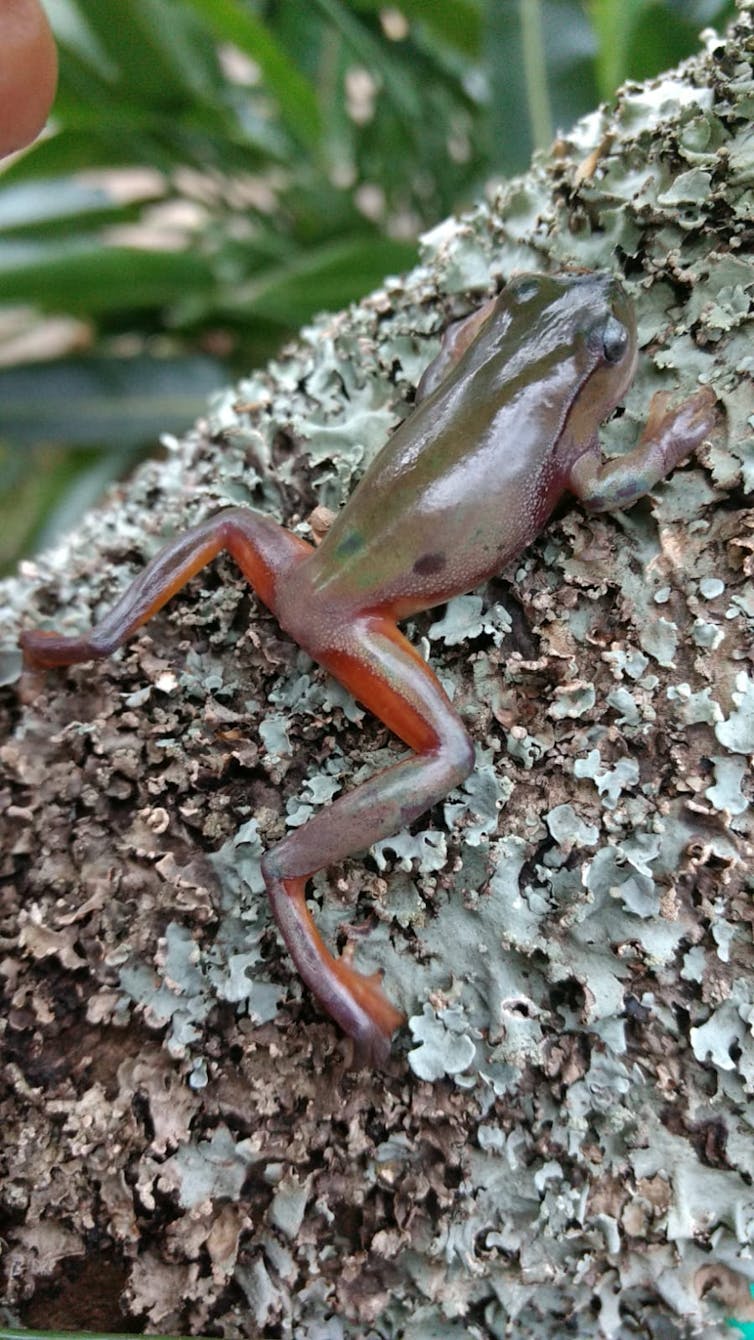
Right from the very first frog deaths last year, our number one suspect has been the amphibian chytrid fungus (Batrachochytrium dendrobatidis). This pathogen is a known frog killer, responsible for causing frog population declines and species extinctions around the world, including in Australia.
The fungus attacks the skin of frogs, which is their Achilles heel – frogs use their skin to breathe, drink and control electrolytes. Deaths of frogs due to this pathogen are often at cooler temperatures.
Our testing has revealed the amphibian chytrid fungus is certainly involved in this mass death event. Most of the hundreds of dead frogs tested so far have tested positive for the pathogen.
But we aren’t yet sure if the fungus is acting alone, or even the primary cause of death. We continue to test for an array of other pathogens, toxins and other potential stressors.
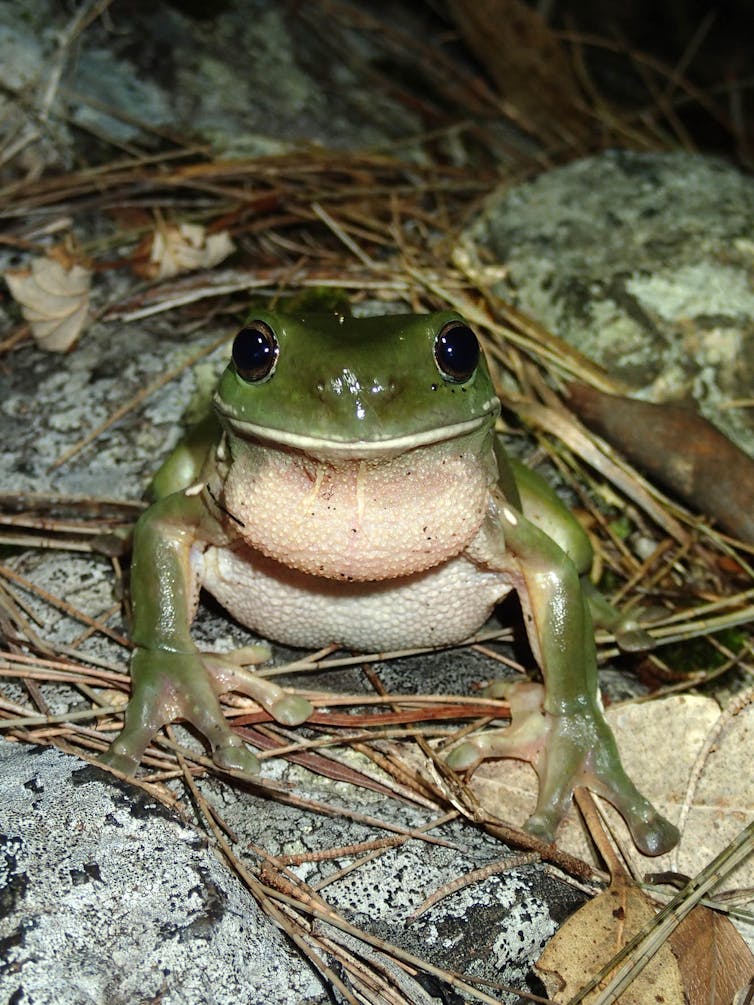
Why Should We Care?
Australia has 247 known species of native frog, 40 of which are threatened with extinction, and at least four species are already extinct.
The impacts on Australia’s frog species from such large scale deaths are unknown, but scientific surveys of frogs, combined with large scale citizen science data are underway.
Frogs are often extremely abundant, and play an important role in the flow of energy and nutrients, and in food webs. In places where amphibians have declined, the impacts are noticeable, with ripple effects across entire ecosystems as animals that rely on frogs for food start to disappear, too.
We Need Your Help
To help us understand the scale and cause of any frog deaths this winter, please send any reports of sick or dead frogs to the Australian Museum’s citizen science project FrogID via calls@frogid.net.au.
Please include your location and, if possible, photos of the frog(s).
To help us determine the impact of frog deaths on Australia’s frogs, and which species are likely to need our help the most, please download the free FrogID app and record calling frogs whenever you can.
Every recording will help us better understand and conserve Australia’s frogs.![]()
Jodi Rowley, Curator, Amphibian & Reptile Conservation Biology, Australian Museum, UNSW Sydney and Karrie Rose, Australian Registry of Wildlife Health - Taronga Conservation Society Australia, University of Sydney
This article is republished from The Conversation under a Creative Commons license. Read the original article.
This critically endangered marsupial survived a bushfire – then along came the feral cats
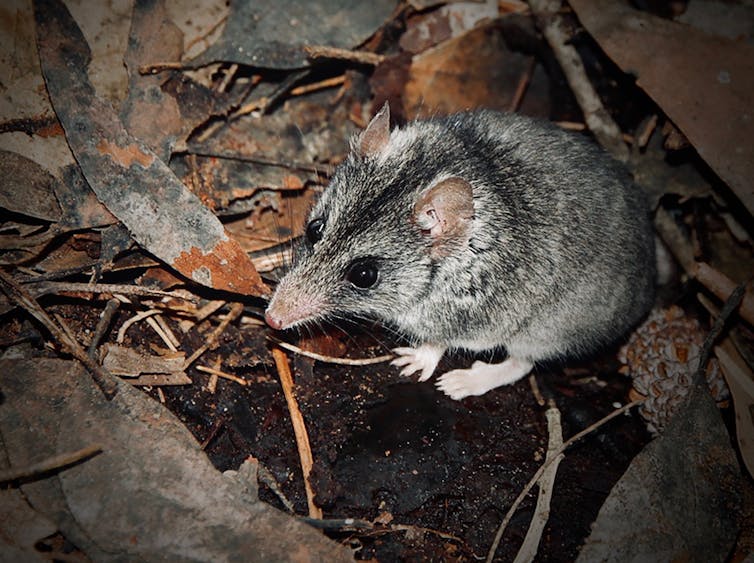
The Black Summer bushfires of 2019-20 pushed a host of threatened species closer to extinction, including the critically endangered Kangaroo Island dunnart. And as our research released today shows, feral cats posed a second lethal threat to the species in the weeks after the disaster.
The Kangaroo Island dunnart is a mouse-sized marsupial found only on the western end of the island. Bushfires in January 2020 burnt more than 98% of its habitat. The dunnart population was thought to be about 500 before the fire; its current numbers are being surveyed but are thought to have since declined even further.
Cat predation has caused the extinction or near-extinction of several native species around the globe. Our results confirm for the first time that feral cats prey on the dunnart and did so directly after the bushfires.
The findings underscore the importance of acting immediately to protect threatened species from predators in the wake of catastrophic natural events.
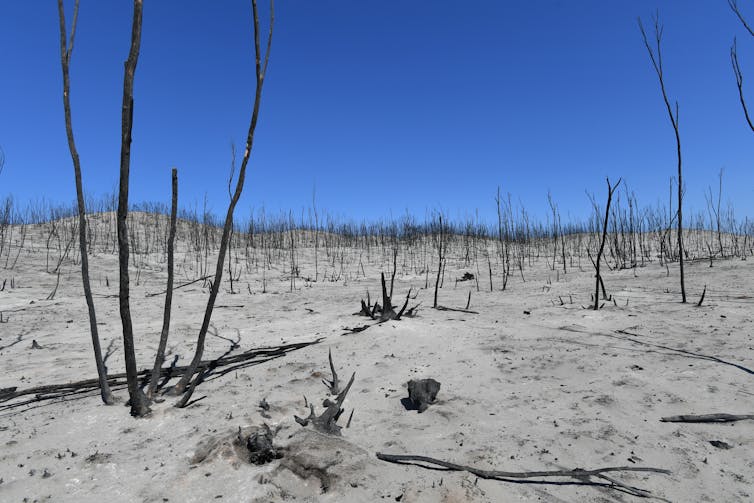
Analysing Feral Cat Diets
Before the Black Summer fires, the Kangaroo Island dunnart’s habitat was fragmented due to land clearing and other pressures. Feral cats on the island were also suspected of contributing to the species decline, but this had not been proven.
A federally funded feral cat eradication program has been in place since 2015, and aims to make Kangaroo Island free of feral cats by 2030.
A 2020 study estimated there were between 1,000 and 2,300 feral cats on Kangaroo Island. We set out to determine whether cats threatened the dunnart.
We analysed the diet of feral cats humanely euthanised immediately after the 2019 bushfire. We accessed the stomach contents and digestive tracts of 86 cats captured between February and August 2020.
The cats were not killed for our study, but as part of the national feral cat control program and were euthanised in accordance with South Australia animal welfare laws. They were caught in unburnt areas where dunnarts and other species that survived the fire would likely have sought refuge.
We identified 263 distinct prey items in the cats’ stomachs and digestive tracts. They comprised:
- 195 mammals
- 46 birds
- 10 reptiles
- 12 arthropods (invertebrates such as beetles).
Among them, the introduced house mouse represented the most significant proportion, being part of the diet for 47 cats.
We found the remains of eight Kangaroo Island dunnarts in seven different cats. Three dunnarts were readily identifiable as they were nearly whole carcasses. Five more were identified based on hair features.
We observed dunnart tissue in both the stomach and large intestine of one cat, suggesting it had recently preyed on at least two individuals.
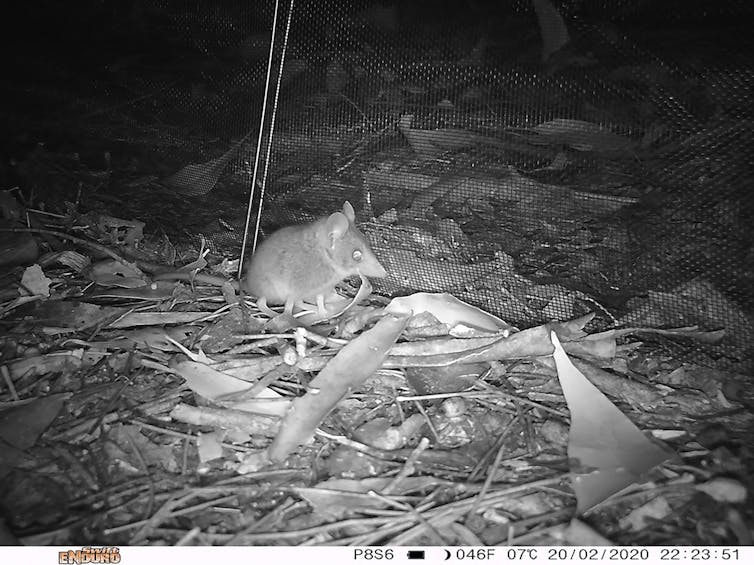
Our results confirm for the first time that feral cats prey on Kangaroo Island dunnarts and were efficient hunters of this species directly after the fires.
Our results provides only a small snapshot of what the feral cat had eaten. That’s because once the prey is fully digested (between 27 and 36 hours after being caught) we cannot analyse it. So the cats may well have recently consumed more prey than we could identify.
Safe to say, the cats present a substantial threat to the dunnart. We also found the remains of the endangered southern brown bandicoot in a male cat’s stomach. This endangered species is likely the last out of eight native bandicoot species still living in the wild in South Australia.
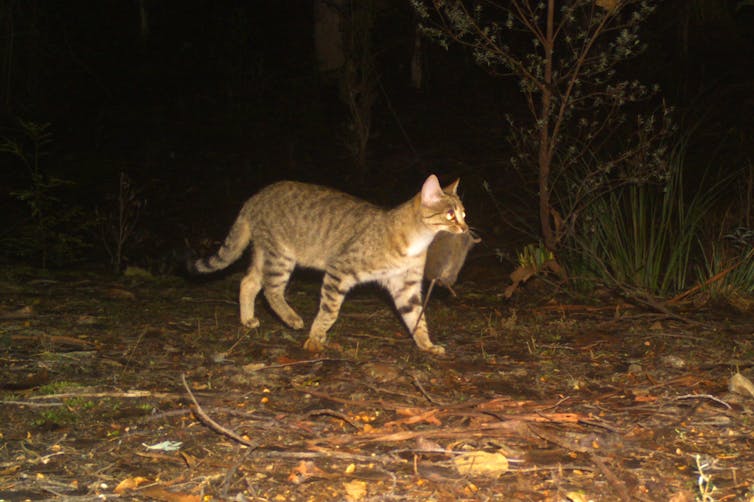
Saving The Most Vulnerable
The Kangaroo Island dunnart is emblematic of challenges faced by threatened species across the world – especially those confined to increasingly fragmented habitats, coping with the catastrophic consequences of climate change and preyed on by introduced species.
Species already compromised can easily slide into extinction after disasters such as the Black Summer fires – the likes of which are predicted to become more frequent as the world warms and dries.
After such events, we must act immediately to protect vulnerable species from invasive predators. These measures can mean the difference between survival and extinction.
But prevention is better than cure, and we should not wait until after a catastrophic event to protect our most threatened fauna.![]()
Louis Lignereux, Researcher, University of Adelaide
This article is republished from The Conversation under a Creative Commons license. Read the original article.
Keen to retrofit your home to lower its carbon footprint and save energy? Consider these 3 things

If you’re anything like me, you’re increasingly working from home, one that was built before energy efficiency measures were introduced in Australia.
With temperatures along the east coast plunging and power bills skyrocketing, heating (and cooling) our homes is an energy intensive, expensive affair.
Almost 8 million homes across Australia lack sufficient insulation, use sub-par heating and cooling equipment, or are badly designed.
Indeed, these 8 million pre-energy rated homes account for 18% of Australia’s greenhouse gas emissions. And research finds 26% of Australians across all housing types can’t stay warm at least half of the time during winter.
Retrofitting this housing stock to be more energy efficient is essential to successfully meet Australia’s target of cutting emissions 43% by 2030, while finding comfort in our future of intensifying climate extremes.
My research into net-zero emissions retrofitting identifies three broad categories that must be considered when retrofitting existing homes to be more climate friendly:
visual comfort: the sufficient quality, quantity and distribution of light
thermal comfort: determined by the temperature, humidity, air flow and a person’s physical condition
energy consumption: the amount of energy we use, and the energy used in manufacturing, transporting, constructing, maintaining, and removal of materials to build our homes.
1. Visual Comfort
It’s vital to understand how much sunlight the outside and interior of your home is exposed to. One can, accordingly, re-organise interior functions based on the demand for lighting, heating or cooling needs.
During summer, spaces used often during the day, such as your home office, could benefit from being in places that receive less direct sunlight, so are cooler. In winter, consider moving your home office set up to a room with higher levels of direct sunlight, where it’s warmer.
This will naturally reduce the amount of energy needed to cool or heat these rooms while allowing for comfortable working conditions.
Other ways we can find more visual comfort include modifying the size of windows and skylights to let in more sunlight. To diffuse harsh lighting, consider adding screens, sun baffles, overhangs, or pergolas over windows.
You can also replace your lights with LEDs equipped with linear controllers and motion sensors in places where lights tend to be left on. LEDs use around 75% less energy than halogen light bulbs.

2. Thermal Comfort
Older Australian homes are incredibly draughty, and a lot of the energy we spend cooling or heating our homes escapes outside due to poor insulation. Retrofitting to improve your home’s natural ventilation can reduce the number of times you need to switch on the heater or air conditioner.
Sealing outside and internal surfaces until they’re airtight is crucial. Different surfaces – whether walls, floors or ceilings – require different methods, types and thicknesses of insulation.
Walls, for instance, require a “blow-in” method. This can involve installing cellulose foam or glasswool (made from fibreglass) into the wall, via a small hole through the wall cavities (for cellulose foam) or laying glasswool batts in wall cavities. Floors, on the other hand, can require insulation panels fitted between timber or steel supports or foam boards.
Also important is to choose materials and methods that maximise insulation while minimising thermal bridging. A thermal bridge is a weak point where heat is lost, such as wall intersections, connecting points of mounting brackets, and even penetration points of electric cables.
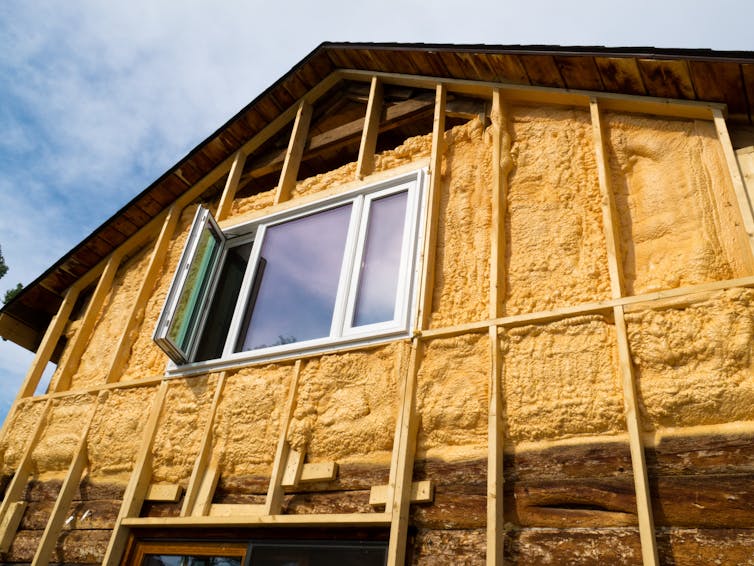
Between ten and 35% of the energy we spend cooling or heating our homes escapes through single glazed windows and doors. Installing double or triple glazed windows and doors will go a long way to keep temperatures more stable inside.
It’s worth noting the energy performance rating systems on measurement labels, which are often attached to window and door units you can buy in stores.
Ultimately, a combination of improved natural ventilation and mechanical ventilation (such as air conditioners as fans) can result in considerable energy savings – up to 79% in some instances.
3. Energy Consumption
While the above strategies will result in significant energy savings, it’s also vital to consider the energy required to produce and manufacture retrofitting materials. Consider using salvaged or recycled materials where possible, or choosing locally made products which avoid emissions associated with transport.
Effectively installing solar panels can offset this “hidden” carbon. Let’s say you’ve done all you can to lower your home’s carbon footprint – you’ve rolled out insulation, installed double glazed windows and made the most of sunshine.
You can then calculate the energy you still use to heat or cool your home. This number will determine how many rooftop solar panels you should install to break even, rather than simply installing as many panels that can fit.
This will not only save you money, but also minimise waste. Researchers estimate that by 2047, Australia will accumulate 1 million tonnes of solar panel waste.
It’s worth opting for solar panels with micro-inverters, which capture optimal energy performance per panel while allowing you to add more panels in future if needed.
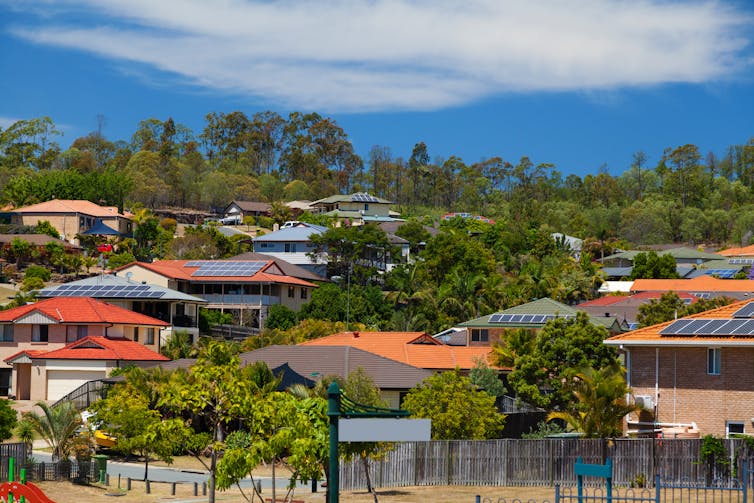
Another option is to use air-source heat pumps, which absorb heat from outside and bring it inside (like a reverse air conditioner). These can take the form of mini-split heat pumps for individual rooms, or multi-zone installations.
They can sense indoor temperature, and operate at variable speeds and heating or cooling intensity, which means their energy performance is very efficient. My research finds well-planned use of such systems can reduce the energy used for heating by 69% and cooling by 38%.
It’s Well Worth The Effort
These retrofitting ideas might seem expensive, or take too much time. However, they’ll often save you money in the long run as energy prices become increasingly uncertain.
You can look to Every Building Counts, an initiative by the Green Building Council and the Property Council of Australia, which provides practical plans for emission reduction.
Australia can also learn from ongoing efforts by the Energiesprong network in the Netherlands. This network is industrialising energy efficiency with prefabricated retrofitting building elements.
Some initiatives include lightweight insulated panels that can simply be placed in front of existing walls of homes. These panels are precisely fitted after carefully laser scanning a facade and robotically cutting openings to match existing homes. Harnessing contemporary technology is vital for a speedy net-zero transition.![]()
Nimish Biloria, Associate Professor of Architecture, University of Technology Sydney
This article is republished from The Conversation under a Creative Commons license. Read the original article.
Australia’s National Electricity Market was just suspended. Here’s why and what happens next
Joel Gilmore, Griffith University and Tim Nelson, Griffith UniversityAustralia’s energy market operator has just suspended the National Electricity market. That means instead of the price for wholesale electricity being set competitively, the market operator (AEMO) sets fixed prices and will take a greater role in directing which power stations generate energy and when.
This is the first time the market has been suspended across all states, and reflects the depth of the price and supply crisis plaguing Australia’s biggest electricity grid.
How Did We Get Here?
All electricity on Australia’s east coast is traded through the National Electricity Market (NEM), a wholesale market where generators are paid for the electricity they produce. Prices are set by an auction between generators held every five minutes.
Prices typically average around $A80/MWh (per megawatt hour), but can vary between -$1000/MWh (where generators actually pay to stay online) and $15,100/MWh. Retailers buy the energy from this auction and manage the price risk on behalf of households and energy-using businesses.
Over the past week, wholesale prices surged due to two main factors: high coal and gas prices (driven by the Russian invasion of Ukraine) and roughly 25% of coal power stations being out of action. The coal power stations are unavailable because of maintenance as well as the sudden exit of 3,000 MW of power due to breakdowns (unplanned outages).
This led AEMO to trigger a pricing “safety net” and capping prices at $300/MWh (much less than the normal cap of $15,100/MWh).
Unfortunately, $300/MWh is currently less than the cost of generating power from gas power stations and possibly even some coal power stations. Some generators subsequently withdrew their availability from the market, leading to further shortfalls.
The low price cap also meant there were weaker price signals as to when power stations with limited “fuel” should use it. This includes some diesel generators as well as batteries and hydro.
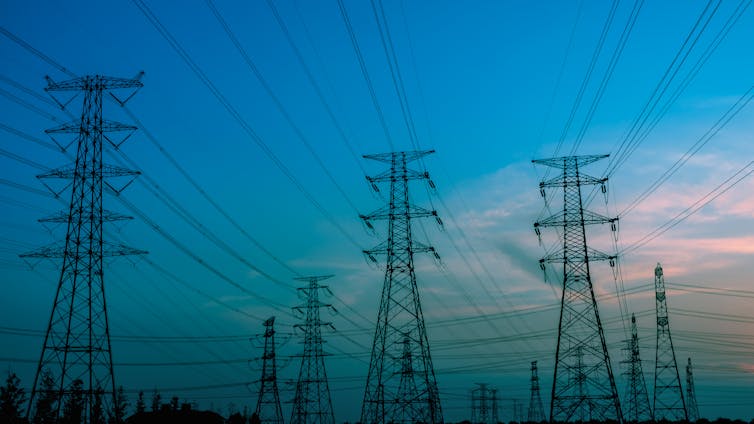
All this makes it much harder for AEMO to operate the market. On Tuesday, AEMO was forced to direct power stations when to run and when not to run. This intervention applied to roughly 20% of demand yesterday, or 5,000 megawatts.
AEMO has now decided suspending the market will make it simpler to operate the grid during this crisis. Generators will now provide their availability and AEMO will tell generators when to run to ensure secure supply. Market prices are then fixed at the average of the past 28 days for that hour of the day - between $150/MWh and $300/MWh across the day.
If generation costs are higher, power station owners will be able to apply for additional compensation, which will be later recovered from consumers.
Although this is the first time it has been done nationally, AEMO has previously suspended the market in individual states such as in South Australia this year when control systems failed.
What’s Likely To Happen Next?
AEMO will continue to monitor the system, and will restart the market when it is appropriate.
This has been a perfect storm of factors – high input costs, significant capacity being unavailable, and a cold snap with high demand. It’s not clear any market would have been able to handle these extreme conditions unless the generation in the market is more modern and less susceptible to breaking down.
What this does point to is that, longer-term, it may be time to buy some insurance for the energy market, as energy ministers have proposed. This would help manage periods like this when so much capacity is unexpectedly offline.
Although coal owners are advocating for additional payments, it’s clear this would not have helped avoid the current crisis. As AEMO CEO Daniel Westerman pointed out, coal plant reliability is “slowly declining”.
This crisis shows we need to make sure we have modern new plant (like batteries and gas turbines), not ageing coal power stations. We also need reserves for when coal unexpectedly breaks down and for other extreme events. This means investing in new flexible capacity which is ready for when we need it.
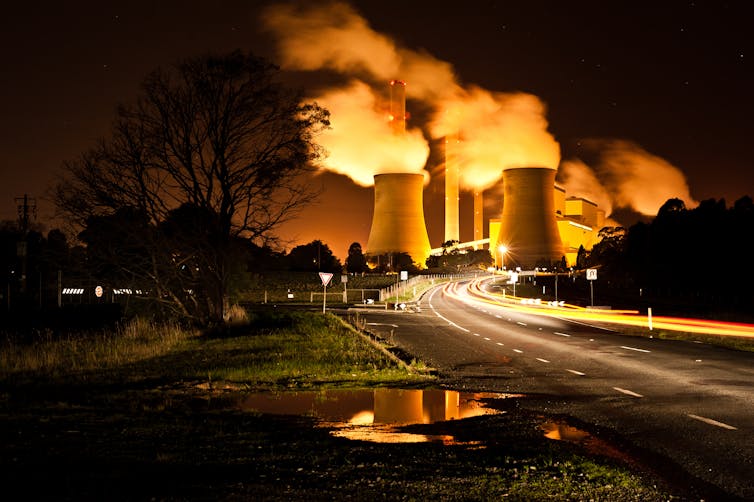
What Does It Mean For Energy Users?
These extreme prices in the National Electricity Market will ultimately impact on energy consumers, particularly larger energy users. Households are already being hit by up to a 20% rise in bills next month due to the very high cost of coal and gas.
Given the stresses on the grid, however, it’s sensible for Australians on the east cost to conserve energy if safe to do so, particularly during the peak hours of 5-8pm. ![]()
Joel Gilmore, Associate Professor, Griffith University and Tim Nelson, Associate Professor of Economics, Griffith University
This article is republished from The Conversation under a Creative Commons license. Read the original article.
5 policy decisions from recent history that led to today’s energy crisis
Roger Dargaville, Monash UniversityIf you aren’t a long-term energy policy news junkie, you’d be forgiven for thinking today’s crisis arrived fairly suddenly.
Indeed, Liberal leader Peter Dutton is framing it as a recent catastrophe, saying it was caused by Labor “transitioning into renewables too quickly […] they are spooking the market.”
But this crisis hasn’t come out of nowhere.
We arrived here thanks to a series of policy decisions under previous governments – state and federal – that left Australia’s energy system ill-equipped to cope with the demands placed on it.
Here are five key policy moments that in part led to the power crisis engulfing Australia today.
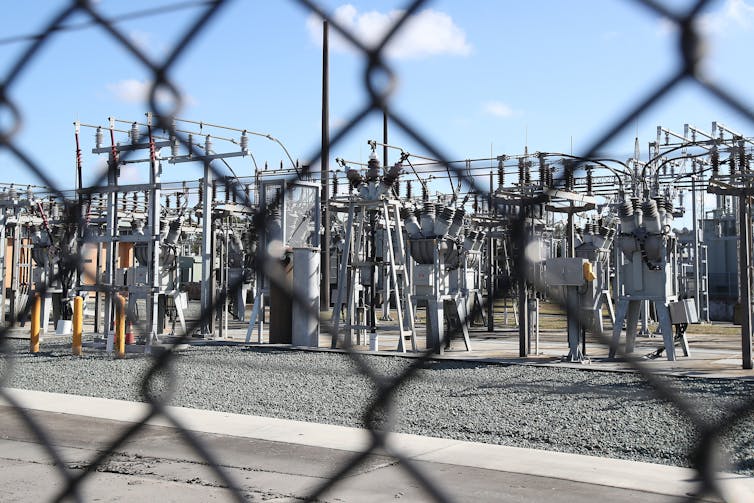
1. Privatisation Of The Electricity Sector
The 1990s saw a trend towards privatisation of government-owned assets, on the logic that industry would run the assets more efficiently.
The Kennett government in Victoria had a strong policy to privatise generators and transmission assets, with South Australia and New South Wales also privatising energy assets.
However, the actual focus of industry is not to be efficient but to maximise shareholder profit (which may involve being more streamlined, but not necessarily). And so the the primary role of the energy sector to provide general benefits to Australian residents and businesses has been lost.
2. The Gladstone Gas Terminal Agreements
Liquefied natural gas (LNG) exports began from the Gladstone LNG gas terminal in Queensland in 2015, during the Abbott-Turnbull-Morrison era, connecting the eastern states’ domestic gas markets to the international price.
But the journey began long prior, with construction of this terminal beginning in 2010 (in the middle of the Rudd-Gillard-Rudd era). It involved years of strategy discussion, policy design and agreements.
These agreements, forged between industry and various state (especially the Beattie Queensland Labor government) and federal governments (going as far back as the Howard era), created an LNG export industry.
Unlike Western Australia, there was no domestic reserve for gas set up as part of the agreements. So on the east coast, we are now exposed to international gas prices.
Of course, in the lead up to creating the LNG export industry, federal governments perhaps could not have been expected to predict Russia’s invasion of Ukraine over a decade later, driving up gas prices.
But the decisions made around the Gladstone gas agreements allowed Australian gas to be shipped offshore and have led to extremely high gas prices domestically.
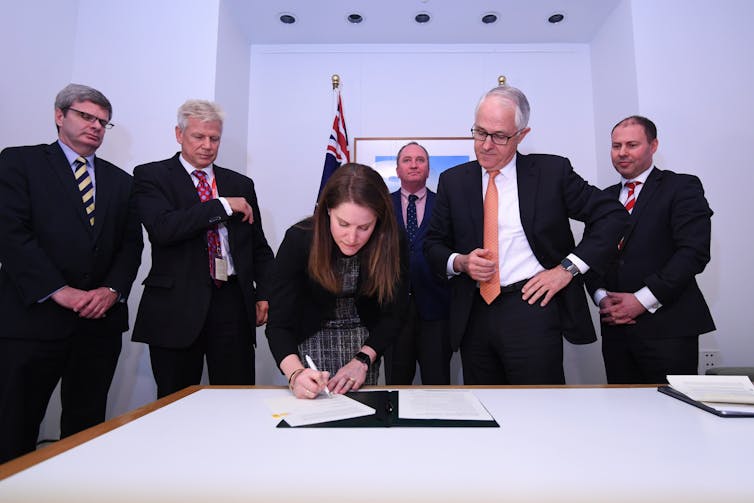
3. Axing The Price On Carbon, Watering Down The Renewable Energy Target
Under former Prime Minister Tony Abbott, the then-Coalition government removed the price on carbon created by the Rudd-Gillard-Rudd government. This was arguably one of the most backward steps in the efforts to rein in Australia’s carbon emissions and did nothing to incentivise renewable energy production.
It also tried very hard to scrap the renewable energy target (RET) – eventually settling for just watering it down significantly.
The RET required energy retailers and large customers to ensure a share of their energy was derived from renewable sources.
An earlier form of the target was established in 2001 by the Howard Coalition government. The Rudd Labor government increased the target’s ambition in 2009.
In 2015 the Abbott Coalition government dramatically reduced the target, and it was easily met in 2019. Since then, there has been no additional hard incentive to build more renewables.
The reason renewables are still being built now is because they are cheaper than coal.
Investment would continue at a more rapid pace, except for problems renewable energy producers face in getting their power into the grid (more on that later).
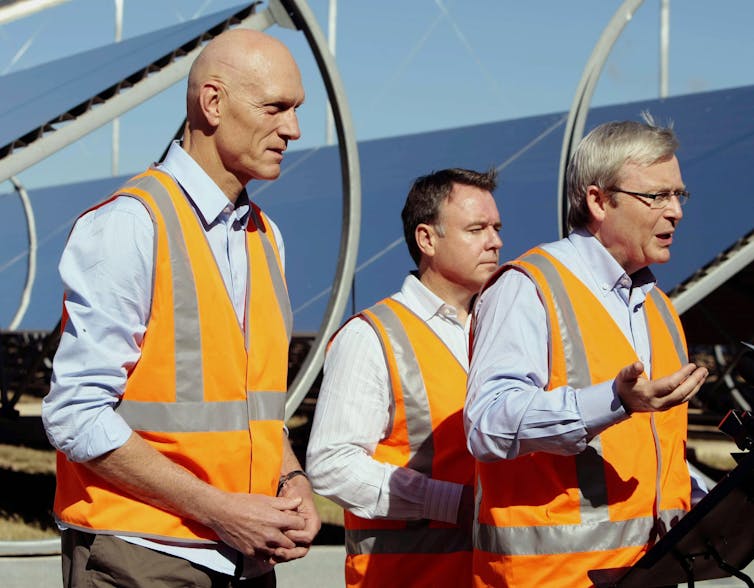
4. An Effective Stop On Investment In Wind Farms In Victoria
In 2011, the Victorian Baillieu state government effectively put a stop to wind farm investment by creating a 2km exclusion zone around existing homes.
As researchers Lisa Caripis and Anne Kallies wrote in The Conversation in 2012, these laws:
effectively give the owners of any dwelling within 2km of a proposed wind farm the power to decide whether or not the development should proceed.
This decision, combined with the reduced RET, really slowed down investment in renewables.
These laws were reformed in 2015 by the Andrews government in Victoria.
5. Lack Of Investment In Transmission Infrastructure
This is not so much a policy moment, but a lack of one.
Transmission infrastructure is the wires, poles and other bits of the system needed to get electricity from power producers to households and businesses.
Most major transmission projects in Australia connecting coal, gas and hydro projects to the grid have been built by governments and then later privatised. Under the current privatised system, getting new transmission lines built is a complex process.
Renewables generation projects are often built at smaller scales in remote locations and new transmission infrastructure is needed to connect them to the grid.
Many renewable energy projects currently cannot connect to the grid because transmission infrastructure can’t securely absorb the extra capacity.
Both federal and state governments have failed to enact policies encouraging investment in transmission projects that can serve renewables generation. This has set the system up for the failure we’re seeing today.
A Tough Job Ahead
Of course, other policy decisions have also led to today’s crisis. For example, there’s been limited government policy encouraging the construction of batteries and pumped hydro in order to store renewable energy produced at times of lower demand.
The exception here is, of course, the tax payer funded Snowy 2.0 scheme, recently revealed to be running over time and over budget.
Without government intervention, it seems unlikely an orderly transition to renewables can be achieved.![]()
Roger Dargaville, Senior lecturer & Deputy Director Monash Energy Institute, Monash University
This article is republished from The Conversation under a Creative Commons license. Read the original article.
Fennel looking a bit feeble? Growing enough veggies to feed yourself depends on these 3 things
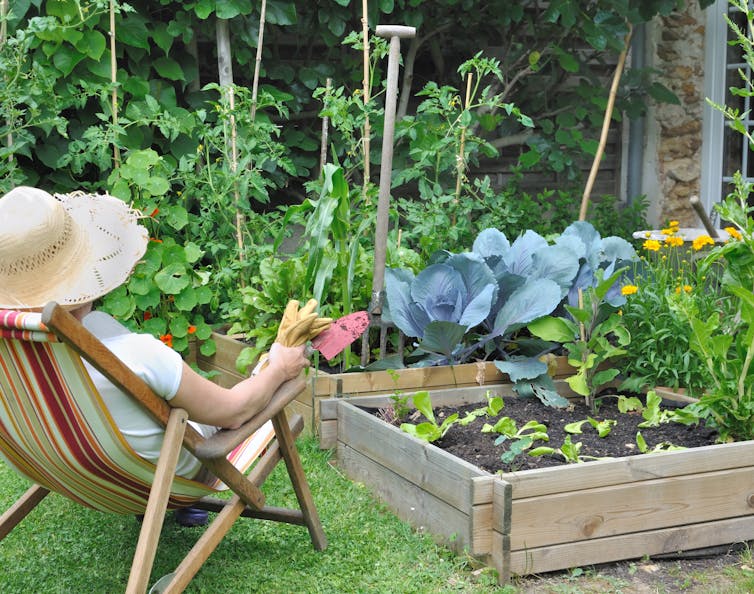
Farming inside city boundaries is on the rise as countries become more urbanised and people seek to connect with the source of their food and improve their sustainability.
But despite the productivity potential of home food gardens and the like, they are rarely analysed as serious farming systems. There’s little data, for example, on how much can be grown on an average suburban property.
As climate change threatens global food supplies, however, building sustainable urban food systems will be crucial.
Our research has examined how productive the average home vegetable garden really is, and how to get the most from your patch.
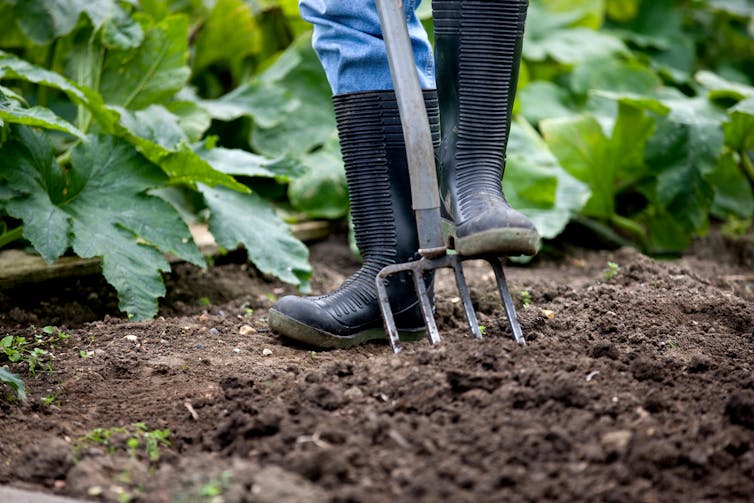
Lawn With A Side Of Salad?
Urban agriculture refers to growing produce and raising livestock inside a city’s boundary. In Australian cities, it might involve a home vegetable patch, community garden, backyard beehives, an edible rooftop garden on an apartment block, indoor hydroponics, a communal orchard and more.
Sometimes, especially in developing countries, urban farming can help address issues such as poverty, unemployment and food insecurity.
More broadly, it can increase access to healthy, fresh produce and lead to more sustainable food production. It can also help us save money and improve our well-being.
Societies have traditionally lent on urban farming during times of stress. So it’s no surprise the practice resurged during the COVID pandemic. In Australia, keeping edible gardens significantly helped people maintain mental health during lowdown, particularly those on low incomes.
But to what extent can we rely on our backyard gardens to meet all our fresh produce needs? Our research shows these three factors are key.
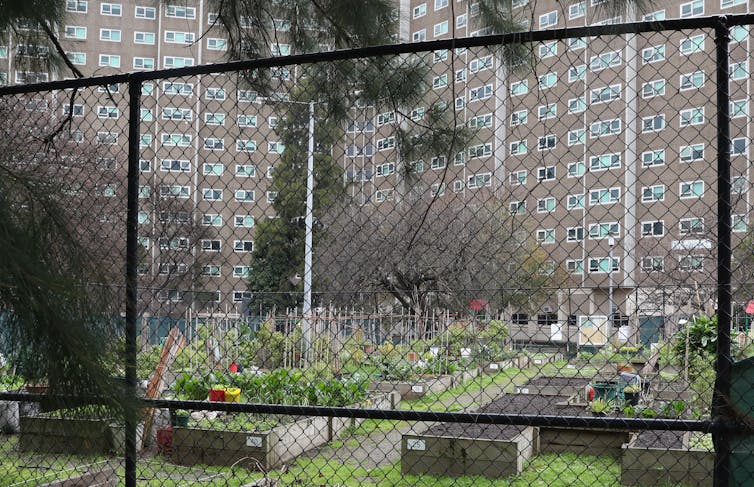
1. Give Up Some Lawn
We looked at the potential for food production at about 40,000 residential properties in suburban Adelaide – mostly free-standing homes.
We calculated the amount of land required for a household of 2.5 people to grow the recommended five servings of vegetables per person each day. Then, using high-resolution aerial imagery to get a birds eye view of properties, we identified those with enough lawn area to make that happen.
Some 21m² of lawn is needed to produce the recommended vegetable intake. In a scenario where a garden is high-yielding, this would require converting 23% of lawn area on a typical block into a vegetable patch. Of the properties modelled, 93% had the room to a create 21m² garden from the total lawn space.
In a medium-yield garden, 72% of lawn on a typical block would need converting to produce enough vegetables to feed a household – equating to 67m².
We limited the research to in-ground veggie production and didn’t include fruit trees. So a property’s potential to grow food would be even higher if food gardens or fruit trees already exist, or other garden beds or paved areas could be converted.

2. Up Your Gardening Game
Research out of Adelaide, which surveyed about 30 home gardeners, found yields per square metre ranged from 0.24kg to 16.07kg per year. This suggests a high rate of variability in home garden productivity – notwithstanding the fact people grow different crops.
Not all of us have green thumbs and in some cases, your veggie patch might not yield as much as you hoped.
Perhaps you gave it too much or too little water. Maybe you didn’t have time to pull out weeds or harvest produce. Pests and fungus might have struck down your crop. You may have planted the wrong seeds at the wrong time or just have poor soil.
Our research suggests low-yield gardens would need 1,407m² of converted lawn to meet the vegetable needs of a household. However, less than 0.5% of properties in the analysed Adelaide sites had so much land. So to reach self-sufficiency in urban agriculture environments, medium to high yields are preferred.
Skilled gardeners with high yields will need much less land. Given the space constraints in cities, upskilling gardeners is important to maximising production.
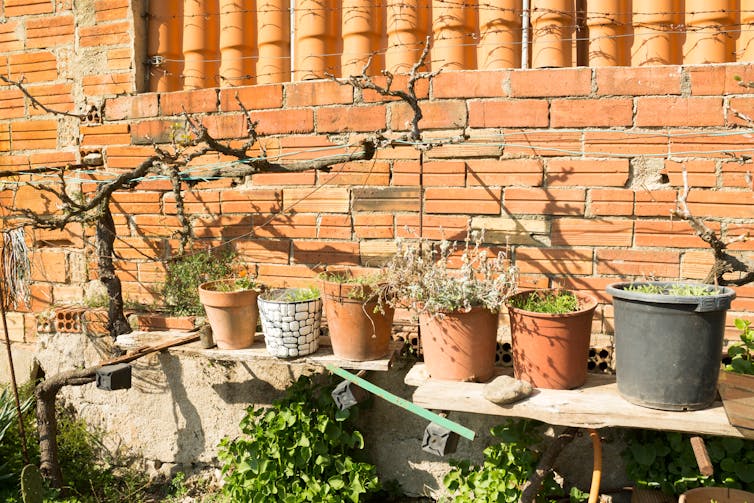
3. Know What’s In Your Soil
Good soil is a key factor in productive gardens. It needs a good structure (one that allows water and air to enter and drain easily, while retaining enough moisture) an ample supply of plant nutrients and a rich microbial community.
In city areas, heavy metal contamination and pollution of soils can be a concern. We examined soils at 12 urban agricultural sites in Adelaide, and found in all cases that metal concentrations did not exceed health guidelines for residential areas – even at sites with an industrial history.
But this might not always be the case. An analysis of residential and community gardens in Melbourne, for example, showed some soils were contaminated at levels which could pose a human health hazard. This highlights the importance of testing urban soils before planting.
Proper management of inputs – particularly fertiliser – is also key. Our research has found urban gardeners can choose from a variety of organic waste-based fertilisers such as spent coffee grounds, food scraps or lawn clippings. But this abundance can lead to imbalances.
In Adelaide, for example, the widespread use of freely available horse manure led to excessive phosphorous levels in almost all of the 12 tested sites. This imbalance can depress plant growth and damage the broader environment.

Helping City Gardens Flourish
Urban agriculture has been identified as a A$4 billion economic growth opportunity for Australia. However, suburban blocks are trending towards smaller yards with less growing space.
Given the many benefits of urban farming, it’s time to think more seriously about maximising efficiency and scale.
Community gardens are well placed for knowledge-sharing. Research on 13 community gardens in Sydney revealed they were very high-yield – around twice as productive than the typical Australian commercial vegetable farm.
Funding for more community gardens, and other education opportunities for urban gardeners, would be a valuable investment in improving public health and sustainability.
This should be coupled with policy and planning decisions designed to increase the amount of urban farming space in our cities.![]()
Isobel Violet Hume, PhD Candidate , University of Adelaide; Matthias Salomon, Postdoctoral research fellow, University of Adelaide, and Timothy Cavagnaro, , University of Adelaide
This article is republished from The Conversation under a Creative Commons license. Read the original article.
We know heatwaves kill animals. But new research shows the survivors don’t get off scot-free
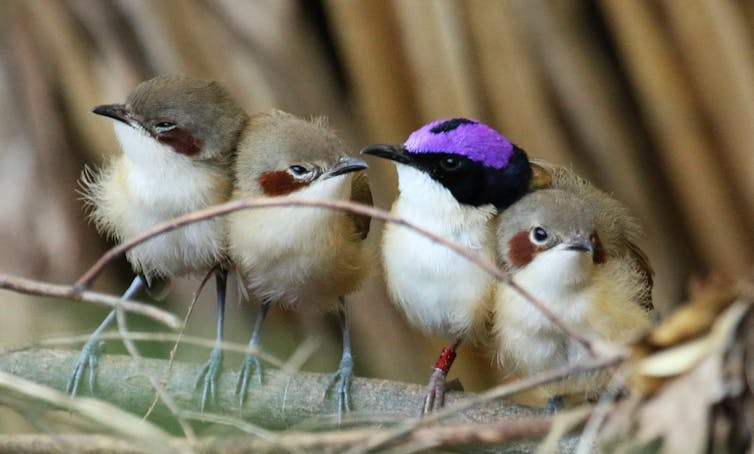
Extreme heat waves can cause birds and mammals to die en masse. But it’s more common for an animal to experience relatively mild heat stress that doesn’t kill it. Our new findings suggest that unfortunately, these individuals can suffer long-term health damage.
Our study, published today, describes how exposure to hot and dry conditions can damage the DNA of nestling birds in their first few days of life. This can mean they age earlier, die younger and produce less offspring.
We focused on a population of purple-crowned fairy-wrens – a small endangered songbird from Northern Australia.
The findings suggest unless the wrens can adapt rapidly to climate warming, their populations may struggle to survive as global temperatures rise. It’s vital we consider such subtle and otherwise hidden impacts when predicting how biodiversity will fare in a warmer world.
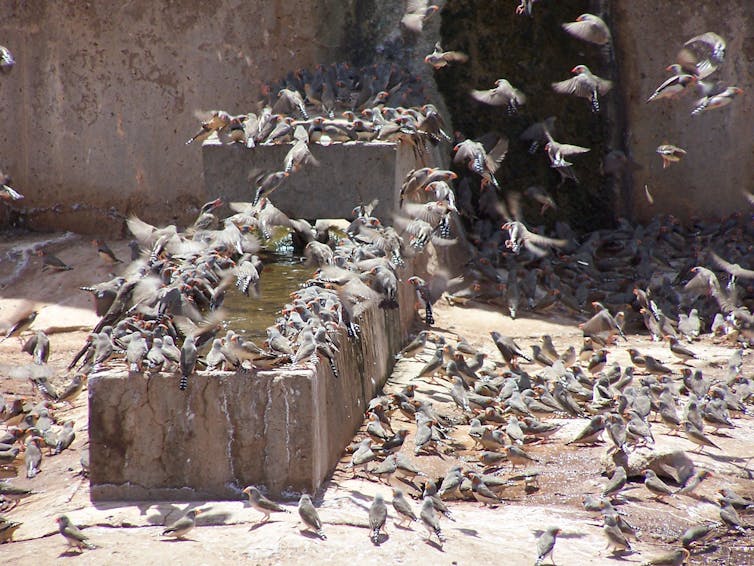
The Cost Of Growing Up In The Heat
Nestlings are particularly sensitive to hot temperatures due to their immobility, rapid growth and immature physiology. And the consequences of heat stress are potentially amplified in young birds because damage may persist into adulthood.
We intensively monitored a population of individually-marked purple-crowned fairy-wrens at the Australian Wildlife Conservancy’s Mornington Wildlife Sanctuary in Western Australia’s Kimberley region, as part of our long-term ecological study.
These insect-eating birds form small social groups centred around a breeding pair. The birds we monitored spend their lives in dense vegetation beside their particular spot along a riverbank, which they enthusiastically defend from interlopers.
Breeding can occur all year but peaks in the monsoonal wet season. Nests contain between one to four nestlings. During our study they experienced maximum air temperatures between 31-45℃.
Our investigation focused on week-old nestlings, and the relationship between temperature and a section of the birds’ DNA known as “telomeres”.
Telomeres are DNA caps on the end of chromosomes which, among other functions, act as a buffer to protect cells from the byproducts of energy production and stress. Once this buffer erodes, the cell shuts down. As the number of these inactive cells builds up over time, the ageing process accelerates.
Nestlings exposed to hot, dry conditions during their first days of life had shorter telomeres. This suggests surviving heat stress may shorten their protective DNA buffer and make the birds age more quickly. Indeed, our previous research demonstrated nestlings with shorter telomeres tend to die younger, and subsequently have fewer offspring.
Interestingly, nestlings appeared to tolerate heat better when it coincided with rain, although we’re not sure why.
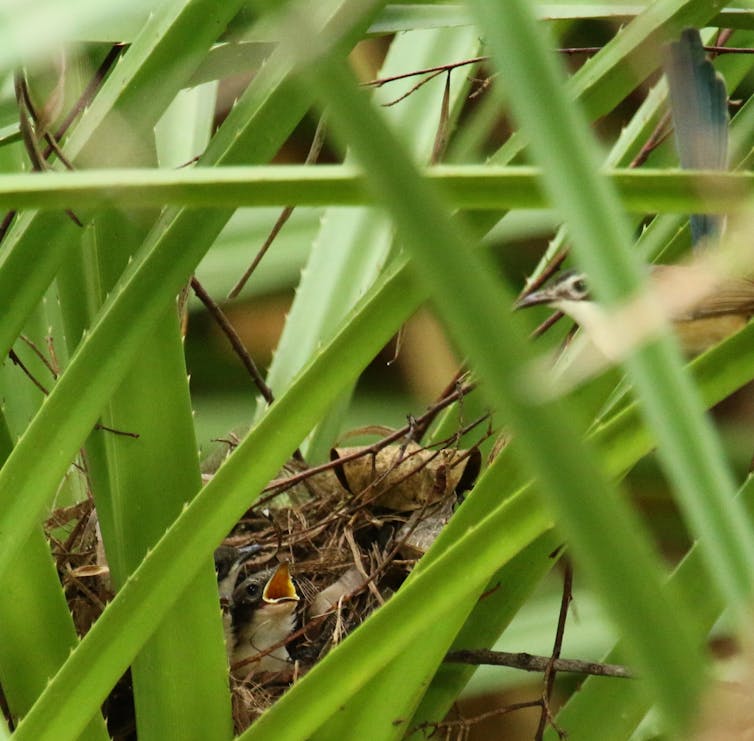
What This Means Under Climate Warming
Hot, dry conditions are predicted to become more frequent in Australia under climate change. So we built a mathematical model to simulate whether their effects on nestling telomere length may depress reproduction enough to cause population decline.
We found even under relatively mild rates of warming, the population could decline solely as a consequence of nestling telomere shortening. The maths also revealed two potential “escape” measures that might maintain population viability.
First, the population could evolve longer telomeres, and thereby a larger buffer to prevent early ageing. However, this is entirely speculative as we do not understand how telomeres evolve or whether their evolution could keep pace with climate change.
Alternatively, the birds could adjust when they breed, so nestlings experience wet conditions more often. However, this seems unlikely because the number of rain days in the region is forecast to decline, and the birds already try to maximise breeding when it rains.
Importantly, if global warming continues to accelerate, the success of any countermeasures becomes increasingly unlikely.
Concealed and delayed costs of heat exposure, such as those identified in our study, can be subtle and difficult to detect. But they’re crucial when considering how climate warming might affect biodiversity.
Given that developing animals are generally more sensitive to heat, and telomeres function in similar way across species, our results could extend to many other birds and mammals. More research is needed to confirm this.
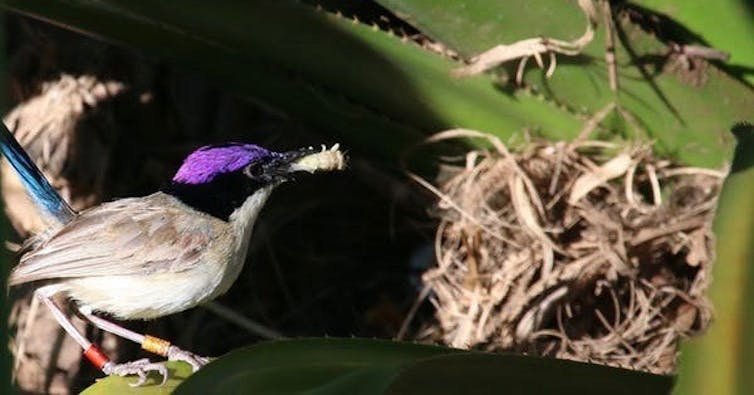
What’s Next?
Keeping cool is also costly for parent birds. Like us, birds often seek out shade and become less active in extreme heat. Instead of sweating, they open their beaks to pant and spread their wings to cool off.
But these behaviours leave a parent bird with less time to forage, defend the nest or feed offspring – activities required for the population to survive. We are investigating whether this exacerbates the effects of telomere shortening.
Next, we plan to expand our research by measuring temperatures in and around the nest. We’ll also study whether females are able to select cooler microsites to help their young better withstand climate warming, and investigate how this relates to habitat quality, management and threats.
Ultimately, we hope our research will inform the design of conservation strategies to climate-proof the future of this iconic Australian bird and others like it.
Acknowledgements: we thank the Australian Wildlife Conservancy, the Australian Research Council and our colleagues: Tim Connallon, Kaspar Delhey, Michelle L. Hall, Niki Teunissen, Sjouke A. Kingma, Ariana M. La Porte, and Simon Verhulst.![]()
Justin Eastwood, Postdoctoral research fellow in ecology, Monash University and Anne Peters, Professor in Behaviour, Ecology and Conservation, Monash University
This article is republished from The Conversation under a Creative Commons license. Read the original article.
‘We want to be part of that movement’: residents embrace renewable energy but worry how their towns will change
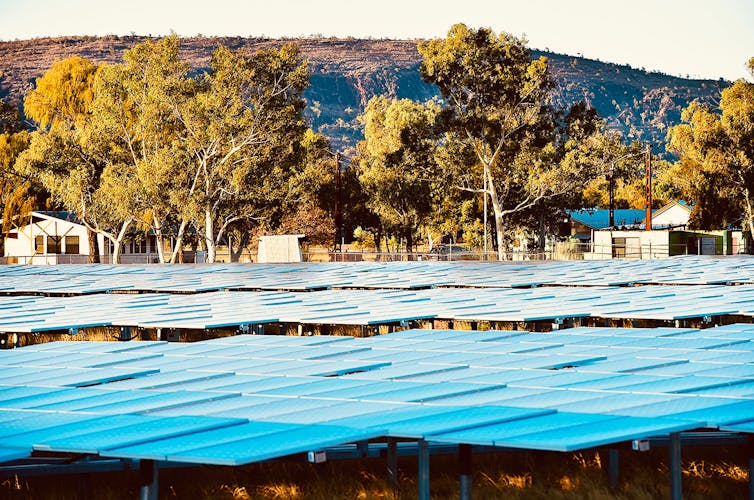
Amid soaring energy costs, the new Labor government is working to deliver a A$20 billion pledge to rebuild and modernise Australia’s electricity grid. It will help deliver a plan for 122 gigawatts of new renewable energy in the National Electricity Market by 2050, eventually replacing coal generation.
The transition will bring significant social, economic and environmental change. Electricity generation in New South Wales, for example, will shift from the concentrated coal power of the Hunter Valley and Central Coast to multiple sites across the state’s centre, north and southwest.
The shift also entails a host of new infrastructure. According to our calculations, the predicted extra renewable energy capacity will require nationally 24,000 large wind turbines or around 2,000 large solar farms, as well as new large-scale batteries.
So, in the first major study of its kind, we travelled to where renewable energy is expanding in NSW to ask communities how they feel about the changes. While their outlook was generally positive, governments can do more to ensure community support for the transition.
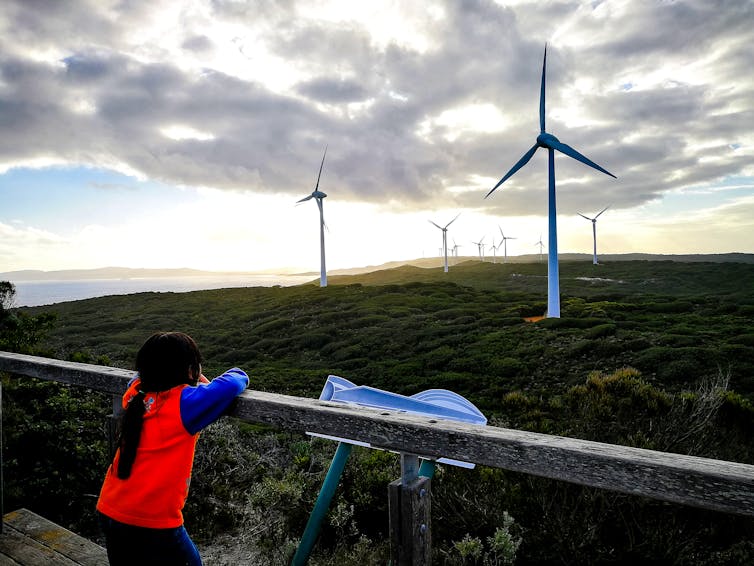
What Our Work Involved
Most new energy infrastructure will be concentrated in designated “renewable energy zones”. These are areas where both renewable energy is generated, and the high-voltage poles and wires exist to deliver it where needed.
The national pilot zone will begin in NSW’s Central-West Orana region from 2023, followed by another zone in New England. Three more zones will be established in the Riverina, Hunter-Central Coast and Illawarra regions.
Our research involved travelling to and staying in affected towns including Wellington, Glen Innes, Inverell, and Uralla. New wind and solar farms are already built near these places and many more are proposed in the coming years in the Central-West Orana and New England.
We spoke to a broad range of residents. All together we conducted 44 semi-structured interviews, several group interviews and a community forum. We also visited solar and wind farm sites and landowners’ properties (both hosts of new utilities and their neighbours).
Positive, But Unsure What Lies Ahead
Overall, people were generally positive about the future development of renewable energy zones and the opportunities they presented. One resident told us:
“There are hundreds of small rural communities throughout Australia that are struggling, and most won’t have an opportunity like this development. We want to be part of that movement, we want to grow and evolve in a rapidly changing world.”
But some people were unsure about how the energy transition would affect their communities. This is unsurprising, given the lack of transition planning by the last federal government.
In places where multiple renewables projects have been built or planned, changes to land use and public assets were a concern to some. As one community member said:
“Rural views are a big issue out here. And bush fires. There’s a question mark over the viability of agricultural land, particularly with the solar farms. And wear and tear on the roads and infrastructure.”
State planning review processes will be tested as more closely located projects are proposed. This cumulative problem that needs to be addressed to ensure community support for renewable energy zones.
Local councils have fine-grained knowledge about their areas and should be key to these new planning processes. However, they have little co-ordinating power. As one council officer put it:
“It’s really market forces deciding when [projects] get built, or don’t get built.”
On transmission projects, Labor has said it will require the Australian Energy Regulator to take a broader view of costs and benefits and increase community engagement on transmission decisions.
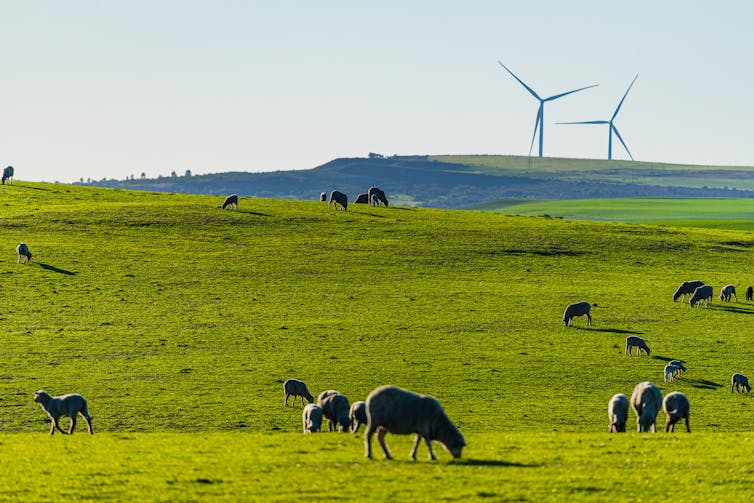
How Are Benefits Shared?
Landowners are paid to host wind or solar projects and this can form a big part of a farm’s income. One host landholder told us:
“The proposed solar development on our property is a massive positive. It allows us to drought proof our farm and continue as a viable business for the next generation.”
However, renewables projects can cause conflicts with neighbours who may be affected by the development but are only eligible for much smaller payments – or sometimes none at all.
Areas designated as renewable energy zones have a much higher proportion of Aboriginal residents than the NSW average. To maximise socioeconomic benefits and protect heritage during the energy transition, Traditional Owners and other Aboriginal residents should be better included and consulted, in culturally appropriate ways, than they have been in the past.
Communities were generally positive about the broad economic benefits that flow from renewable energy projects during the construction phase. A local worker told us:
“The workers would fill their vehicles [with fuel] in town before they left, or they’d get local caterers, or they’d sponsor local activities, that sort of thing.”
But renewable energy projects have a lifetime of up to 30 years. Ensuring they create local benefits beyond the construction phase requires a broader industrial strategy and more carefully coordinated development to spread out the construction phases over time.
Some renewable energy companies run small grants schemes to contribute to local community organisations. We support proposals to formalise and combine some of these schemes. This would create a very significant pool of funds that could make substantial investments within a renewable energy zone.
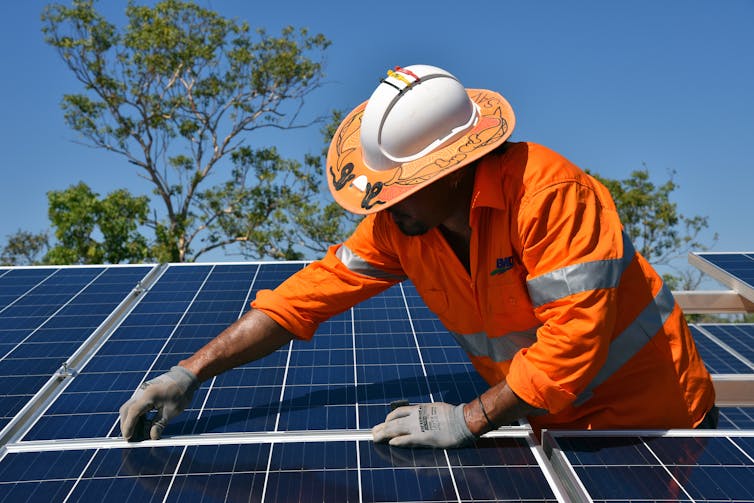
Planning For Equitable Change
The pilot renewable energy zones embody a bold vision for Australia’s clean energy future. They should be used as a policy test-bed to ensure we get the transition right.
In particular, the pilots must ensure all residents can participate and share in the benefits, that socioeconomic development is sustainable and co-ordinated, and projects give back to communities over their full lifespan.
If we can nail all this at the pilot stage, renewable energy zones can bring significant benefits to other host communities and Australia as a whole.![]()
Rebecca Pearse, Lecturer, Australian National University; Daniel J Cass, Research Affiliate, University of Sydney; Linda Connor, Professor of Anthropology, University of Sydney, and Riikka Heikkinen, PhD Candidate, University of Technology Sydney
This article is republished from The Conversation under a Creative Commons license. Read the original article.
It’s time to come clean on Lismore’s future. People and businesses have to relocate away from the floodplains
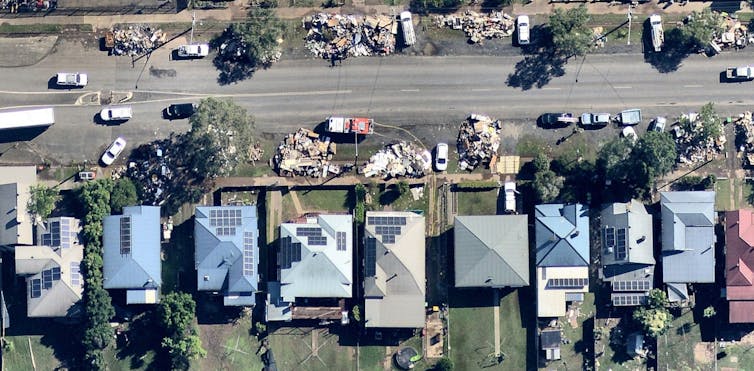
More than three months after the monster floods wrecked much of Lismore, there is still no clarity for the town’s residents and businesses who urgently need to make investment decisions. Should they move to higher ground, make temporary fixes, or renovate for the long haul?
The problem is, authorities differ. “The debate is over – we will be doing engineering work for flood mitigation,” declared Kevin Hogan, the federal member for Page, as he announced a A$10m CSIRO-led project to study flood mitigation.
Lismore Council has since recommended “a planned retreat of residential dwellings” from the highest flood risk areas.
It’s no wonder people in Lismore are confused. Can they stay put and rebuild, confident the government will stop flood devastation? Or should everyone at low elevation – including all businesses in the town centre – move? The city’s 44,000 people need clarity.
My view is stopping floods of this size or larger will simply not be viable. Raising the town’s 10 metre high levee won’t work. To contain the immense volume of water upstream, we would have to build many expensive new dams. Instead, we should move all buildings off the floodplains and work to reforest floodplains upriver to slow the floodwaters.
Lismore Is Prone To Floods. But This Year’s Were Off The Charts
My city floods regularly, with 100 floods over the past 152 years. When major rain hits the surrounding mountains, water from many creeks funnel into the Wilsons River, which runs through the centre of town. The town’s levee was built to stop major floods. But in 2017, the floods overtopped the levee for the first time. In February this year, the monster flood came through at 14.4 metres, fully two metres higher than the supposed “1-in-a-100-year” event and 2.3m higher than any previously recorded.
How much water is that? At its peak, Wilsons River at Lismore was flowing at 216 gigalitres per day. That’s an Olympic swimming pool of water every second. That is an unprecedented volume and very difficult to mitigate.
Inquiries and reports after earlier floods have usually been in favour of a gradual withdrawal from vulnerable areas. We had a voluntary acquisition program in 1954, a report in 1980 finding flood mitigation was uneconomic and ineffective, and a 1982 report advocating buy-backs, land swaps and relocation assistance. None of these led to major relocations. Instead, in 2005, a $A19 million levee was constructed to protect against a 1-in-10 year flood. It’s already been overtopped three times. Parts of the town are now effectively uninsurable.
Could the controversial proposal for a new dam upriver at Dunoon help, as some suggest? Unlikely, given its catchment only covers 5% of the Lismore basin, and its capacity is only 5% of what would be required to mitigate these floods. We would need 12 such dams, kept empty, to mitigate floods this size. These wouldn’t stack up economically, ecologically, or culturally.
What about raising the levees? This doesn’t work, because water constrained by the levee rises to greater heights. In a wide floodplain, this might not be a problem. But Lismore’s floodplain is narrow. If we had raised the existing levee from 10 to 15m, the February flood would have had its flow restricted by 75%. Water would have backed up and ultimately overtopped the levee.
Raising buildings above flood height is a major undertaking (especially in the CBD), and would substantially alter the character of the city. Renovating buildings for flood tolerance is possible, but this does not address the substantial costs of flood disruptions and the clean-up. Nor does this strategy protect lives from rapid and unexpected flooding.
What would work is restoring vegetation on the floodplains above Lismore, and clear vegetation on the floodplains below Lismore. Why? Because vegetation can make a five-fold difference in water velocity. If we reforest floodplains to the north through projects like tree plantations for koalas, horticulture and rainforest restoration, we would slow the floods significantly. If we clear more areas on the floodplains below Lismore, we would also speed up the clearance of floodwaters from the river. These two methods combined would lower the height of the flood peak. These interventions are also tolerant of imprecise assumptions and extreme situations, and are not prone to sudden failure.
We Must Take Relocation Seriously
While we might have considered the clean-up and restoration costs tolerable if they occur once in a lifetime, the nature of our floods is changing. Floods once considered rare are now more common, as climate change warms the air and lets it hold more moisture, coupled with ever-increasing hard surfaces such as roofs and roads which cause faster runoff. The reality is we need to prepare for more frequent and more severe flooding.
The logical solution is to relocate our city’s important infrastructure – houses, businesses and factories – away from the floodplain altogether. On a smaller scale, this is what happened in the south-east Queensland town of Grantham after the 2011 “inland tsunami” of water destroyed much of the town. The council pioneered a land-swap to move many of the houses most at risk to higher ground on a nearby cattle property.
The decision to relocate homes and businesses is a big one. We can no longer avoid this difficult discussion, however. Doing nothing will not bring back the old Lismore. Our city has changed, and will never be the same again.
On the positive side, we have a real opportunity to create a new, better version of Lismore. If we delay a decision or keep the idea of mitigation alive, we will create uncertainty and see our city dwindle, as hard-hit businesses and residents drift away and establish elsewhere.
Floodplain residents should not be misled into investing in expensive renovations, when relocation is the better solution.![]()
Jerry Vanclay, Professor, Southern Cross University
This article is republished from The Conversation under a Creative Commons license. Read the original article.
Climate change the issue on which Australians do not want both sides of the argument: new research
Sora Park, University of Canberra; Kerry McCallum, University of Canberra, and Kieran McGuinness, University of CanberraShould journalists always treat an issue even-handedly? Our research reveals that when it comes to climate change, many Australians would prefer they didn’t. For general news, people want news outlets to reflect a range of views so they can make up their own mind about an issue. However, when it comes to news about climate change, four in ten say news outlets should pick a side.
That’s according to new research that surveyed 2,038 Australians about their news consumption in relation to climate change. The Digital News Report: Australia 2022 survey was conducted by the University of Canberra between January 21 and February 16 2022.
There is a divide driven by political orientation on how people think news outlets should be reporting on climate change. More than half (51%) of those who identify as left-wing and 42% of those who identify as centre of politics say news outlets should take a clear position. In contrast, only 24% of right-leaning audiences say so.
In fact, the majority of those on the right (66%) are in favour of news remaining impartial and leaving it up to people to decide. Revealingly, however, those who identify with the centre are not on the same page as those on the right. Only 41% of those who identify with the centre support impartiality on climate change.
These differences may partly be explained by varied levels of concern and where people get news about climate change.
Concern about climate change is becoming increasingly polarised across the political spectrum. On the left, 81% express concern, but only 32% of right-leaning consumers do. There is a disconnect on climate change between people who identify with the centre of politics and those who identify with right-wing beliefs, particularly among those with higher incomes and in urban areas.
While more than a third (38%) of right-wing consumers regard climate change as a “not very” or “not at all” serious problem, centrists are more concerned, attentive to climate change news and willing to see journalists take a clear position on the issue. This may help understand the success of teal independents in the 2022 federal election, many of whom campaigned on climate action in traditionally centre-right urban electorates.
News consumers in regional areas remain less concerned about climate change than those in cities, despite extreme weather events and bushfires disproportionately affecting regional areas. This may reflect the fact that higher proportions of older and more conservative Australians live in the regions.
It must be stressed the survey was in the field after a mild summer and before the severe floods in Queensland and News South Wales. This is possibly why the proportion considering climate change as a serious problem dropped by three percentage points. Now, three in four (76%) Australians regard climate change as a serious issue.
Encouragingly, rather than relying on celebrities and political parties, people go to experts and traditional news outlets for news about the climate crisis. The most popular sources of climate change news are scientists, experts and academics (50%), documentaries (33%) and major news outlets (27%).
There seems to be a small but important minority of Australians who have disengaged from the issue entirely. One in five Australians say they don’t pay any attention to climate change news.
Again, we see a steep political divide in whether people pay attention to climate change news. Almost one-third (29%) of right-wing consumers are disengaged from climate change news, while 97% of left-wing consumers access news about climate change. This polarisation has persisted and widened since 2020.
When it comes to reporting about climate change, Australians want less focus on individual responsibility (16%) and more attention on what governments and large companies should do about it (42%). Younger generations and left-wing Australians are particularly keen on both of these things.
The issue of climate change turned out to be serious enough to convince many to vote against traditional two-party lines, reshaping the political landscape and placing action on climate change as a spotlight issue for the incoming Labor government.
Digital News Report: Australia is produced by the News & Media Research Centre (N&MRC) at the University of Canberra. It is part of a global annual survey of digital news consumption in 46 countries, commissioned by the Reuters Institute for the Study of Journalism at the University of Oxford. YouGov conducted the survey in January and February 2022. In Australia, this is the eighth annual survey of its kind produced by the N&MRC.![]()
Sora Park, Associate Dean of Research, Faculty of Arts & Design, University of Canberra; Kerry McCallum, Professor of Communication and Media Studies, Director, News and Media Research Centre, University of Canberra, and Kieran McGuinness, Postdoctoral Fellow, News & Media Research Centre, University of Canberra
This article is republished from The Conversation under a Creative Commons license. Read the original article.
Australia already has a UK-style windfall profits tax on gas – but we’ll give away tens of billions of dollars unless we fix it soon
Peter Martin, Crawford School of Public Policy, Australian National UniversityThe really bizarre thing about calls for a UK-style windfall profits tax on gas is that Australia’s already got one.
Gas prices have soared to levels never envisioned in the lead-up to 2015, when three resource giants spent A$80 billion building terminals in Queensland with the potential to export three times the east coast gas Australia had been using.
At the time, the “netback” international gas price (net of the cost of liquefying and shipping) was barely A$10 a gigajoule, and wasn’t expected to climb much higher.
Suddenly, in the space of a year, it has jumped to three times that level. Local industrial customers are now being asked to pay an barely-credible $382 a gigajoule – and gas suppliers were about to ask for $800, before the energy market operator stepped in and capped prices at a still “crippling” $40 a gigajoule.
Gas Generators Aren’t Keen To Power Up
So expensive is gas that on Monday, when almost a quarter of Australia’s coal-fired power generating units were out of action and it looked as if NSW and Queensland would be plunged into darkness, gas generators were sitting on their hands rather than powering up.
They only acted when ordered to by the energy market operator.
In Britain, where export gas prices have climbed just as high (and one of the same companies, Shell, is involved) Prime Minister Boris Johnson has imposed a 25% windfall profits tax on oil and gas producers.
The special tax will help fund support for households struggling with high bills, and will be phased out when oil and gas prices return to normal.
Australia Already Has A Special Tax On Gas
There are precedents here for singling out an entire industry for an extra tax. Scott Morrison did it in 2017 with a special tax on big banks, which continues to this day.
The Rudd and Gillard governments tried it with a short-lived 40% super-profits tax on the mining industry, which was based on … well, it was based on the longstanding 40% resource rent tax applying to the oil and gas industry.
That’s right. Australian oil and gas producers have had to shell out 40% of their profits in tax, in addition to 30% company tax on profits, for years.
That’s a total big enough to ensure the windfall profits resulting from Russia’s invasion of Ukraine are well and truly taxed along the lines announced in the UK, allowing Australia’s government to grab most of the windfall and use it to support households suffering from high energy prices. Or so you would think.
And yet the amount collected is tiny: $2.4 billion, which is no more than was collected in 2005. At times, it has fallen as low as $1 billion. In the words of the Grattan Institute’s Tony Wood, himself a former energy executive, it is a “rather strange thing to have a tax that nobody pays”.
Australian Institute analysis of Tax Office data suggests that none of the big three Queensland gas exporters has paid any income tax since their projects began in 2015, except for $3 billion paid by Santos, once, on revenue of $5.3 billion.
Designed For Oil, Used For Gas
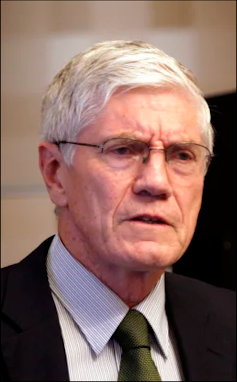
In 2016 Morrison commissioned retired public servant Michael Callaghan to inquire into why the minerals resource tax was raising so little money.
Callahan found it well designed for oil, which it was set up to tax in 1988, but poorly designed for gas.
One of the two biggest problems was “uplift”. Profits are taxed after deducting earlier losses. These losses are carried forward using an uplift rate.
For oil projects, the uplift rate on losses doesn’t much matter because they start making profits fairly soon.
Gas projects are much more expensive and take many more years to produce a return, making the uplift rate significant.
Australia applies two uplift rates: the long-term bond rate plus 5% (for general losses), and the long-term bond rate plus 15% (for exploration losses).
So much can the long-term bond rate plus 15% grow over time that Callaghan found it allowed exploration deductions to
almost double every four years, which means that a moderate amount of exploration expenditure can grow into a large tax shield
And firms hang on to the high-uplift deductions, using the low-uplift ones first.
The second big problem is that, whereas with oil it is easy to tell when the oil has been mined and the profit should be taxed, with integrated liquidated natural gas projects, it is hard to tell when the mining stops and the liquefaction starts.
Taxing In The Dark
Without an observable final price for the gas before it is liquified, three methods are used – two of them complex and one a private agreement with the tax office.
Callaghan found that if the simpler “netback” method was used, the tax would raise an extra $89 billion between 2023 and 2050 including a “particularly strong” extra $68 billion between 2027 and 2039 at the prices then prevailing.
In his 2018 response Treasurer Josh Frydenberg cut the uplift rates and asked the treasury to review the method of calculating the transfer price. It was to report back “within 12 to 18 months”.
For all we know, the treasury did report back, perhaps two years ago in May 2020.
It’s a fair bet our new government will be keener than the old to actually raise more than a couple of billion from the petroleum resource rent tax, especially given the amount now available to tax.
If the extra tax was used to provide relief from high energy prices, Australia’s government could no more be criticised than could Boris Johnson’s in the UK.
And if it merely said it was thinking of properly applying the tax we’ve got, it might find Australia’s gas exporters suddenly more co-operative.![]()
Peter Martin, Visiting Fellow, Crawford School of Public Policy, Australian National University
This article is republished from The Conversation under a Creative Commons license. Read the original article.
Pittwater Reserves: Histories + Notes + Pictorial Walks
A History Of The Campaign For Preservation Of The Warriewood Escarpment by David Palmer OAM and Angus Gordon OAM
America Bay Track Walk - photos by Joe Mills
Angophora Reserve - Angophora Reserve Flowers
Annie Wyatt Reserve - A Pictorial
Avalon's Village Green: Avalon Park Becomes Dunbar Park - Some History + Toongari Reserve and Catalpa Reserve
Bairne Walking Track Ku-Ring-Gai Chase NP by Kevin Murray
Bangalley Headland Bangalley Mid Winter
Banksias of Pittwater
Barrenjoey Boathouse In Governor Phillip Park Part Of Our Community For 75 Years: Photos From The Collection Of Russell Walton, Son Of Victor Walton
Barrenjoey Headland: Spring flowers
Barrenjoey Headland after fire
Bayview Baths
Bayview Wetlands
Beeby Park
Bilgola Beach
Botham Beach by Barbara Davies
Bungan Beach Bush Care
Careel Bay Saltmarsh plants
Careel Bay Birds
Careel Bay Clean Up day
Careel Bay Playing Fields History and Current
Careel Creek
Careel Creek - If you rebuild it they will come
Centre trail in Ku-ring-gai Chase National Park
Chiltern Track- Ingleside by Marita Macrae
Clareville Beach
Clareville/Long Beach Reserve + some History
Coastal Stability Series: Cabbage Tree Bay To Barrenjoey To Observation Point by John Illingsworth, Pittwater Pathways, and Dr. Peter Mitchell OAM
Cowan Track by Kevin Murray
Curl Curl To Freshwater Walk: October 2021 by Kevin Murray and Joe Mills
Currawong and Palm Beach Views - Winter 2018
Currawong-Mackerel-The Basin A Stroll In Early November 2021 - photos by Selena Griffith
Currawong State Park Currawong Beach + Currawong Creek
Deep Creek To Warriewood Walk photos by Joe Mills
Drone Gives A New View On Coastal Stability; Bungan: Bungan Headland To Newport Beach + Bilgola: North Newport Beach To Avalon + Bangalley: Avalon Headland To Palm Beach
Duck Holes: McCarrs Creek by Joe Mills
Dunbar Park - Some History + Toongari Reserve and Catalpa Reserve
Dundundra Falls Reserve: August 2020 photos by Selena Griffith - Listed in 1935
Elsie Track, Scotland Island
Elvina Track in Late Winter 2019 by Penny Gleen
Elvina Bay Walking Track: Spring 2020 photos by Joe Mills
Elvina Bay-Lovett Bay Loop Spring 2020 by Kevin Murray and Joe Mills
Fern Creek - Ingleside Escarpment To Warriewood Walk + Some History photos by Joe Mills
Iluka Park, Woorak Park, Pittwater Park, Sand Point Reserve, Snapperman Beach Reserve - Palm Beach: Some History
Ingleside
Ingleside Wildflowers August 2013
Irrawong - Ingleside Escarpment Trail Walk Spring 2020 photos by Joe Mills
Irrawong - Mullet Creek Restoration
Katandra Bushland Sanctuary - Ingleside
Lucinda Park, Palm Beach: Some History + 2022 Pictures
McCarrs Creek
McCarr's Creek to Church Point to Bayview Waterfront Path
McKay Reserve
Mona Vale Beach - A Stroll Along, Spring 2021 by Kevin Murray
Mona Vale Headland, Basin and Beach Restoration
Mount Murray Anderson Walking Track by Kevin Murray and Joe Mills
Mullet Creek
Narrabeen Creek
Narrabeen Lagoon Catchment: Past Notes Present Photos by Margaret Woods
Narrabeen Lagoon State Park
Narrabeen Lagoon State Park Expansion
Narrabeen Rockshelf Aquatic Reserve
Nerang Track, Terrey Hills by Bea Pierce
Newport Bushlink - the Crown of the Hill Linked Reserves
Newport Community Garden - Woolcott Reserve
Newport to Bilgola Bushlink 'From The Crown To The Sea' Paths: Founded In 1956 - A Tip and Quarry Becomes Green Space For People and Wildlife
Pittwater spring: waterbirds return to Wetlands
Pittwater's Lone Rangers - 120 Years of Ku-Ring-Gai Chase and the Men of Flowers Inspired by Eccleston Du Faur
Pittwater's Parallel Estuary - The Cowan 'Creek
Resolute Track at West Head by Kevin Murray
Resolute Track Stroll by Joe Mills
Riddle Reserve, Bayview
Salvation Loop Trail, Ku-Ring-Gai Chase National Park- Spring 2020 - by Selena Griffith
Stapleton Reserve
Stapleton Park Reserve In Spring 2020: An Urban Ark Of Plants Found Nowhere Else
The Chiltern Track
The Resolute Beach Loop Track At West Head In Ku-Ring-Gai Chase National Park by Kevin Murray
Towlers Bay Walking Track by Joe Mills
Trafalgar Square, Newport: A 'Commons' Park Dedicated By Private Landholders - The Green Heart Of This Community
Tranquil Turimetta Beach, April 2022 by Joe Mills
Turimetta Beach Reserve by Joe Mills, Bea Pierce and Lesley
Turimetta Beach Reserve: Old & New Images (by Kevin Murray) + Some History
Turimetta Headland
Warriewood Wetlands and Irrawong Reserve
Whale Beach Ocean Reserve: 'The Strand' - Some History On Another Great Protected Pittwater Reserve
Wilshire Park Palm Beach: Some History + Photos From May 2022
Winji Jimmi - Water Maze

New Shorebirds WingThing For Youngsters Available To Download
A Shorebirds WingThing educational brochure for kids (A5) helps children learn about shorebirds, their life and journey. The 2021 revised brochure version was published in February 2021 and is available now. You can download a file copy here.
If you would like a free print copy of this brochure, please send a self-addressed envelope with A$1.10 postage (or larger if you would like it unfolded) affixed to: BirdLife Australia, Shorebird WingThing Request, 2-05Shorebird WingThing/60 Leicester St, Carlton VIC 3053.

 Shorebird Identification Booklet
Shorebird Identification Booklet
The Migratory Shorebird Program has just released the third edition of its hugely popular Shorebird Identification Booklet. The team has thoroughly revised and updated this pocket-sized companion for all shorebird counters and interested birders, with lots of useful information on our most common shorebirds, key identification features, sighting distribution maps and short articles on some of BirdLife’s shorebird activities.
The booklet can be downloaded here in PDF file format: http://www.birdlife.org.au/documents/Shorebird_ID_Booklet_V3.pdf
Paper copies can be ordered as well, see http://www.birdlife.org.au/projects/shorebirds-2020/counter-resources for details.
Download BirdLife Australia's children’s education kit to help them learn more about our wading birdlife
Shorebirds are a group of wading birds that can be found feeding on swamps, tidal mudflats, estuaries, beaches and open country. For many people, shorebirds are just those brown birds feeding a long way out on the mud but they are actually a remarkably diverse collection of birds including stilts, sandpipers, snipe, curlews, godwits, plovers and oystercatchers. Each species is superbly adapted to suit its preferred habitat. The Red-necked Stint is as small as a sparrow, with relatively short legs and bill that it pecks food from the surface of the mud with, whereas the Eastern Curlew is over two feet long with a exceptionally long legs and a massively curved beak that it thrusts deep down into the mud to pull out crabs, worms and other creatures hidden below the surface.
Some shorebirds are fairly drab in plumage, especially when they are visiting Australia in their non-breeding season, but when they migrate to their Arctic nesting grounds, they develop a vibrant flush of bright colours to attract a mate. We have 37 types of shorebirds that annually migrate to Australia on some of the most lengthy and arduous journeys in the animal kingdom, but there are also 18 shorebirds that call Australia home all year round.
What all our shorebirds have in common—be they large or small, seasoned traveller or homebody, brightly coloured or in muted tones—is that each species needs adequate safe areas where they can successfully feed and breed.
The National Shorebird Monitoring Program is managed and supported by BirdLife Australia.
This project is supported by Glenelg Hopkins Catchment Management Authority and Hunter Local Land Services through funding from the Australian Government’s National Landcare Program. Funding from Helen Macpherson Smith Trust and Port Phillip Bay Fund is acknowledged.
The National Shorebird Monitoring Program is made possible with the help of over 1,600 volunteers working in coastal and inland habitats all over Australia.
The National Shorebird Monitoring program (started as the Shorebirds 2020 project initiated to re-invigorate monitoring around Australia) is raising awareness of how incredible shorebirds are, and actively engaging the community to participate in gathering information needed to conserve shorebirds.
In the short term, the destruction of tidal ecosystems will need to be stopped, and our program is designed to strengthen the case for protecting these important habitats.
In the long term, there will be a need to mitigate against the likely effects of climate change on a species that travels across the entire range of latitudes where impacts are likely.
The identification and protection of critical areas for shorebirds will need to continue in order to guard against the potential threats associated with habitats in close proximity to nearly half the human population.
Here in Australia, the place where these birds grow up and spend most of their lives, continued monitoring is necessary to inform the best management practice to maintain shorebird populations.
BirdLife Australia believe that we can help secure a brighter future for these remarkable birds by educating stakeholders, gathering information on how and why shorebird populations are changing, and working to grow the community of people who care about shorebirds.
To find out more visit: http://www.birdlife.org.au/projects/shorebirds-2020/shorebirds-2020-program
Aussie Bread Tags Collection Points

20 Students Secure Premier's ANZAC Memorial Scholarship
Free Training To Deliver In-Demand Winter Skills
 More than 1,500 fee-free training places are up for grabs as part of the NSW Government’s Winter Skills program, which aims to get people skilled for a bumper winter tourism and hospitality season.
More than 1,500 fee-free training places are up for grabs as part of the NSW Government’s Winter Skills program, which aims to get people skilled for a bumper winter tourism and hospitality season.HSC Artists In Virtual Exhibition
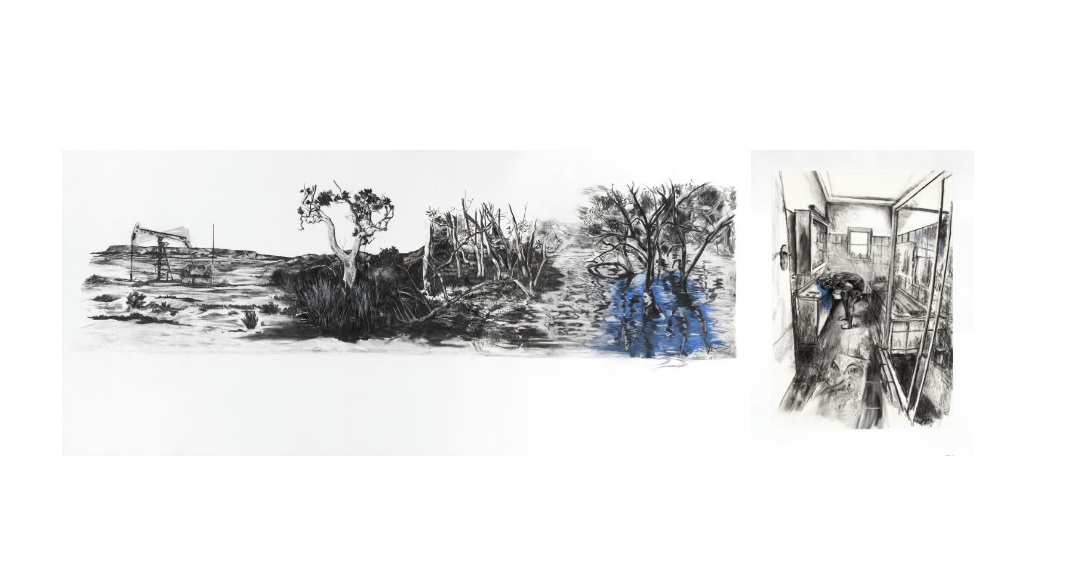
Alignment Of Planets This June
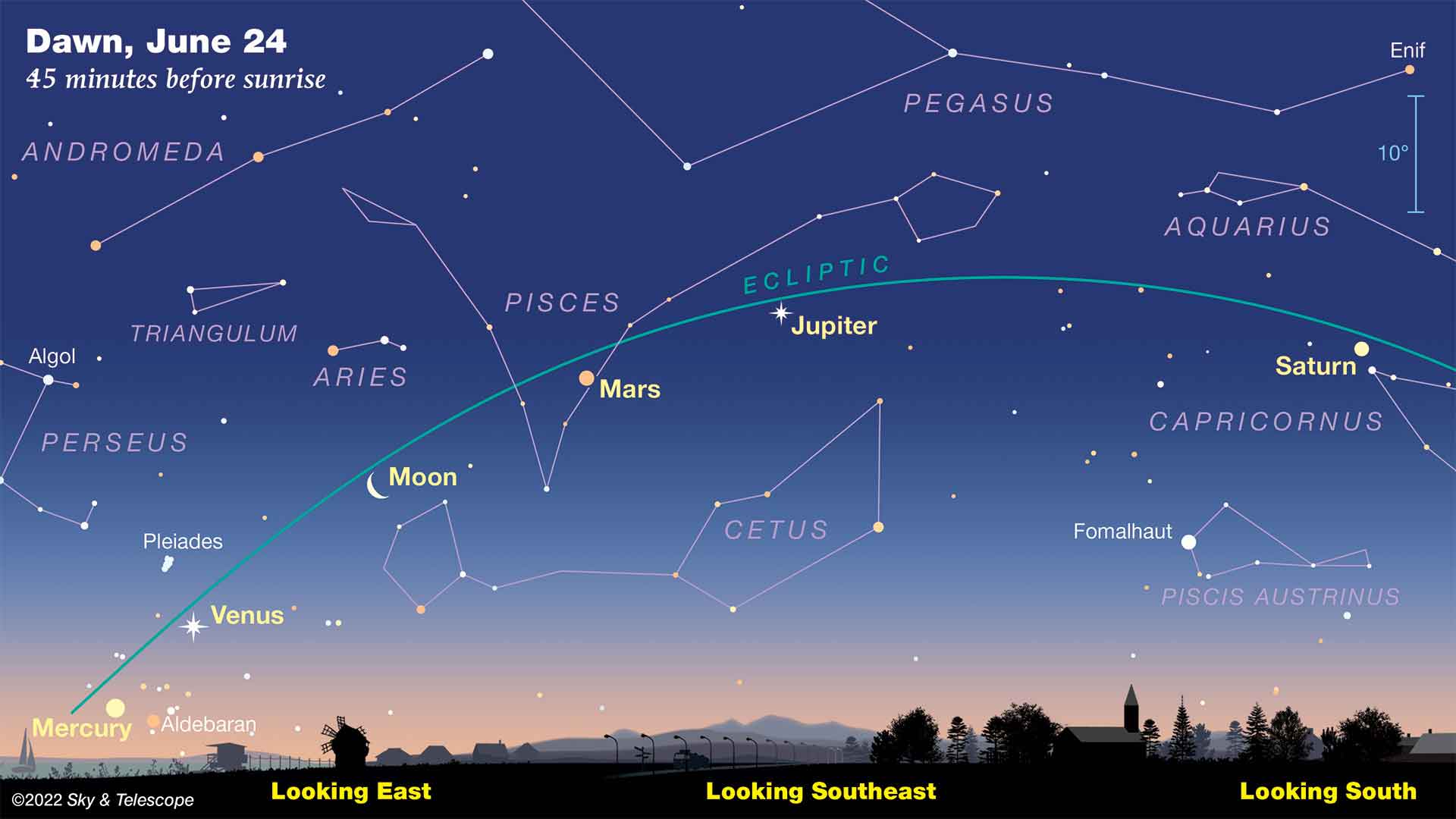
Dorothea Mackellar Poetry Awards 2022: Entries Close June 30th

There's also a special History page running this Issue for you - the Australian poet Dorothea Mackellar, after whom the Electorate of Mackellar is named, had a house here in Pittwater at Lovett Bay.
“Our poets are encouraged to take inspiration from wherever they may find it, however if they are looking for some direction, competition participants are invited to use this year’s optional theme to inspire their entries.”
In 2022, the Dorothea Mackellar Memorial Society has chosen the theme “In My Opinion.”
As always, it is an optional theme. The Society encourages students to write about topics and experiences that spark their poetic genius (in whatever form they choose.)
HOW TO ENTER
PLEASE SEE HERE FOR A DETAILED PDF ON ENTRY INSTRUCTIONS FOR TEACHERS AND PARENTS.
ONLINE SUBMISSION
Primary school and secondary school entries can be submitted anytime during the competition period. Visit: https://dorothea.com.au/how-to-enter/
Word Of The Week: Youth
The quality or state of being young. The part of life following childhood; the period of existence preceding maturity or age; the whole early part of life, from childhood, or, sometimes, from infancy, to adulthood. A young person. A young man; a male adolescent or young adult.
From Middle English youthe, from Old English geoguth; akin to Old English geong young — Middle English youthe, youhthe, ȝouthe, ȝewethe, ȝuȝethe, ȝeoȝuthe, from Old English ġeoguþ (“the state of being young; youth”), from Proto-West Germanic *juwunþa, from Proto-Germanic *jugunþō, *jugunþiz (“youth”), corresponding to young + -th. Cognate with Saterland Frisian Juugd, West Frisian jeugd, Dutch jeugd, German Low German Jöögd, German Jugend.
Compare YOLAN ‘young man’ from Old Norse. Compare Old High German uhlan, Polish ulan, Turkish olan, Old English yulan, Sanskrit juman.
Bruce Springsteen - Dancing In The Dark (Official Video)
Kansas - Carry On Wayward Son (Official Audio)
The Faces - Ooh La La (1973)
Who really gets fired over social media posts? We studied hundreds of cases to find out

What you say and do on social media can affect your employment; it can prevent you from getting hired, stall career progression and may even get you fired. Is this fair – or an invasion of privacy?
Our recent research involved a study of 312 news articles about people who had been fired because of a social media post.
These included stories about posts people had made themselves, such as a teacher who was fired after they came out as bisexual on Instagram, or a retail employee let go over a racist post on Facebook.
It also included stories about posts made by others, such as videos of police engaging in racial profiling (which led to their dismissal).
Racism was the most common reason people were fired in these news stories, with 28% of stories related specifically to racism. Other forms of discriminatory behaviour were sometimes involved, such as queerphobia and misogyny (7%); workplace conflict (17%); offensive content such as “bad jokes” and insensitive posts (16%); acts of violence and abuse (8%); and “political content” (5%).
We also found these news stories focused on cases of people being fired from public-facing jobs with high levels of responsibility and scrutiny. These included police/law enforcement (20%), teachers (8%), media workers (8%), medical professionals (7%), and government workers (3%), as well as workers in service roles such as hospitality and retail (13%).
Social media is a double-edged sword. It can be used to hold people to account for discriminatory views, comments or actions. But our study also raised important questions about privacy, common HR practices and how employers use social media to make decisions about their staff.
Young people in particular are expected to navigate social media use (documenting their lives, hanging out with friends, and engaging in self-expression) with the threat of future reputational harm looming.
Are All Online Posts Fair Game?
Many believe people just need to accept the reality that what you say and do on social media can be used against you.
And that one should only post content they wouldn’t mind their boss (or potential boss) seeing.
But to what extent should employers and recruiting managers respect the privacy of employees, and not use personal social media to make employment decisions?
Or is everything “fair game” in making hiring and firing decisions?
On the one hand, the capacity for using social media to hold certain people (like police and politicians) to account for what they say and do can be immensely valuable to democracy and society.
Powerful social movements such as #MeToo and #BlackLivesMatter used social media to call out structural social problems and individual bad actors.
On the other hand, when everyday people lose their jobs (or don’t get hired in the first place) because they’re LGBTQ+, post a photo of themselves in a bikini, or because they complain about customers in private spaces (all stories from our study), the boundary between professional and private lives is blurred.
Mobile phones, emails, working from home, highly competitive employment markets, and the intertwining of “work” with “identity” all serve to blur this line.
Some workers must develop their own strategies and tactics, such as not friending or following workmates on some social media (which itself can lead to tensions).
And even when one does derive joy and fulfilment from work, we should expect to have some boundaries respected.
Employers, HR workers, and managers should think carefully about the boundaries between professional and personal lives; using social media in employment decisions can be more complicated than it seems.

A ‘Hidden Curriculum Of Surveillance’
When people feel monitored by employers (current, or imagined future ones) when they use social media, this creates a “hidden curriculum of surveillance”. For young people especially, this can be damaging and inhibiting.
This hidden curriculum of surveillance works to produce compliant, self-governing citizen-employees. They are pushed to curate often highly sterile representations of their lives on social media, always under threat of employment doom.
At the same time, these very same social media have a clear and productive role in revealing violations of power. Bad behaviour, misconduct, racism, misogyny, homophobia, transphobia, and other forms of bigotry, harassment, and violence have all been exposed by social media.
So, then, this surveillance can be both bad and good – invasive in some cases and for some people (especially young people whose digitally-mediated lives are managed through this prism of future impact) but also liberating and enabling justice, accountability, and transparency in other scenarios and for other actors.
Social media can be an effective way for people to find work, for employers to find employees, to present professional profiles on sites like LinkedIn or portfolios of work on platforms like Instagram, but these can also be personal spaces even when they’re not set to private.
How we get the balance right between using social media to hold people to account versus the risk of invading people’s privacy depends on the context, of course, and is ultimately about power.![]()
Brady Robards, Senior Lecturer in Sociology, Monash University and Darren Graf, Assistant researcher, Monash University
This article is republished from The Conversation under a Creative Commons license. Read the original article.
Could steam-powered cars decrease the CO2 in the atmosphere?


Curious Kids is a series for children of all ages. If you have a question you’d like an expert to answer, send it to curiouskidsus@theconversation.com.
Could steam-powered cars decrease the carbon dioxide in our atmosphere? – Emma, age 16, Springville, Utah
With the growing severity and frequency of storms, heat waves and wildfires, and the other dangers from climate change, there are many reasons to be concerned about the amount of carbon dioxide in the atmosphere. Scientists have shown that humanity’s addiction to burning fossil fuels is causing this problem, which means it’s time to kick that habit.
Because transportation generates more than one-fourth of the CO2 emitted by burning fossil fuels, slashing CO2 emissions requires phasing out vehicles powered by gasoline, diesel and natural gas.
Steam powered many of the early automobiles sold around 1900. Could the same technology play a role again?
The ‘Stanley Steamer’
The steam-powered car became possible once gasoline and diesel oil replaced wood and coal for the powering of engines.
Inventors Francis and Freelan Stanley, twin brothers, became automaking pioneers after they improved photographic technology. In 1898 and 1899 they were selling more vehicles than any other early automaker, and their steam-powered “Rocket Racer” set a speed record in 1906.
All along, cars powered by internal combustion engines – the kind most in use today – were competing with steam cars and winning the technology war. Starting in 1912, electric starters made them safer and more convenient by replacing dangerous hand cranks. By 1920, when its assembly lines started producing the Model T with an electric starter, Ford was selling hundreds of thousands of cars per year.
In contrast, early steam cars were heavy and expensive, and it took a long time to make enough steam to get them rolling. Doble Steam Motors, another early automaker, eventually solved this last problem and many others, but the cars remained pricey, and it was too late: The noisy and polluting but much cheaper internal combustion engine had won out. The Stanley Motor Carriage Co. ceased operating in 1924.
To be clear, because the heat to boil water to make steam has to come from somewhere, these steam-powered vehicles burned fossil fuels to heat their water anyway.
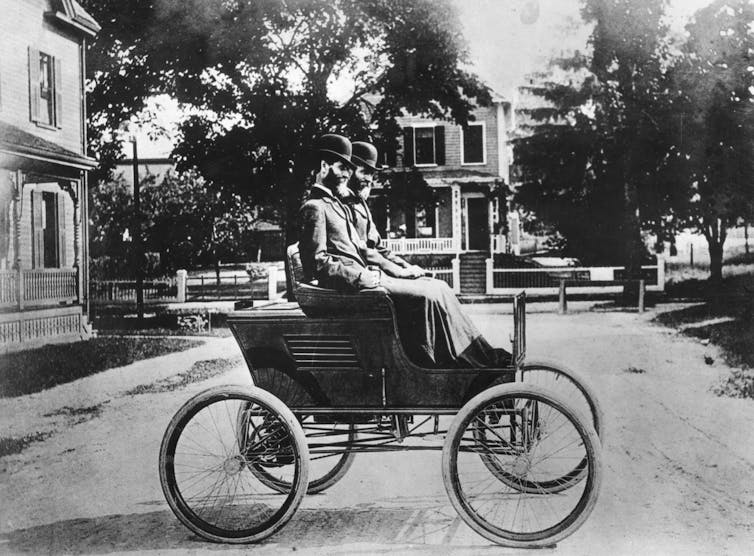
A 1970s Comeback
Steam power had something of a comeback in the 1970s, but not because of climate concerns. Back then, air pollution spewed by vehicles had become a serious problem filling cities with smog.
Steam boilers can burn fuel more thoroughly than a standard internal combustion engine, leading to cleaner exhaust that is mostly water and carbon dioxide.
At the time, that was seen as an improvement.
Some of the cities battling pollution from automobile exhaust added steam-powered buses to their fleets. This resurgence was short-lived because of the arrival of new technologies that could curb pollution from internal combustion engines.

Steam’s Drawback And Electricity’s Advantages
The biggest obstacle for steam-powered vehicles is that steam isn’t a source of energy. Rather, it is a source of power for the wheels.
While getting around in steam-powered vehicles might make the air cleaner in the drivers’ own communities, switching to steam-powered engines that continue to burn gasoline and diesel wouldn’t reduce CO2 emissions.
A different approach can potentially eliminate the need to burn fossil fuels for transportation: replacing gasoline tanks with batteries to provide the energy, along with swapping out internal combustion engines for electric motors to turn the wheels.
The reduction in carbon emissions will be far greater if vehicles run on electricity generated by wind turbines, solar panels or other energy sources that don’t emit carbon dioxide.

As it happens, some of the first cars ever made were electric. Manufacturers stopped making those models because the need to recharge their batteries after short distances rendered those vehicles less convenient than those powered by fossil fuels.
Battery technology is so much better now that some electric vehicles can travel 400 miles (640 kilometers) without needing to recharge. Instead of switching to steam as a source of power to help reduce carbon dioxide emissions, we recommend electricity generated from renewable sources.
Hello, curious kids! Do you have a question you’d like an expert to answer? Ask an adult to send your question to CuriousKidsUS@theconversation.com. Please tell us your name, age and the city where you live.
And since curiosity has no age limit – adults, let us know what you’re wondering, too. We won’t be able to answer every question, but we will do our best.![]()
Brian Stewart, Professor of Physics, Wesleyan University and Gary W. Yohe, Huffington Foundation Professor of Economics and Environmental Studies, Wesleyan University
This article is republished from The Conversation under a Creative Commons license. Read the original article.
If you’re renting, chances are your home is cold. With power prices soaring, here’s what you can do to keep warm

If you’re feeling the cold this winter, you’re not alone. About a quarter of all Australians have trouble keeping their homes warm enough in winter. That figure is likely to soar this year, due to poor quality housing and the rapidly escalating energy crisis.
Renters are particularly at risk, but our research has shown many home owners are in the same boat as well. We’ve collected data over the last few years on how many Australians have cold homes, find it difficult to stay warm, and can’t afford their heating bills.
What counts as cold? The World Health Organization recommends a minimum home temperature of 18℃ for health and wellbeing. About a fifth of Australian renters, for example, have cold homes. Our current research has shown this applies to home owners as well, with 26% of people across all housing types unable to stay warm at least half of the time during winter.
Australia’s energy crisis is likely to see soaring rates of energy poverty, meaning being unable to keep your home warm or cool enough. Here’s why this is such a problem – and what you can do about it.
Cold Homes Affect Our Health
If you’re cold at home, you have a higher risk of developing respiratory problems and high blood pressure. People in the coldest homes face a higher risk of dying in winter. Cold can have a flow-on impact on our health system, which is already struggling.
Australia’s south-east has had the coldest start to winter in decades. Melbourne hasn’t been this cold this early since 1949, while Sydney hasn’t seen these temperatures in early June since 1989.

Double Trouble: Cold Weather And The Energy Crisis
If you’ve been hit by the recent cold snap, chances are you’ll have been reminded how cold your home can get. This is not a surprise given how badly existing homes and new housing perform in keeping an even temperature.
The cold has made many people doubly worried, because the energy required to heat our leaky, poorly insulated homes is about to get very expensive.
Early results from our survey of over 350 Australians found 25% of people were experiencing shortages of money to the point they will be unable to adequately heat their homes. One third of our respondents said energy was unaffordable. Some reported making trade-offs, such as skimping on food or healthcare to pay energy bills.
These people are experiencing energy poverty, where a household is unable to properly heat or cool their home or face significant financial difficulty doing so.
While data about energy poverty in Australia is patchy, we know around 180,000 households in Victoria had persistent bill payment issues as of 2018, and 45,000 households were consistently unable to heat their homes.
Energy Price Increases Hit Lower Income Households Hardest
Lower income households are more at risk from the cold. That’s because they’re more likely to live in homes that are in poor condition and hard to heat. One quarter of low income households told us they struggle to stay warm. Insulation may be a key factor, with 25% of our respondents reporting their rental properties did not have insulation.
Insulation matters, because heat escapes homes through single-pane windows, or poorly insulated walls and ceilings. As a result, poorly insulated homes cost more to heat.
This makes life harder for low income renters, given they have little control over insulation or other home modifications. Worse still, heaters that are cheap to buy are often the most expensive to run.
While an efficient reverse cycle air conditioner would save money and heat the space better over the longer term, it is often difficult for renters to negotiate installation with property managers or landlords – especially given the intense competition for rentals at present in many cities. That can mean renters will suffer in silence, unwilling to ask for something that will make their lives better.

What Can Renters Do?
Low income renters face real threats from energy poverty this year. While we need systemic change to improve the outlook for Australia’s renters, there are low-cost DIY ways to improve how your house retains heat this winter.
The first step: check your current heating appliances are working efficiently. Many people don’t clean the filters on their reverse cycle air conditioners. This makes them less efficient, and can drive up energy bills.
Poorly sealed windows and doors make it hard to stay warm.
Using thermal curtains, and keeping them closed makes a big difference. Putting a piece of plywood or even a scarf between the curtain rail and the wall to make a DIY pelmet also helps keep the heat in. If you have single glazed windows, consider window films as a way to improve performance for a fraction of the cost of double glazed windows.
Sealing the cracks around windows, under doors and around the wider home is also important. Silicon or expanding foam can be used for gaps and cracks. Draughts under doors can be stopped with door seals or door snakes.

Close the doors to your bathroom, laundry and other rooms not in use to keep the heat where you need it most. Hanging a blanket over a doorway can also be a cheap way to seal off a room and concentrate heat.
It’s also worth checking what rebates and concessions your state government or council is offering. These might include energy efficiency improvements or extra help with heating costs. If you’re renting, your home must meet minimum standards, so make sure you check what you are entitled to as these vary by state.
Everyone deserves a warm home. Our health and well-being depend on it. Building new, energy efficient homes is only part of the answer. We also have to make our 10.8 million existing dwellings warmer.![]()
Cynthia Faye Isley, Postdoctoral Research Fellow, Australian Centre for Housing Research, University of Adelaide; Emma Baker, Professor of Housing Research, University of Adelaide; Lyrian Daniel, Senior lecturer, University of Adelaide, and Trivess Moore, Senior Lecturer, School of Property, Construction and Project Management, RMIT University
This article is republished from The Conversation under a Creative Commons license. Read the original article.
Goodbye Internet Explorer. You won’t be missed (but your legacy will be remembered)

After 27 years, Microsoft has finally bid farewell to the web browser Internet Explorer, and will redirect Explorer users to the latest version of its Edge browser.
As of June 15, Microsoft ended support for Explorer on several versions of Windows 10 – meaning no more productivity, reliability or security updates. Explorer will remain a working browser, but won’t be protected as new threats emerge.
Twenty-seven years is a long time in computing. Many would say this move was long overdue. Explorer has been long outperformed by its competitors, and years of poor user experiences have made it the butt of many internet jokes.
How It Began
Explorer was first introduced in 1995 by the Microsoft Corporation, and came bundled with the Windows operating system.
To its credit, Explorer introduced many Windows users to the joys of the internet for the first time. After all, it was only in 1993 that Tim Berners-Lee, the father of the web, released the first public web browser (aptly called WorldWideWeb).
Providing Explorer as its default browser meant a large proportion of Windows’s global user base would not experience an alternative. But this came at a cost, and Microsoft eventually faced multiple antitrust investigations exploring its monopoly on the browser market.
Still, even though a number of other browsers were around (including Netscape Navigator, which pre-dated Explorer), Explorer remained the default choice for millions of people up until around 2002, when Firefox was launched.
How It Ended
Microsoft has released 11 versions of Explorer (with many minor revisions along the way). It added different functionality and components with each release. Despite this, it lost consumers’ trust due to Explorer’s “legacy architecture” which involved poor design and slowness.
It seems Microsoft got so comfortable with its monopoly that it let the quality of its product slide, just as other competitors were entering the battlefield.
Even just considering its cosmetic interface (what you see and interact with when you visit a website), Explorer could not give users the authentic experience of modern websites.
On the security front, Explorer exhibited its fair share of weaknesses, which cyber criminals readily and successfully exploited.
While Microsoft may have patched many of these weaknesses over different versions of the browser, the underlying architecture is still considered vulnerable by security experts. Microsoft itself has acknowledged this:
… [Explorer] is still based on technology that’s 25 years old. It’s a legacy browser that’s architecturally outdated and unable to meet the security challenges of the modern web.
These concerns have resulted in the United States Department for Homeland Security repeatedly advising internet users against using Explorer.
Explorer’s failure to win over modern audiences is further evident through Microsoft’s ongoing attempts to push users towards Edge. Edge was first introduced in 2015, and since then Explorer has only been used as a compatibility solution.
What Explorer Was Up Against
In terms of market share, more than 64% of browser users currently use Chrome. Explorer has dropped to less than 1%, and even Edge only accounts for about 4% of users. What has given Chrome such a leg-up in the browser market?
Chrome was first introduced by Google in 2008, on the open source Chromium project, and has since been actively developed and supported.
Being open source means the software is publicly available, and anyone can inspect the source code that runs behind it. Individuals can even contribute to the source code, thereby enhancing the software’s productivity, reliability and security. This was never an option with Explorer.
Moreover, Chrome is multi-platform: it can be used in other operating systems such as Linux, MacOS and on mobile devices, and was supporting a range of systems long before Edge was even released.
Meanwhile, Explorer has mainly been restricted to Windows, XBox and a few versions of MacOS.
Under The Hood
Microsoft’s Edge browser is using the same Chromium open-source code that Chrome has used since its inception. This is encouraging, but it remains to be seen how Edge will compete against Chrome and other browsers to win users’ confidence.
We won’t be surprised if Microsoft fails to nudge customers towards using Edge as their favourite browser. The latest stats suggest Edge is still far behind Chrome in terms of market share.
Also, the fact Microsoft took seven years to retire Explorer after Edge’s initial release suggests the company hasn’t had great success in getting Edge’s uptake rolling.

What’s Next?
Web browsers play a vital role in establishing privacy and security for users. Design and convenience are important factors for users when selecting a browser. So ultimately, the browser that can most effectively balance security and ease of use will win users.
And it’s hard to say whether Chrome’s current popularity will be sustained over time. Google will no doubt want it to continue, since web browsers are significant revenue sources.
But Google as a corporation is becoming increasingly unpopular due to massive data gathering and intrusive advertising practices. Chrome is a key component of Google’s data-gathering machine, so it’s possible users may slowly turn away.
As for what to do about Explorer (if you’re one of the few people that still has it sitting meekly on your desktop) – simply uninstall it to avoid security risks.
Even if you’re not using Explorer, just having it installed could present a threat to your device. No one wants to be the victim of a cyber attack via a dead browser!
![]()
Mohiuddin Ahmed, Lecturer of Computing & Security, Edith Cowan University; M Imran Malik, Cyber Security Researcher, Edith Cowan University, and Paul Haskell-Dowland, Professor of Cyber Security Practice, Edith Cowan University
This article is republished from The Conversation under a Creative Commons license. Read the original article.
Did a giant radio telescope in China just discover aliens? Not so FAST…
Danny C Price, Curtin University“Extraordinary claims require extraordinary evidence.”
– Carl Sagan (Cosmos, 1980)
This phrase is the standard that astronomers will be applying to a curious signal captured with China’s “Sky Eye” telescope that might be a transmission from alien technology.
An article reporting the signal was posted on the website of China’s state-backed Science and Technology Daily newspaper, but was later removed. So have astronomers finally found evidence of intelligent found life beyond Earth? And is it being hushed up?
We should be intrigued, but not too excited (yet). An interesting signal has to go through a lot of tests to check whether it truly carries the signature of extraterrestrial technology or is just the result of an unexpected source of terrestrial interference.
And as for the deletion: media releases are normally timed for simultaneous release with peer-reviewed results – which are not yet available – so it was likely just released a bit early by mistake.
An Eye On The Sky
Sky Eye, which is offically known as the Five-hundred-meter Aperture Spherical Telescope (FAST), is the the largest and most sensitive single-dish radio telescope in the world. A engineering marvel, its gargantuan structure is built inside a natural basin in the mountains of Guizhou, China.
The telescope is so huge it can’t be physically tilted, but it can be pointed in a direction by thousands of actuators that deform the telescope’s reflective surface. By deforming the surface, the location of the telescope’s focal point changes, and the telescope can look at a different part of the sky.
FAST detects radiation at radio wavelengths (up to 10 cm) and is used for astronomical research in a wide range of areas. One area is the search for extraterrestrial intelligence, or SETI.
SETI observations are mainly done in “piggy-back” mode, which means they are taken while the telescope is also running its primary science programs. In this way, large swaths of the sky can be scanned for signs of alien technology – or “technosignatures” – without getting in the way of other science operations. For special targets like nearby exoplanets, dedicated SETI observations are still carried out.
The Hunt For Alien Technology
Technosignature searches have been ongoing since the 1960s, when the American astronomer Frank Drake pointed the 26-metre Tatel telescope toward two nearby Sun-like stars and scanned them for signs of technology.
Over the years, technosignature searches have become far more rigorous and sensitive. The systems in place at FAST are also able to process billions of times more of the radio spectrum than Drake’s experiment.
Despite these advances, we haven’t yet found any evidence of life beyond Earth.
FAST sifts through enormous amounts of data. The telescope feeds 38 billion samples a second into a cluster of high-performance computers, which then produces exquisitely detailed charts of incoming radio signals. These charts are then searched for signals that look like technosignatures.
With such a large collecting area, FAST can pick up incredibly faint signals. It is about 20 times more sensitive than Australia’s Murriyang telescope at the Parkes Radio Observatory. FAST could easily detect a transmitter on a nearby exoplanet with a similar output power to radar systems we have here on Earth.
The Trouble With Sensitivity
The trouble with being so sensitive is that you can uncover radio interference that would otherwise be too faint to detect. We SETI researchers have had this problem before.
Last year, using Murriyang, we detected an extremely interesting signal we called BLC1.
However, it turned out to be very strange interference (not aliens). To uncover its true nature, we had to develop a new verification framework.
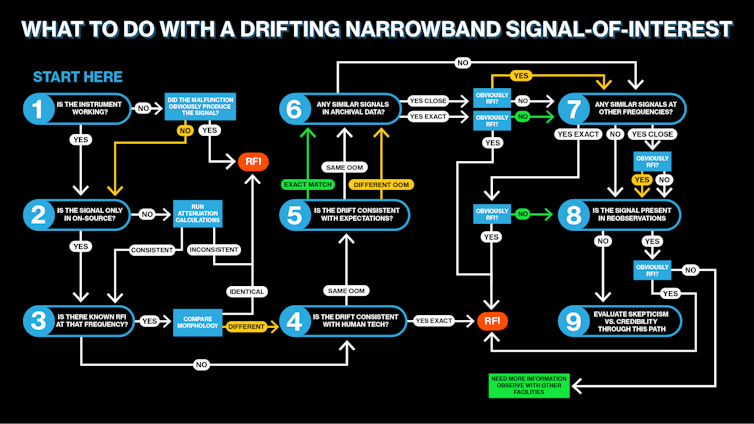
With BLC1, it took about a year from when it was initially reported to when peer-reviewed analysis was published. Similarly, we may need to wait a while for the FAST signal to be analysed in depth.
Professor Zhang Tongjie, chief scientist for the China Extraterrestrial Civilization Research Group, acknowledged this in the Science & Technology Daily report:
The possibility that the suspicious signal is some kind of radio interference is also very high, and it needs to be further confirmed and ruled out. This may be a long process.
And we may need to get used to a gap between finding candidate signals and verifying them. FAST and other telescopes are likely to find many more signals of interest.
Most of these will turn out to be interference, but some may be new astrophysical phenomena, and some may be bona fide technosignatures.
Stay Intrigued
Will FAST’s extraordinary signals meet the burden of extraordinary evidence? Until their work is reviewed and published, it’s still too early to say, but it’s encouraging that their SETI search algorithms are finding curious signals.
Between FAST, the Breakthrough Listen initiative, and the SETI Institute’s COSMIC program, the SETI field is seeing a lot of interest and activity. And it’s not just radio waves: searches are also underway using optical and infrared light.
As for right now: stay intrigued, but don’t get too excited.![]()
Danny C Price, Senior research fellow, Curtin University
This article is republished from The Conversation under a Creative Commons license. Read the original article.
Nine vegetables that are healthier for you when cooked

Raw food diets are a fairly recent trend, including raw veganism. The belief being that the less processed food is, the better. However, not all food is more nutritious when eaten raw. Indeed, some vegetables are actually more nutritious when cooked. Here are nine of them.
1. Asparagus
All living things are made up of cells, and in vegetables, important nutrients are sometimes trapped within these cell walls. When vegetables are cooked, the walls break down, releasing the nutrients that can then be absorbed more easily by the body. Cooking asparagus breaks down its cell walls, making vitamins A, B9, C and E more available to be absorbed.
2. Mushrooms
Mushrooms contain large amounts of the antioxidant ergothioneine, which is released during cooking. Antioxidants help break down “free radicals”, chemicals that can damage our cells, causing illness and ageing.
3. Spinach
Spinach is rich in nutrients, including iron, magnesium, calcium and zinc. However, these nutrients are more readily absorbed when the spinach is cooked. This is because spinach is packed with oxalic acid (a compound found in many plants) that blocks the absorption of iron and calcium. Heating spinach releases the bound calcium, making it more available for the body to absorb.
Research suggests that steaming spinach maintains its levels of folate (B9), which may reduce the risk of certain cancers.
4. Tomatoes
Cooking, using any method, greatly increases the antioxidant lycopene in tomatoes. Lycopene has been associated with a lower risk of a range of chronic diseases including heart disease and cancer. This increased lycopene amount comes from the heat that helps to break down the thick cell walls, which contain several important nutrients.
Although cooking tomatoes reduces their vitamin C content by 29%, their lycopene content increased by more than 50% within 30 minutes of cooking.
5. Carrots
Cooked carrots contain more beta-carotene than raw carrots, which is a substance called a carotenoid that the body converts into vitamin A. This fat-soluble vitamin supports bone growth, vision and the immune system.
Cooking carrots with the skins on more than doubles their antioxidant power. You should boil carrots whole before slicing as it stops these nutrients from escaping into the cooking water. Avoid frying carrots as this has been found to reduce the amount of carotenoid.
6. Bell Peppers
Bell peppers are a great source of immune-system-boosting antioxidants, especially the carotenoids, beta-carotene, beta-cryptoxanthin and lutein. Heat breaks down the cell walls, making the carotenoids easier for your body to absorb. As with tomatoes, vitamin C is lost when peppers are boiled or steamed because the vitamin can leach out into the water. Try roasting them instead.
7. Brassica
Brassica, which include broccoli, cauliflower and brussels sprouts, are high in glucosinolates (sulfur-containing phytochemicals), which the body can convert into a range of cancer-fighting compounds. For these glucosinolates to be converted into cancer-fighting compounds, an enzyme within these vegetables called myrosinase has to be active.
Research has found that steaming these vegetables preserves both the vitamin C and myrosinase and, therefore, the cancer-fighting compounds you can get from them. Chopping broccoli and letting it sit for a minimum of 40 minutes before cooking also allows this myrosinase to activate.
Similarly, sprouts, when cooked produce indole, a compound that may reduce the risk of cancer. Cooking sprouts also causes the glucosinolates to break down into compounds that are known to have cancer-fighting properties.
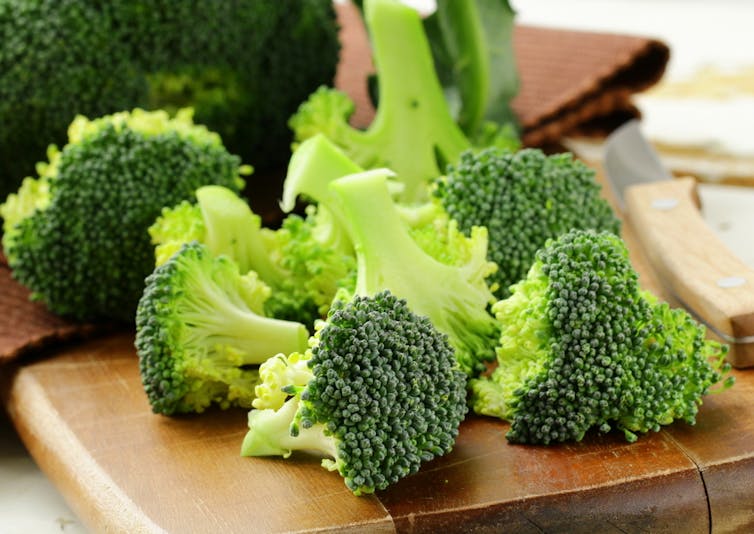
8. Green Beans
Green beans have higher levels of antioxidants when they are baked, microwaved, griddled or even fried as opposed to boiled or pressure cooked.
9. Kale
Kale is healthiest when lightly steamed as it deactivates enzymes that prevent the body from using the iodine it needs for the thyroid, which helps regulate your metabolism.
For all vegetables, higher temperatures, longer cooking times and larger quantities of water cause more nutrients to be lost. Water-soluble vitamins (C and many of the B vitamins) are the most unstable nutrients when it comes to cooking because they leach out of vegetables into the cooking water. So avoid soaking them in water, use the least amount of water when cooking and use other cooking methods, such as steaming or roasting. Also, if you have cooking water left over, use it in soups or gravies as it holds all the leached nutrients.![]()
Laura Brown, Senior Lecturer in Nutrition, Food, and Health Sciences, Teesside University
This article is republished from The Conversation under a Creative Commons license. Read the original article.
Ethereal, evocative, and inventive: why the music of Kate Bush spans generations

Keen observers of popular culture will have become aware of the recent inclusion of Kate Bush’s 1985 song Running Up That Hill into the storyline of the widely-watched Netflix show Stranger Things. As a result of this inclusion, Kate Bush’s classic song was catapulted (again) into the mainstream musical scene, experiencing a true resurgence in popularity and ranking highly in download charts around the world.
Kate Bush herself provided a response by issuing a rare message on social media about the whole affair, not only declaring her enthusiasm over Stranger Things, but also her gratitude for its ability to bestow “a new lease of life” upon her now famous song.
As a result of the boost in popularity of Running Up That Hill, there has been great talk of a whole new group of music listeners from the Gen Z demographic “discovering” Kate Bush’s work, and becoming instantly enamoured with it.
An anecdotal look would seem to suggest that, somehow, Kate Bush is reaching greater fame in 2022 than she did during the 1980s, a prolific creative period that many would rank (unkindly) as the peak of her musical journey. And yet, while there is no denying the instant hold that Kate Bush’s music seems to be having on current listeners, there is definitely something strange in suggesting that her fame was only moderate in previous decades.
Indeed, Kate Bush was popular during and after the ‘80s, especially in the UK, and her music has been continuously well-received by a growing number of avid fans since.
In And Out Of The Mainstream
Since her debut in the late 1970s, Kate Bush has released over 25 UK Top 40 singles, including Babooshka (#5, 1980), Hounds of Love (#18, 1986), Rubberband Girl (#12, 1993), The Red Shoes (#21, 1994), and King of the Mountain (#4, 2005).
The 2022 impact of Stranger Things on fans of her music only signals cycles of discovery, re-discovery, and re-appreciation that have been characteristic of Kate Bush’ music and performances ever since she first broke onto the scene as a decidedly avant-garde artist in 1978. Her now well-known hit Wuthering Heights, reached #1 in the UK Singles charts.
So, one is left to wonder as to the reason for Kate Bush’s long-standing appeal. While there are likely many different reasons for this – undoubtedly including the ever-changing circumstances of individual music listeners – there are certainly aspects of Kate Bush’s music, performances and perhaps even persona that feed her enduring attraction.
Experimental And Innovative
Kate Bush’s music was undoubtedly experimental and innovative in the late '70s and '80s. Its seemingly open disregard for the dominant musical trends of the time conferred upon her songs a certain out-of-time quality, which transformed and materialised into a timeliness appeal.
Her music’s refusal to fit into strict categories of genre and audience classification is perhaps what makes it able to seemingly morph according to situation, attuning itself to changing tastes, and squeezing itself into the evolving bounds of cultural relevance.
In addition to the very particular sound qualities of her music, one must also take into account the visual appeal of Kate Bush’ actual performances. Her music videos, where she is known to display arresting, sinuous choreographies and floating gowns, create a dream-like atmosphere.
While a touch of the late '70s and '80s can certainly be spotted in her videos, with the typical soft-focus lenses of the time making an obvious appearance, her performances are beautifully strange and suggestively haunting. The choreography seen in the video for Wuthering Heights is particularly well-known in this respect. Here, Kate sports an arresting, floaty red dress, and dances lithely in a natural landscape, incorporating mesmerising movements into her routine, while a light mist surrounds her.
The recurring combination of unconventional sounds and visuals is arguably what established Kate Bush as a distinct icon: one who is not only instantly recognisable for her almost intoxicating individuality, but who is also seemingly unfettered by the restrictions of neither time nor space.
A Contemporary Icon
There is no doubting the fact that Kate Bush’s lyrics speak to a variety of identities and desires. She has been credited as an extremely influential figure by contemporary artists such as Lady Gaga, Tori Amos, and Florence + The Machine.
Unavoidably, there is a lot of nostalgia involved in the constant re-discovery of Kate Bush’s music as well, especially for those fans whose memories are attached to her songs from different moments in time. And yet, there also seems to be something more peculiar at play. Kate Bush’s music has a certain nostalgic feel to it, even if new fans and listeners do not have any actual memories of the past associated with her songs.
There is an intimate sense of longing that is interlaced within the fabric her work: a desire to feel, to experience, and to find oneself, which makes her performances so captivating. It is perhaps this definitive characteristic that maintains Kate Bush’s multi-generational appeal, as her music continues to speak to a multitude of fans across the years.![]()
Lorna Piatti-Farnell, Professor of Film, Media, and Popular Culture, Auckland University of Technology
This article is republished from The Conversation under a Creative Commons license. Read the original article.
Woodward and Bernstein didn’t bring down a president in Watergate – but the myth that they did lives on
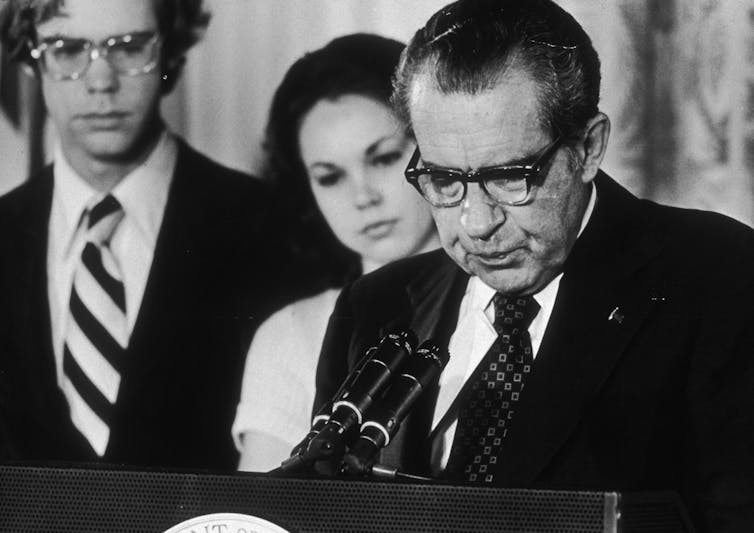
In their dogged reporting of the Watergate scandal, Washington Post reporters Bob Woodward and Carl Bernstein uncovered the crimes that forced Richard Nixon to resign the presidency in August 1974.
That version of Watergate has long dominated popular understanding of the scandal, which unfolded over 26 months beginning in June 1972.
It is, however, a simplistic trope that not even Watergate-era principals at the Post embraced.
For example, the newspaper’s publisher during Watergate, Katharine Graham, pointedly rejected that interpretation during a program 25 years ago at the now-defunct Newseum in suburban Virginia.
“Sometimes, people accuse us of ‘bringing down a president,’ which of course we didn’t do, and shouldn’t have done,”Graham said. “The processes that caused [Nixon’s] resignation were constitutional.”
Graham’s words, however accurate and incisive, scarcely altered the dominant popular interpretation of Watergate. If anything, the intervening 25 years have solidified the “heroic-journalist” myth of Watergate, which I address and dismantle in my book “Getting It Wrong: Debunking the Greatest Myths in American Journalism.”
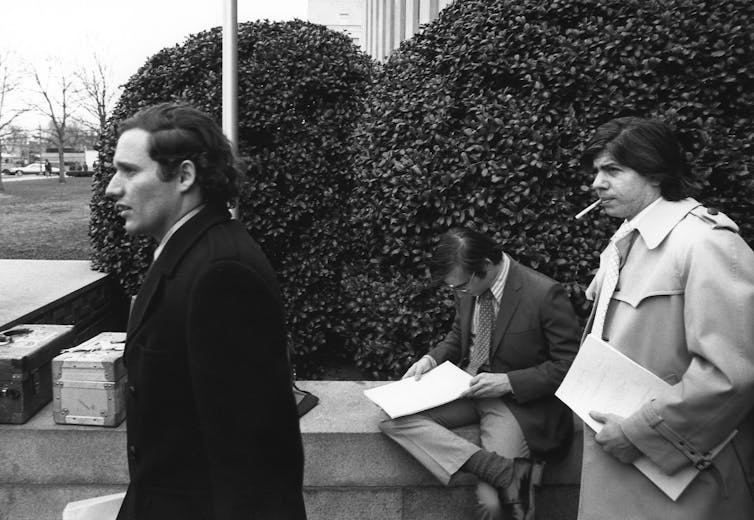
Impact Exaggerated
However popular, the heroic-journalist myth is a vast exaggeration of the effect of their work.
Woodward and Bernstein did disclose financial links between Nixon’s reelection campaign and the burglars arrested June 17, 1972, at headquarters of the Democratic National Committee, in what was the signal crime of Watergate.
They publicly tied prominent Washington figures, such as Nixon’s former attorney general, John Mitchell, to the scandal.
They won a Pulitzer Prize for the Post.
But they missed decisive elements of Watergate, notably the payment of hush money to the burglars and the existence of Nixon’s White House tapes.
Nonetheless, the heroic-journalist myth became so entrenched that it could withstand disclaimers by Watergate-era principals at the Post such as Graham. Even Woodward has disavowed the heroic-journalist interpretation, once telling an interviewer that “the mythologizing of our role in Watergate has gone to the point of absurdity, where journalists write … that I, single-handedly, brought down Richard Nixon.
"Totally absurd.”
So why not take Woodward at his word? Why has the heroic-journalist interpretation of Watergate persisted through the 50 years since burglars linked to Nixon’s campaign were arrested at the Watergate complex in Washington?
Glosses Over Intricacies
Like most media myths, the heroic-journalist interpretation of Watergate rests on a foundation of simplicity. It glosses over the scandal’s intricacies and discounts the far more crucial investigative work of special prosecutors, federal judges, the FBI, panels of both houses of Congress, and the Supreme Court.
It was, after all, the court’s unanimous ruling in July 1974, ordering Nixon to surrender tapes subpoenaed by the Watergate special prosecutor, that sealed the president’s fate. The recordings captured Nixon, six days after the burglary, agreeing to a plan to deter the FBI from pursuing its Watergate investigation.
The tapes were crucial to determining that Nixon had obstructed justice. Without them, he likely would have served out his presidential term. That, at least, was the interpretation of the late Stanley Kutler, one of Watergate’s leading historians, who noted: “You had to have that kind of corroborative evidence to nail the president of the United States.”
The heroic-journalist myth, which began taking hold even before Nixon resigned, has been sustained by three related influences.
One was Woodward and Bernstein’s “All the President’s Men,” the well-timed memoir about their reporting. “All the President’s Men” was published in June 1974 and quickly reached the top of The New York Times bestseller list, remaining there 15 weeks, through Nixon’s resignation and beyond. The book inescapably promoted the impression Woodward and Bernstein were vital to Watergate’s outcome.
More so than the book, the cinematic adaptation of “All the President’s Men” placed Woodward and Bernstein at the decisive center of Watergate’s unraveling. The movie, which was released in April 1976 and starred Robert Redford and Dustin Hoffman, was relentlessly media-centric, ignoring the work of prosecutors and the FBI.
The book and movie introduced Woodward’s super-secret source, “Deep Throat.” For 31 years after Nixon’s resignation, Washington periodically engaged publicly in guessing games about the source’s identity. Such speculation sometimes pointed to W. Mark Felt, a former senior FBI official.
Felt brazenly denied having been Woodward’s source. Had he been “Deep Throat,” he once told a Connecticut newspaper, “I would have done better. I would have been more effective.”
The “who-was-Deep-Throat” conjecture kept Woodward, Bernstein and the heroic-journalist myth at the center of Watergate conversations. Felt was 91 when, in 2005, he acknowledged through his family’s lawyer that he had been Woodward’s source after all.
It’s small wonder that the heroic-journalist myth still defines popular understanding of Watergate. Other than Woodward and Bernstein, no personalities prominent in Watergate were the subjects of a bestselling memoir, the inspiration for a star-studded motion picture, and the protectors of a mythical source who eluded conclusive identification for decades.![]()
W. Joseph Campbell, Professor of Communication Studies, American University School of Communication
This article is republished from The Conversation under a Creative Commons license. Read the original article.
NASA to launch 3 rockets from Northern Territory in boost for Australian space efforts
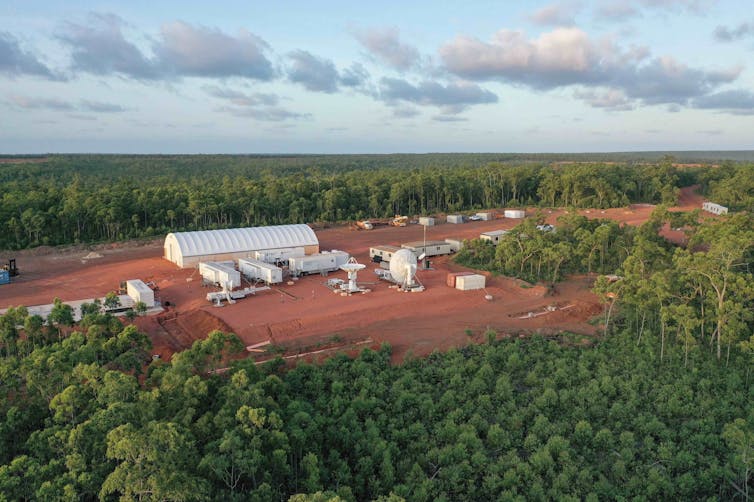
Over the next month, NASA will launch three rockets from the Arnhem Space Centre in the Northern Territory on the Dhupuma Plateau, near Nhulunbuy. The rockets are 13 metre “sounding” rockets that will not reach orbit but will take scientific observations.
The launches represent a number of firsts for the Australian space industry. They also represent a major step forward for commercial space operators, as well as signalling the opportunity for future joint projects between Australia and the United States.
The Launches
The Arnhem Space Centre is owned and operated by a commercial operator, Equatorial Launch Australia. It is located on the land of the Gumatj people, who as the traditional custodians of the land, have been consulted as part of the launch approval process.
Gumatj Corporation chair Djawa Yunupingu told the ABC last year the launch plans are “a step towards the future for our people”.
This is the first time NASA has conducted a rocket launch from a commercial facility outside the US. This involves a significant logistical undertaking, with each rocket delivered to the launch site via barge.
More than 70 NASA personnel will travel to the NT to support the launch and the scientific program.
The rockets have been designed and built by NASA and will be used for scientific investigations into the physics of the Sun, astrophysics and the type of planetary science we can only conduct in the southern hemisphere. After the launches, NASA says it will clean up all material such as casing and payloads and return it to the US.
The NASA contract was first announced in 2019. However, COVID lockdowns and travel restrictions have delayed the launches until now.
What Else Is Likely To Be Launched From This Site?
Equatorial Launch Australia also plans to construct a larger launch facility, with three launch pads, accommodating larger rockets and payloads.
Several more launches are planned this year. The company is aiming to have 50 or more launches a year by 2024 and 2025.
What Does This Mean For The Future Of The Australian Space Industry?
The Arnhem Space Centre is one of three proposed commercial launch sites in Australia.
In September 2020 another operator, Southern Launch, conducted sub-orbital launches from its Koonibba Test Range in South Australia, which is operated with the Koonibba Community Aboriginal Corporation.
Southern Launch has also recently obtained a licence to operate its own commercial launch site, Whaler’s Way Orbital Launch Complex, on the Eyre Peninsula.
Gilmour Space Technologies has applied for a licence to undertake launches from Bowen in North Queensland. Its application is supported by the Queensland government and the Juru people, who are the traditional owners of the land. The company plans to build and launch its own rockets from this site.
Decades Of Disappointment
The development of an Australian launch capability will be a big step for the country’s space industry.
In the 1960s, Australia’s launch facilities at Woomera in South Australia were used as part of the European Launcher Development Organisation (ELDO) project.
In 1967, Australia became the fourth nation in the world to launch a domestic-built satellite from its own territory. That satellite, the WRESAT, was launched from Woomera on an American Redstone rocket, and stayed in orbit until early 1968.
However, Australia lost interest in launching rockets when ELDO relocated to French Guiana.
In the early 1990s, an American company expressed interest in building a launch facility in Australia. However, those plans never materialised.
Onwards And Upwards
In recent years, Australia’s interest in space science has been returning. However, even when the Australian Space Agency was created in 2018 there was some doubt over whether we would be able to carry out our own launches.
These latest developments make it clear we will. Prime Minister Anthony Albanese described the launches as a project to “bring together global and local industry to take Australia’s space sector into a new era”.
Australia has also signed the Artemis Accords, joining the Artemis program to return humans to the Moon and on to Mars. The Artemis Accords were developed by NASA as “a shared vision for principles, grounded in the Outer Space Treaty of 1967, to create a safe and transparent environment which facilitates exploration, science, and commercial activities for all of humanity to enjoy”.
Enrico Palermo, Head of the Australian Space Agency, said the Northern Territory launch would “further cement our reputation as a nation that global space players want to do business with”.
With new businesses and jobs at stake, this is an important move forward for Australia’s re-emergence as a serious space operator.![]()
Melissa de Zwart, Professor (Digital Technology, Security and Governance), Flinders University
This article is republished from The Conversation under a Creative Commons license. Read the original article.
65,000-year-old ‘stone Swiss Army knives’ show early humans had long-distance social networks
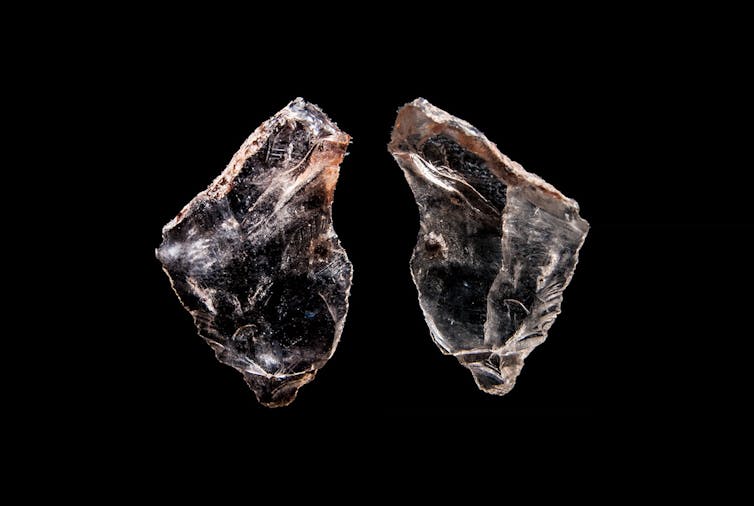
Humans are the only species to live in every environmental niche in the world – from the icesheets to the deserts, rainforests to savannahs. As individuals we are rather puny, but when we are socially connected, we are the most dominant species on the planet.
New evidence from stone tools in southern Africa shows these social connections were stronger and wider than we had thought among our ancestors who lived around 65,000 years ago, shortly before the large “out of Africa” migration in which they began to spread across the world.
Social Connection And Adaptation
The early humans weren’t always so connected. The first humans to leave Africa died out without this migratory success and without leaving any genetic trace among us today.
But for the ancestors of today’s people living outside of Africa, it was a different story. Within a few thousand years they had migrated into and adapted to every type of environmental zone across the planet.
Archaeologists think the development of social networks and the ability to share knowledge between different groups was the key to this success. But how do we observe these social networks in the deep past?
To address this question, archaeologists examine tools and other human-made objects that still survive today. We assume that the people who made those objects, like people today, were social creatures who made objects with cultural meanings.
Social Connectivity 65,000 Years Ago
A small, common stone tool gave us an opportunity to test this idea in southern Africa, during a period known as the Howiesons Poort around 65,000 years ago. Archaeologists call these sharp, multipurpose tools “backed artefacts”, but you can think of them as a “stone Swiss Army knife”: the kind of useful tool you carry around to do various jobs you can’t do by hand.
These knives are not unique to Africa. They are found across the globe and come in many different shapes. This potential variety is what makes these small blades so useful to test the hypothesis that social connections existed more than 60,000 years ago.
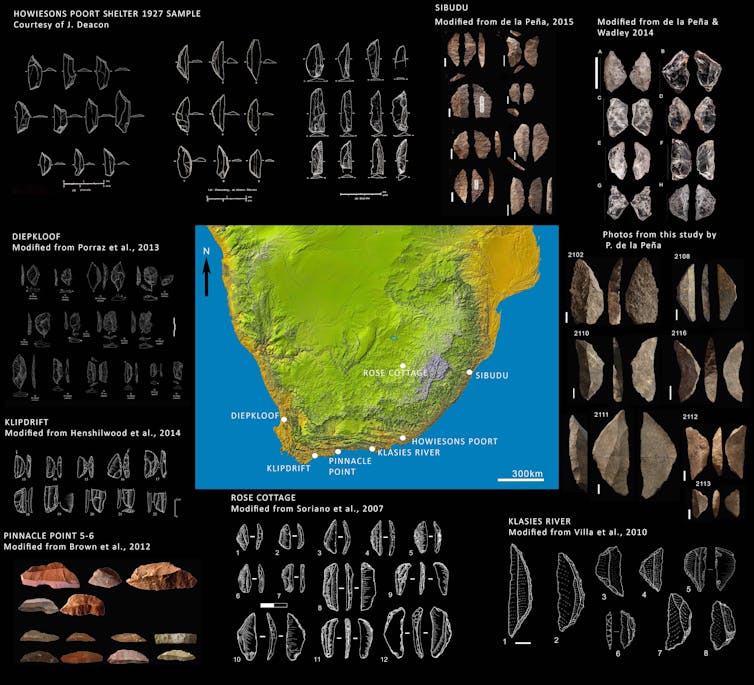
Across southern Africa, these blades could have been made in any number of different shapes in different places. However, around 65,000 years ago, it turns out they were made to a very similar template across thousands of kilometres and multiple environmental niches.
The fact they were all made to look so similar points to strong social connections between geographically distant groups across southern Africa at this time.
Importantly, this shows for the first time that social connections were in place in southern Africa just before the big “out of Africa” migration.
A Useful Tool In Hard Times
Previously it has been thought people made these blades in response to various environmental stresses, because just like the Swiss Army knife they are multi-functional and multi-use.
There is evidence the stone blades were often glued or bound to handles or shafts to make complex tools such as spears, knives, saws, scrapers and drills, and used as tips and barbs for arrows. They were used to process plant material, hide, feathers and fur.
While the making of the stone blade was not particularly difficult, the binding of the stone to the handle was, involving complex glue and adhesive recipes.
During the Howiesons Poort, these blades were produced in enormous numbers across southern Africa.
Data from Sibudu Cave in South Africa shows that their peak in production occurred during a very dry period, when there was less rain and vegetation. These tools were manufactured for thousands of years before the Howiesons Poort, but it is during this period of changing climatic conditions that we see a phenomenal increase in their production.
It is the multi-functionality and multi-use which makes this stone tool so flexible, a key advantage for hunting and gathering in uncertain or unstable environmental conditions.
A Strong Social Network Adapted To A Changing Climate
However, the production of this tool at this time cannot be seen as only a functional response to changing environmental conditions.
If their proliferation was simply a functional response to changing conditions, then we should see differences in different environmental niches. But what we see is similarity in production numbers and artefact shape across great distances and different environmental zones.
This means the increase in production should be seen as part of a socially mediated response to changing environmental conditions, with strengthening long-distance social ties facilitating access to scarce, perhaps unpredictable resources.
The similarity in the stone “Swiss Army knife” across southern Africa provides insight into the strength of social ties in this key period for human evolution. Their similarity suggests that it was the strength of this social network which allowed populations to prosper and adapt to changing climatic conditions.
These findings hold global implications for understanding how expanding social networks contributed to the expansion of modern humans out of Africa and into new environments across the globe.![]()
Amy Mosig Way, Lecturer in Archaeology, University of Sydney, and Archaeologist, Australian Museum
This article is republished from The Conversation under a Creative Commons license. Read the original article.
‘Transparency reports’ from tech giants are vague on how they’re combating misinformation. It’s time for legislation

On May 30, Meta, Google and Twitter released their 2021 annual transparency reports, documenting their efforts to curb misinformation in Australia.
Despite their name, however, the reports offer a narrow view of the companies’ strategies to combat misinformation. They remain vague on the reasoning behind the strategies and how they are implemented. They therefore highlight the need for effective legislation to regulate Australia’s digital information ecosystem.
The transparency reports are published as part of the Digital Industry (DIGI) Group’s voluntary code of practice that Meta, Google and Twitter signed onto in 2021 (along with Adobe, Apple, Microsoft, Redbubble and TikTok).
The DIGI group and its code of practice were created after the Australian government’s request in 2019 that major digital platforms do more to address disinformation and content quality concerns.
What Do The Transparency Reports Say?
In Meta’s latest report, the company claims to have removed 180,000 pieces of content from Australian Facebook and Instagram pages or accounts for spreading health misinformation during 2021.
It also outlines several new products, such as Facebook’s Climate Science Information Centre, aimed at providing “Australians with authoritative information on climate change”. Meta describes initiatives including the funding of a national media literacy survey, and a commitment to fund training for Australian journalists on identifying misinformation.
Similarly, Twitter’s report details various policies it implements to identify false information and moderate its spread. These include:
- alerting users when they engage with misleading tweets
- directing users to authoritative information when they search for certain key words or hashtags, and
- punitive measures such as tweet deletion, account locks and permanent suspension for violating company policies.
In the first half of 2021, Twitter suspended 7,851 Australian accounts and removed 51,394 posts from Australian accounts.
Google’s highlights that in 2021 it removed more than 90,000 YouTube videos from Australian IP addresses, including more than 5,000 videos with COVID-19 misinformation.
Google’s report further notes that more than 657,000 creatives were blocked from Australia-based advertisers, for violating the company’s “misrepresentation ads policies (misleading, clickbait, unacceptable business practices, etc)”.
Google’s Senior Manager for Government Affairs and Public Policy, Samantha Yorke, told The Conversation:
We recognise that misinformation, and the associated risks, will continue to evolve and we will reevaluate and adapt our measures and policies to protect people and the integrity of our services.
The Underlying Problem
In reading these reports, we should keep in mind that Meta, Twitter, and Google are essentially advertising businesses. Advertising accounts for about 97% of Meta’s revenue, 92% of Twitter’s revenue and 80% of Google’s.
They design their products to maximise user engagement, and extract detailed user data which is then used for targeted advertising.
Although they dominate and shape much of Australia’s public discourse, their core concern is not to enhance its quality and integrity. Rather, they hone their algorithms to amplify content that most effectively grabs users’ attention.
Having said that, let’s examine their transparency reports.
Who Decides What ‘Misinformation’ Is?
Despite their apparent specificity, the reports leave out some important information. First, while each company emphasises efforts to identify and remove misleading content, they don’t reveal the exact criteria through which they do this – or how these criteria are applied in practice.
There are currently no acceptable, enforceable standards on identifying misinformation (DIGI’s code of practice is voluntary). This means each company can develop and use its own interpretation of the term “misinformation”.
Given they don’t disclose these criteria in their transparency reports, it’s impossible to gauge the actual scope of the mis/disinformation problem within each platform. It’s also hard to compare the severity across the platforms.
A Twitter spokesperson told The Conversation its policies regarding misinformation focused on four areas: synthetic and manipulated media, civic integrity, COVID misinformation, and crisis misinformation. But it’s not clear how the policies are applied in practice.
Meta and YouTube (which is owned by Google’s parent company Alphabet) are also vague in describing how they apply their misinformation policies.

There Is Little Context
The reports also don’t provide enough quantitative context for their statements of content removal. While the companies do provide specific numbers of posts removed, or accounts acted against, it’s not clear what proportion of the overall activity these actions represent on each platform.
For example, it’s difficult to interpret the claim that 51,394 Australian posts were removed from Twitter in 2021 without knowing how many were hosted that year. We also don’t know what proportion of content was flagged in other countries, or how these numbers track over time.
And while the reports detail various features introduced to combat misleading information (such as directing users to authoritative sources), they don’t provide evidence as to their effectiveness in reducing harm.
What’s Next?
Meta, Google and Twitter are some of the most powerful actors in the Australian information landscape. Their policies can affect the well-being of individuals and the country as a whole.
Concerns over the harm caused by misinformation on these platforms have been raised in relation to the COVID-19 pandemic, federal elections and climate change, among other issues.
It’s crucial they operate on the basis of transparent and enforceable policies whose effectiveness can be easily assessed and independently verified.
In March, former prime minister Scott Morrison’s government announced that, if re-elected, it would introduce new laws to provide the Australian Communications and Media Authority “new regulatory powers to hold big tech companies to account for harmful content on their platforms”. It’s now up to Anthony Albanese’s government to carry this promise forward.
Local policymakers could take a lead from their counterparts in the European Union, who recently agreed on the parameters for the Digital Services Act. This act will force large technology companies to take greater responsibility for content that appears on their platforms.![]()
Uri Gal, Professor in Business Information Systems, University of Sydney
This article is republished from The Conversation under a Creative Commons license. Read the original article.
Battered by 9 years of Coalition government, the ABC now has a hard road of repair ahead

The Liberal-National Coalition government has been defeated, but the legacy of its nine-year onslaught on the ABC remains.
That onslaught consisted of relentless accusations of left-wing bias, a succession of pointless and enervating inquiries, punitive funding cuts, and the use of the ABC for target practice in the Coalition’s interminable climate and culture wars.
The government also joined with News Corporation in a pincer attack on the ABC. But worst of all, it stacked the board.
The Turnbull and Morrison governments routinely appointed to the board people not recommended by the independent merit-based selection process introduced by the Abbott government in 2013, in what turned out to be a piece of rank window-dressing.
Even so, when Scott Morrison took over from Turnbull as prime minister, he wasted no time in using an appearance on ABC television to warn the ABC board to “expect a bit more attention from me” if it didn’t “do better”.
In fact, the board was already stacked with people appointed by Turnbull’s communications minister, Mitch Fifield, outside the independent merit-based system.
Documents obtained at the time by The Guardian Australia showed Fifield had directly appointed five of the eight members then on the board, some of them having been rejected by the nominations panel. Fifield’s appointments included Vanessa Guthrie, chair of the Minerals Council of Australia, a fossil fuel lobby group.
On top of this, to replace chair Justin Milne, Morrison parachuted in his own captain’s pick for chair, Ita Buttrose, disregarding three recommendations from the merit panel.
In May last year, Morrison’s communications minister, Paul Fletcher, appointed three further members to fill vacancies on the board. Two of those – Peter Tonagh and Mario D’Orazio – were recommended by the independent nominations panel and one – Fiona Balfour – was not.
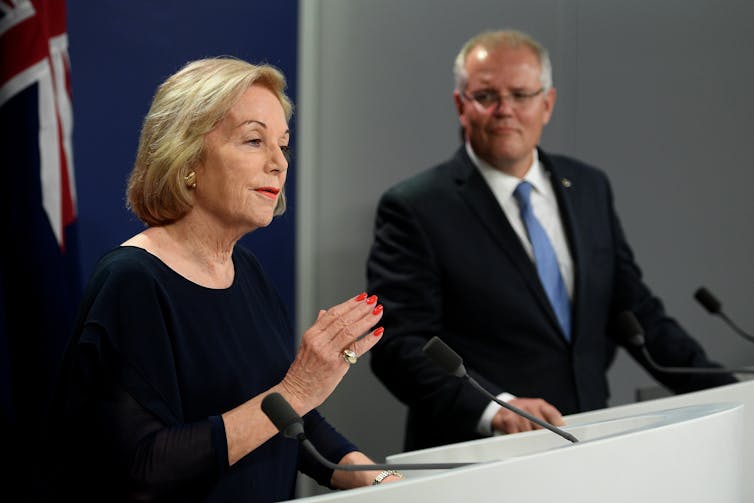
The net effect of these comings and goings is that the minister directly appointed three of the seven current non-executive directors – Buttrose, Balfour and Joseph Gersh – outside the nominations process.
A fourth, Peter Lewis, was recommended by a politically loaded panel, including News Corp columnist and former board member Janet Albrechtsen and former Liberal minister Neil Brown, after Lewis had produced a report showing how the Abbott government could cut the ABC’s funding.
None of this is to question the integrity of the individuals appointed – in fact, Buttrose has been a robust defender of the ABC. But it raises legitimate questions about how well equipped they are for the job.
For example, does the board as a whole have the guts to stand up for the ABC’s editorial independence, or even a decent understanding of what the term means? The backgrounds of its members, aside from staff member Jane Connors, do not suggest they have any experience of what it is like to do the heavy lifting in journalism, where editorial independence really counts.
Buttrose, Tonagh and Lewis have a ton of experience in corporate media management, and Buttrose of course was a journalist, but not of the kind that makes programs for 4 Corners.
Investigative journalism exposes the journalists doing it to a degree of sometimes personal risk and often severe political and legal pressure. It is essential they have a rock-solid belief that the organisation they work for has their backs. As the founding editor of The Sydney Morning Herald’s investigative unit in 1984, I can personally attest to this.
The ABC’s journalists would be entitled to harbour doubts about this after the board announced in May it was appointing an ombudsman to oversee the complaints system.
Not only is this yet another layer of bureaucracy on top of an onerous complaints system already in place, but worse by far is that the ombudsman will report directly to a board that has been politically stacked.
Given most of the complaints that cause trouble for the ABC come from politicians or well-connected people with partisan political interests, that amounts to an outright betrayal of editorial independence.
The decision to appoint an ombudsman was based on a recommendation by a former Commonwealth ombudsman, John McMillan, and Jim Carroll, an experienced commercial television executive, who carried out a review of the complaints process. However, they did not recommend the direct reporting line to the board.
This board decision had all the hallmarks of a pre-emptive buckle, the cutting witticism coined long ago by a radio producer to describe the way ABC management reacts to threats and pressure, real or anticipated.
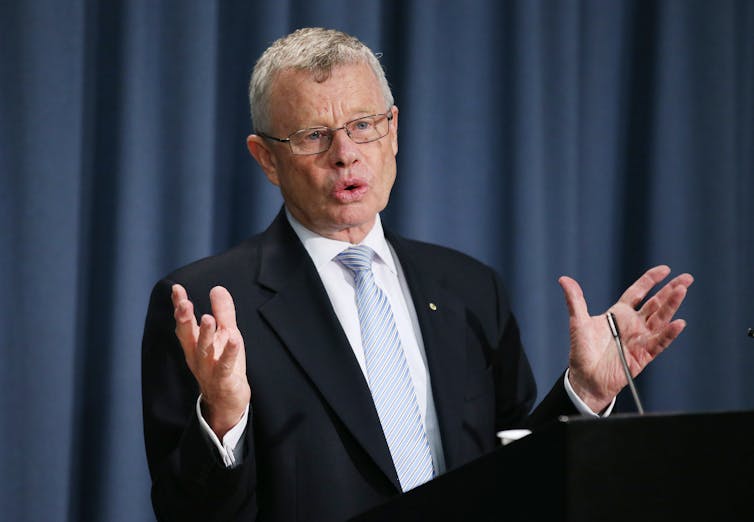
In this case it had the desired effect. A month after the ombudsman proposal had been announced, an attempt by Liberal Senator Andrew Bragg to set up a Senate inquiry into the ABC’s complaints system was abandoned.
The decision to review the complaints system was taken in the aftermath of an earlier external review into a complaint about a three-part television series called Exposed: The Ghost Train Fire. The ABC’s complaints unit rejected the complaint, but this decision was vociferously challenged by a group of people anxious to protect the legacy and reputation of the deceased former premier of New South Wales, Neville Wran. One segment in part three of this series contained an unjustifiable implication that Wran was an associate of an organised crime figure, Abe Saffron, who the program alleged was connected with the fire.
The review was conducted by distinguished political scientist Rodney Tiffen of the University of Sydney and the celebrated investigative journalist Chris Masters.
They found against that one segment but were otherwise generous in their praise of the series.
The ABC accepted the praise but rejected the negative finding.
Shortly afterwards, in October 2021, the board established the complaints system review by McMillan and Carroll.
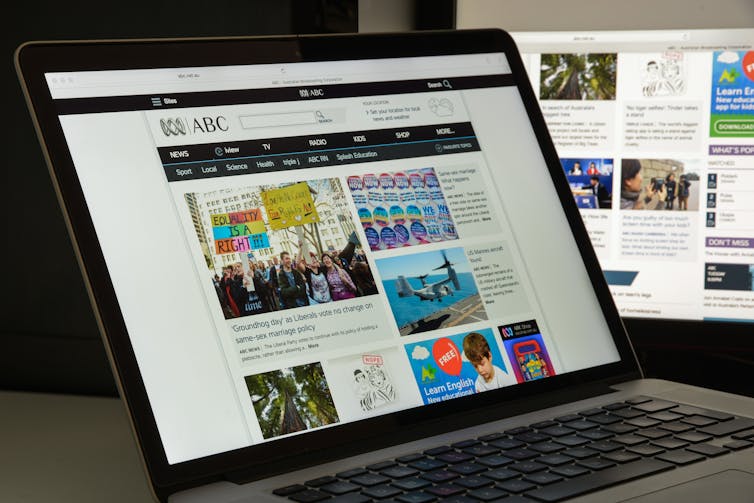
The upshot is that ABC journalists are now working in an environment where, if their story generates a complaint, it can end up in the hands of an ombudsman appointed by, and answerable to, a board, four of whose members have been either appointed by ministerial fiat outside the independent merit-based system or by a politically loaded panel.
Former ABC Melbourne broadcaster Jon Faine has described the existing complaints process as:
a burdensome sledgehammer that chews up work time on sometimes vexatious and often trivial […] things.
The process is also prone to being bypassed by powerful people who get in the ear of senior managers, leading to investigations outside the system.
McMillan and Carroll say their anecdotal impression is the ABC often resists criticism, particularly of high-profile programs. Doubtless there is truth in this. The self-serving reaction to the Ghost Train Fire report is an example.
However, a simple solution would be to have someone with substantial expertise in investigative journalism seconded to the complaints unit to deal with complex cases like that.
There are many ways to destroy a media institution, but weak boards and uncertain editorial direction are two of the most effective. Look at the Fairfax newspaper company. For more than 150 years it seemed impregnable. Then in 1987, a Fairfax scion, “young” Warwick, privatised the company. It could not sustain the ensuing $1.6 billion debt and its bankers had it auctioned off.
Then a succession of purblind boards and senior management left it mortally exposed to the digital revolution that gutted its classified advertising revenue. Journalistically it struggled to harmonise its print and online content, staff were laid off in droves, and the shrunken remains were absorbed into the Nine Entertainment organisation.
At the ABC a reset is necessary but will take time. The recent appointment as news director of Justin Stevens, a journalist with real runs on the board, encourages the belief that at least the journalists in his division will be given a safe place in which to do good journalism.
However, the big test for the ABC is whether the board as a whole can engender confidence in its willingness to defend the ABC’s editorial independence and send the message to senior management and all ABC journalists that this a place where journalists can do good work without having to look over their shoulder to see if the corporation has their back.![]()
Denis Muller, Senior Research Fellow, Centre for Advancing Journalism, The University of Melbourne
This article is republished from The Conversation under a Creative Commons license. Read the original article.
CE’s Corner June 2022
Support At Home Program – Let’s Talk Survey
- 84% as aged 65 years or older
- 46% of whom said they do not receive aged care services
- 22% as family members/carers
- 7% as members of the aged care workforce
- fees and charges; receiving value for money -97%
- services being offered – 96%
- support plans changing as needs change – 95%
- maintaining independence – 94%
- deciding how involved they would be the development of support plan- 92%
- feeling safe and carers respecting the fact they are delivering care and support in a person’s home
- not having to pay administrative cost on days when no service is provided
- having the flexibility to change providers without penalty
- reduced wait times – 30 days from assessment to receipt of services should be the norm
- transparency around fees and charges with a strong preference for government to stipulate a maximum cost for each service type
- program language being clear – no bureaucratic or legalese speak; no ambiguous use of terms or aphorisms/cliches
- having one’s mental health needs identified as part of the assessment process
- written reports provided following a complaint
- training for consumers and family/carers about the new program and the transition process
- consistency of service delivery
- having greater choice to access services the consumer wants, employ own staff, purchase equipment etc. directly, employ more competitively priced
- non-aged care services
- types of services available
- assessment process
- funding and how it will be allocated
- accountability for the timeliness and quality of services
- Reablement – how will it benefit older people
- Care Finders – how will assist people to navigate the new Program
- Training – what and how will be available to people as they transition to Program
- Clinical and non-clinical – how it will be provided to people with high complex care/support needs
- Introductions
- A COTA Australia presentation on the Overview and developments since its public release.
- Participants’ sharing insights and concerns about the new program
- Participant agreement on the priority questions we want Government to answer or share information highlighting a clear way forward
Calling Out Elder Abuse
Researchers On A Mission To Block Rogue Melanoma Protein
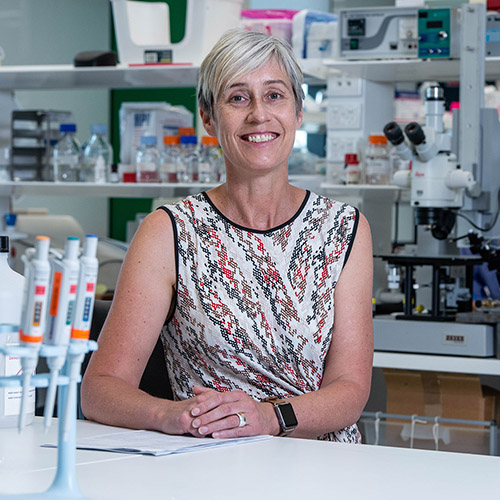

Vitamin D Deficiency Leads To Dementia
- low levels of vitamin D were associated with lower brain volumes and an increased risk of dementia and stroke
- genetic analyses supported a causal effect of vitamin D deficiency and dementia.
- in some populations as much as 17 per cent of dementia cases might be prevented by increasing everyone to normal levels of vitamin D (50 nmol/L).

Grandparent ‘Child Care’ A Win Across Generations

How should an Australian ‘centre for disease control’ prepare us for the next pandemic?

Over the past two years, Australians have become familiar with the threat of infectious disease outbreaks. COVID won’t be the last pandemic to affect our lives.
Early, aggressive restrictions were generally seen as necessary. But they also caused hardship, exacerbated inequality and undermined trust in government.
The pandemic exposed differences between states and territories. We saw inadequate national coordination of disease tracking, data analysis, lab capacity to process PCR tests, vaccination uptake and communication. This prompted renewed calls for the establishment of an Australian centre for disease control (CDC).
Before the election, Labor leader Anthony Albanese expressed the view that Australia’s COVID response had been undermined by a breakdown in our federated system and noted Australia was the only OECD country without a CDC. He committed to establishing one if elected.
So what should an Australian CDC look like? And how can it improve our response to future infectious disease outbreaks?
What Is A CDC?
There is no single definition of a CDC. Broadly, it’s a national agency that promotes public health through the control and prevention of disease and disability.
The US Centers for Disease Control and Prevention (US-CDC) employs more than 10,000 staff. It focuses on infectious diseases, food-borne diseases, environmental health, injury prevention, health promotion, and non-communicable diseases such as obesity and diabetes.
But the US-CDC has been criticised for being overly bureaucratic, lacking innovation and being “missing in action” during the COVID pandemic, when the Trump administration completely sidelined scientific guidance. This demonstrates the importance of such an entity being free from political interference.
Other examples include the European Centre for Disease Prevention and Control (ECDC), a networked European Union agency with a restricted focus on infectious diseases. It delivers disease surveillance and epidemic intelligence to guide regional and national responses in member states.

In the United Kingdom, the UK Health Security Agency (UKHSA) recently replaced Public Health England. It has a slightly broader focus on protecting people and communities from the impact of infectious diseases and chemical, biological and nuclear incidents.
The Public Health Agency of Canada has the broadest remit of all. It includes preventing disease and injury, responses to public health threats, promotion of physical and mental health, and providing information to support informed decision making.
What Does Australia Need?
In Australia, states and territories are legally responsible for public health protection and providing the infrastructure for disease surveillance and response. A national CDC would need to work within our unique federated system.
The COVID pandemic showed Australia lacks a rapidly responsive national mechanism to:
- collate, analyse and monitor disease surveillance data
- coordinate outbreak control responses
- evaluate the effectiveness of these responses
- undertake rapid research to inform policy and guide decision-making.
Comprehensive infectious disease surveillance and near real-time data analysis is critical for coordinating national disease control responses, such as restricting population movement or contact tracing.
This surveillance and analysis requires an experienced workforce with expertise in epidemiology, microbiology and infection prevention and control.

A new national system will need to improve on the current model, which has served us well in many respects, despite its limitations. The risk is that something hastily implemented can worsen the situation, by establishing less effective mechanisms, duplicating efforts and wasting resources.
Specifically, a new system will require more effective mechanisms for data collation and sharing between states and territories, as well as workforce upskilling and building of core capacities, such as genomic testing of bugs, in all states and territories.
A national CDC will need sufficient funding and a governance structure that allows effective engagement with academic experts and policy makers, with protection from government interference.
Most importantly, it will need a transparent process that provides independent evidence-based advice to government. Australians need assurance that public health responses are based on evidence not politics.
Recent outbreaks of Japanese encephalitis and monkeypox also highlight the need for coordination between human and animal disease surveillance.
The Way Forward
Following Labor’s election victory, there is risk that the establishment of an Australian CDC may be rushed through for a “quick win”. However, careful consideration and consultation is needed on how best to position such an entity.
It will need to engage with government and policymakers, while ensuring its decisions are independent, evidence-based and without political bias. It will also need to prioritise effective public communication and community engagement.
The best starting point is to define key principles that will guide its establishment and to commit to an open process that works closely with states and territories.
Important questions will need to be answered, such as whether an Australian CDC will encompass both infectious and non-communicable diseases, such as heart disease and diabetes. And where such a centre should be located to ensure it’s seen as a national asset without jurisdictional bias.
The ongoing impacts of COVID and multiple new threats make the need for concrete action to improve our national surveillance and response capacity increasingly urgent.![]()
Ben Marais, Associate Professor in Paediatrics and Child Health, University of Sydney; Jocelyne Basseal, Senior Executive Officer, Sydney Institute for Infectious Diseases, University of Sydney; Lyn Gilbert, Honorary Professor Faculty of Health and Medical Science, Univeristy of Sydney; Senior Researcher Sydney Institue for Infectious Disease, University of Sydney., University of Sydney, and Tania Sorrell, Professor, Clinical Infectious Diseases, Director, Sydney Institute for Infectious Diseases, University of Sydney
This article is republished from The Conversation under a Creative Commons license. Read the original article.
$132 Million Record Investment To Future-Proof The NSW SES
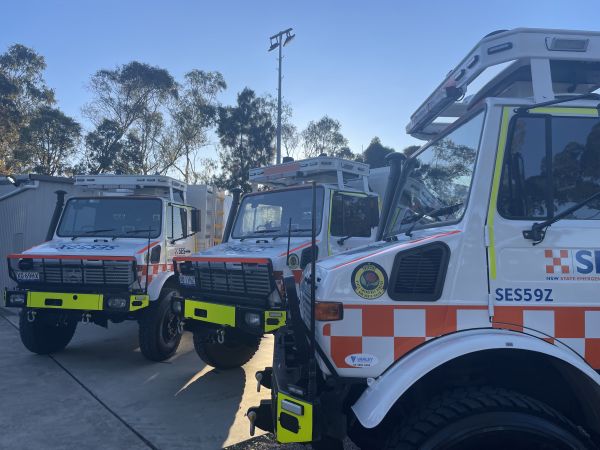 The NSW Government is making its single biggest investment ever in the NSW State Emergency Service (SES), with $132.7 million going towards its infrastructure, resources and staffing.
The NSW Government is making its single biggest investment ever in the NSW State Emergency Service (SES), with $132.7 million going towards its infrastructure, resources and staffing.- $58.7 million to upgrade 18 critical priority Unit facilities across the State;
- $43 million to split the existing Northern Zone into two new zones, and split the existing Western Zone into two new zones;
- $11.7 million to establish Zone Headquarters in the two new zones with Level 3 Incident Control Centre capabilities;
- $18 million to upgrade existing Zone Headquarters to Level 3 Incident Control Centres; and
- $1.3 million to develop a Facility Strategy and complete further detailed business cases to address the remainder of the recommendations from the 2021 independent review.
Energy Harvesting To Power The Internet Of Things
New Evidence About When, Where, And How Chickens Were Domesticated
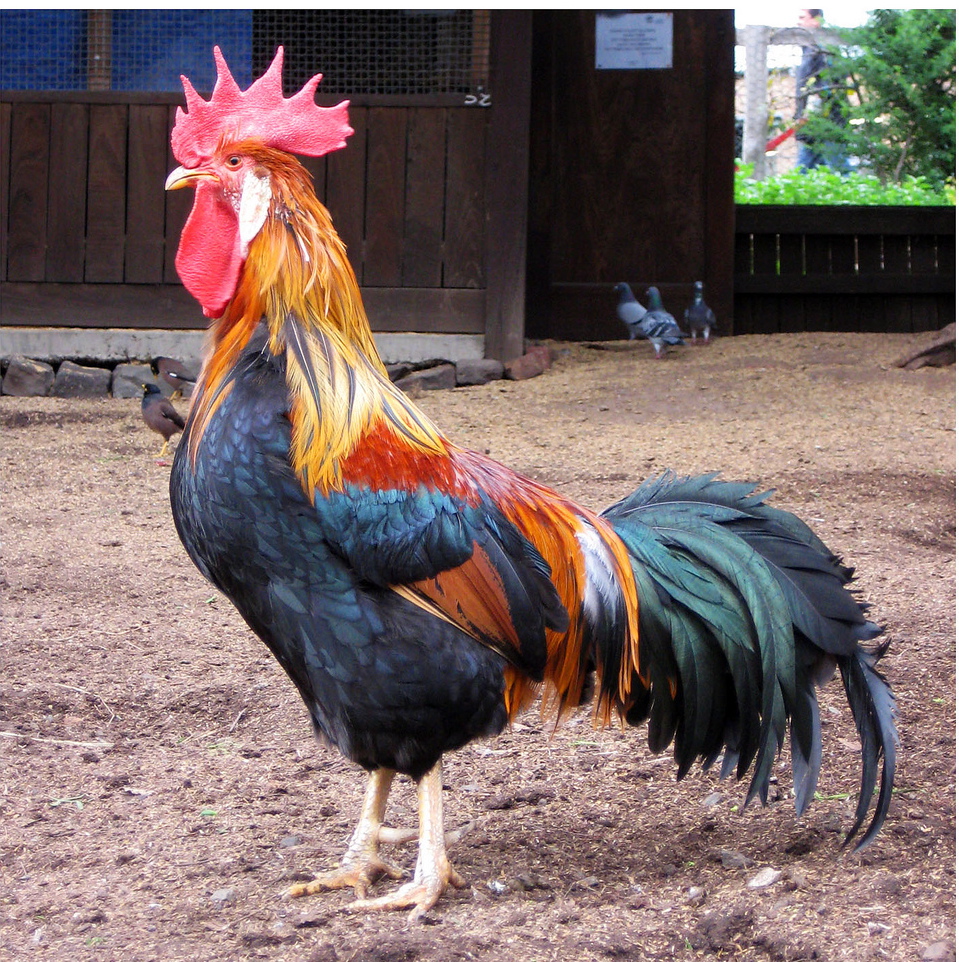
Scientists Discover New Molecule That Kills Hard-To-Treat Cancers
Paving The Way For Faster Computers, Longer-Lasting Batteries
Pre-Historic Wallacea: A Melting Pot Of Human Genetic Ancestries
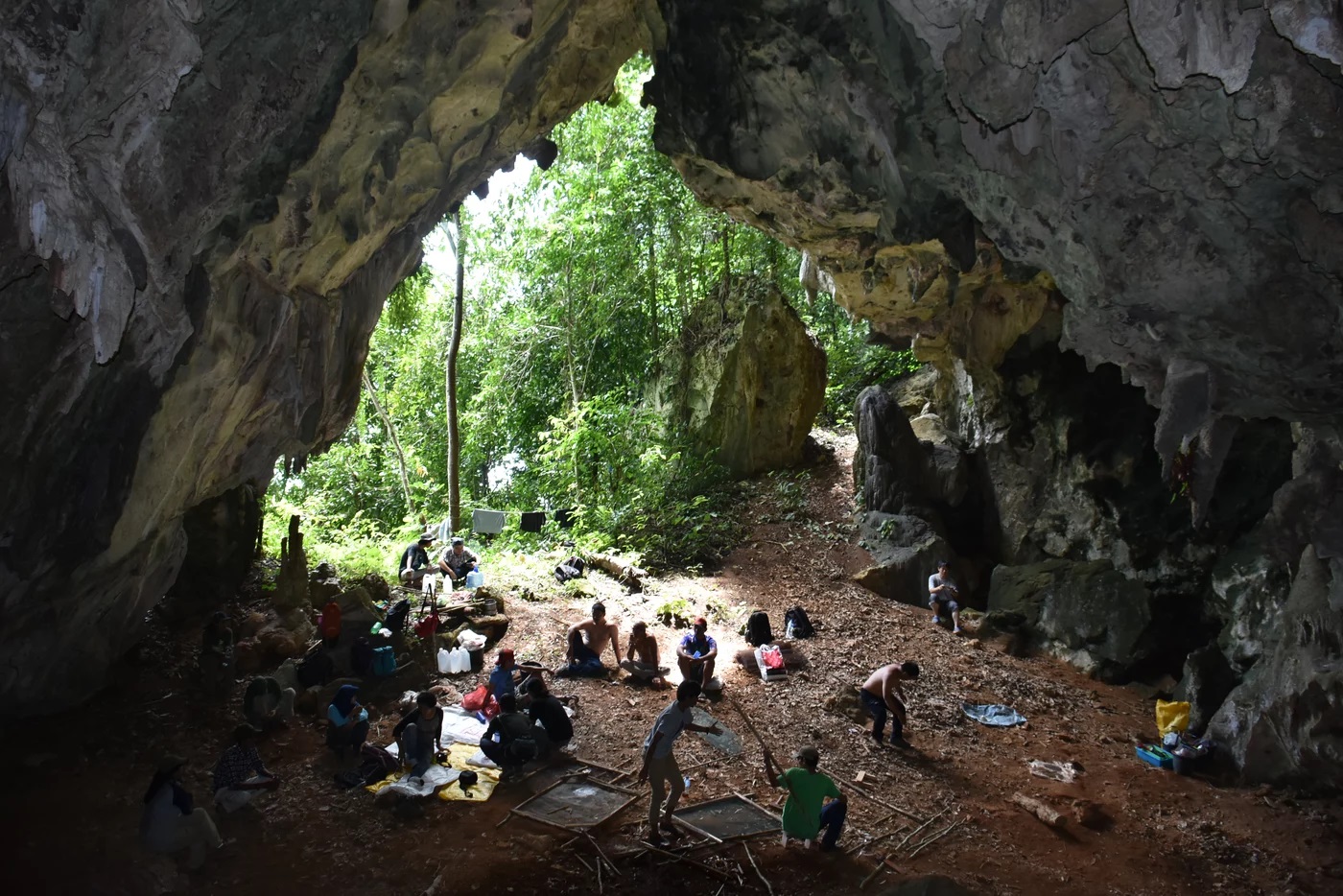
Stem Cell Research Reveals Detailed Genetic Roadmap Of Glaucoma
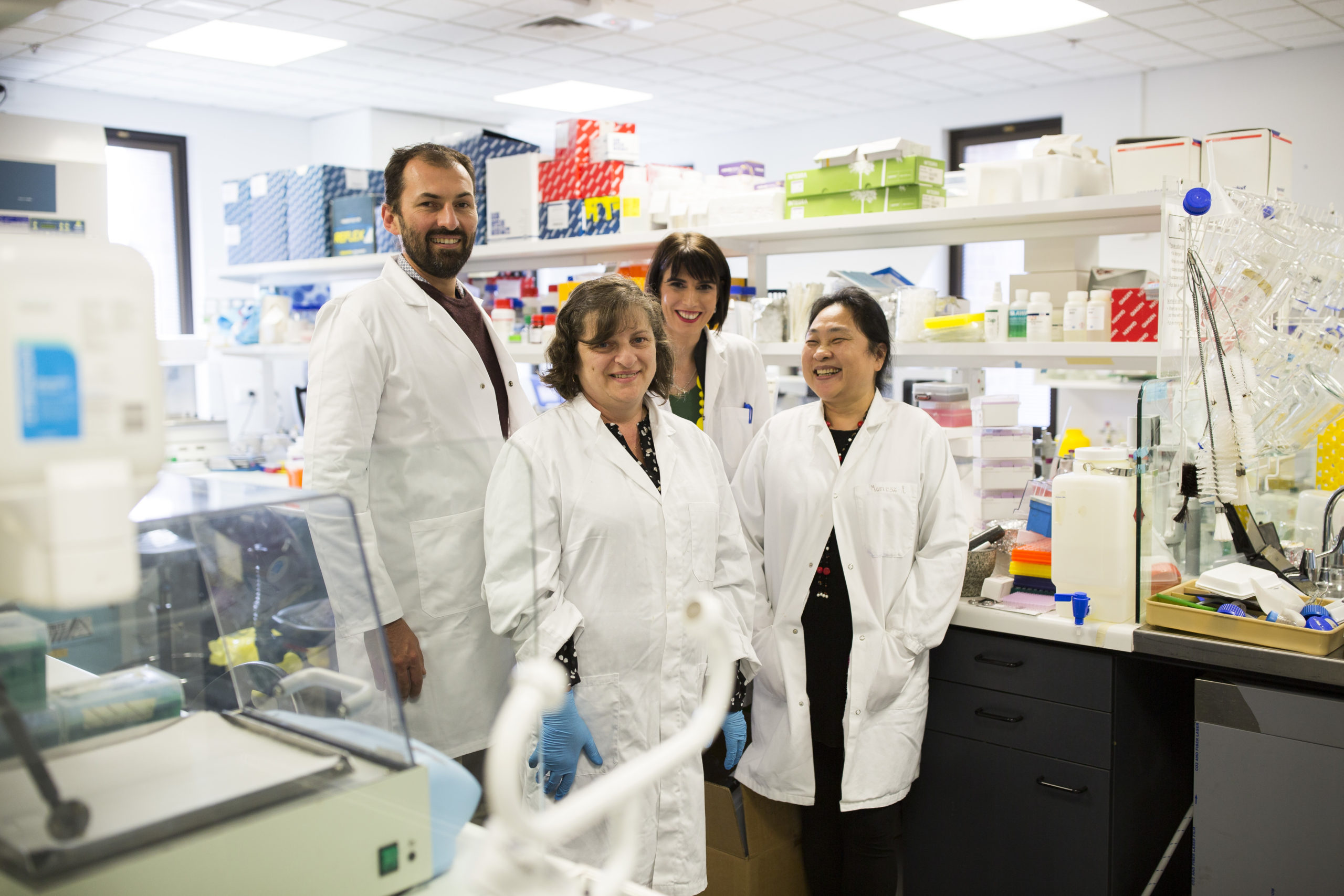
Good News On Blocking Hendra Virus
Could Used Beer Yeast Be The Solution To Heavy Metal Contamination In Water?
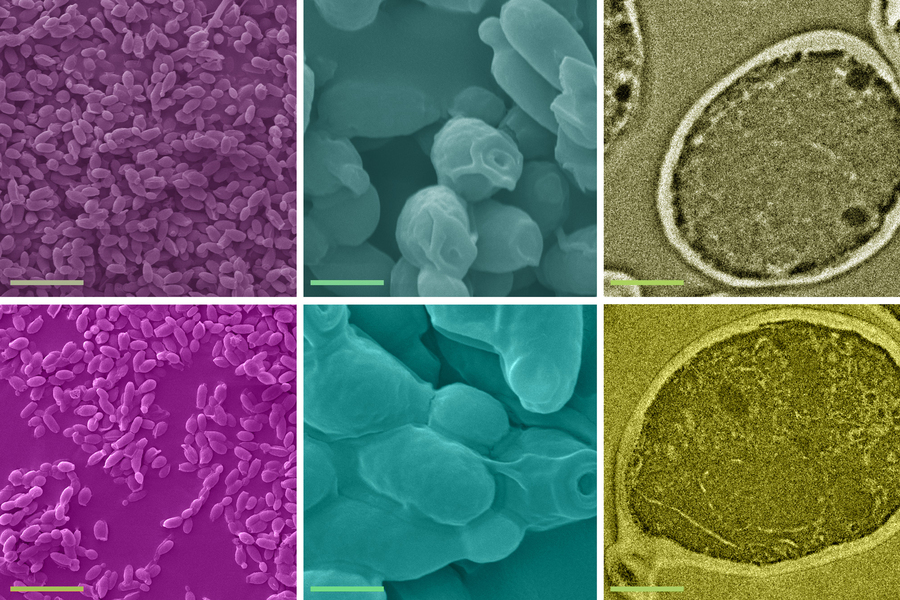
Disclaimer: These articles are not intended to provide medical advice, diagnosis or treatment. Views expressed here do not necessarily reflect those of Pittwater Online News or its staff.